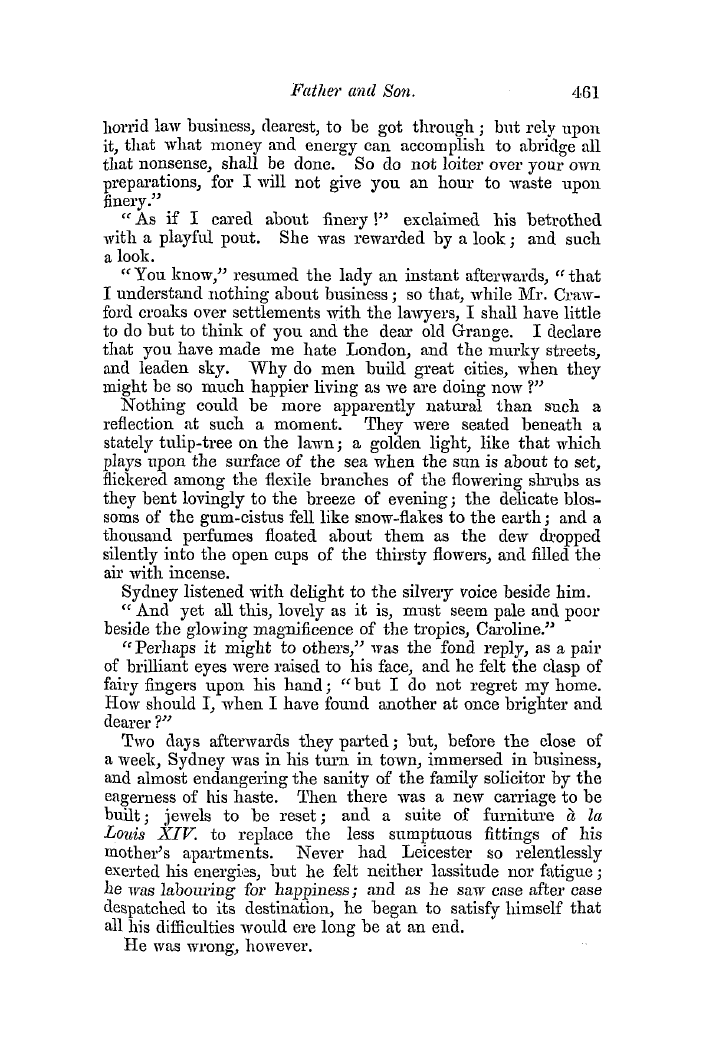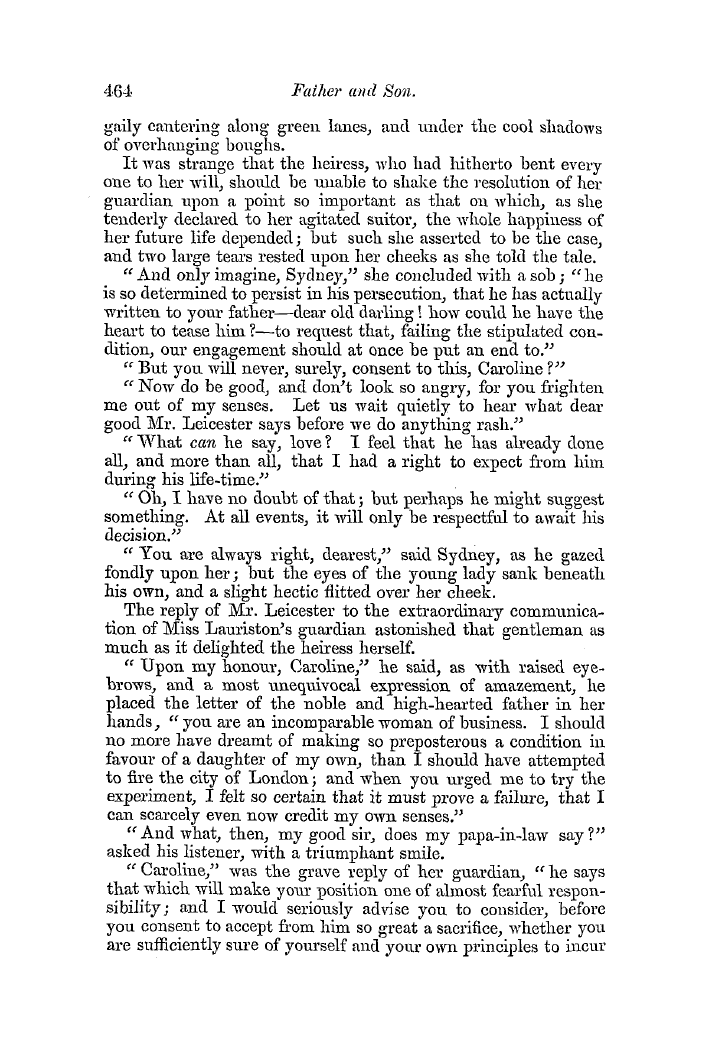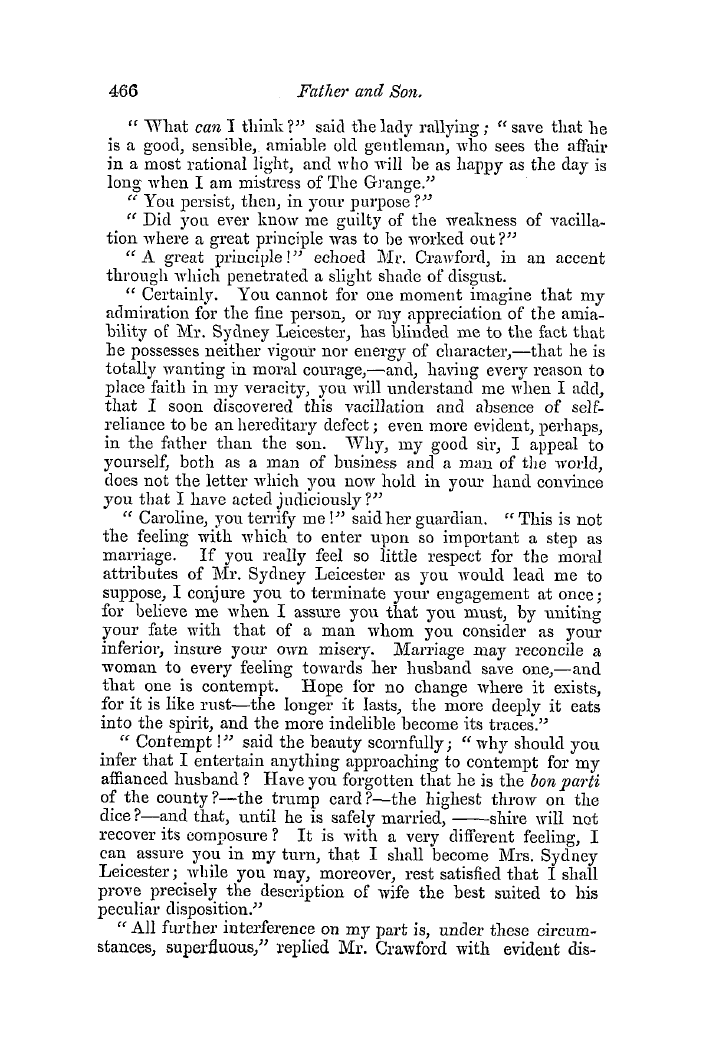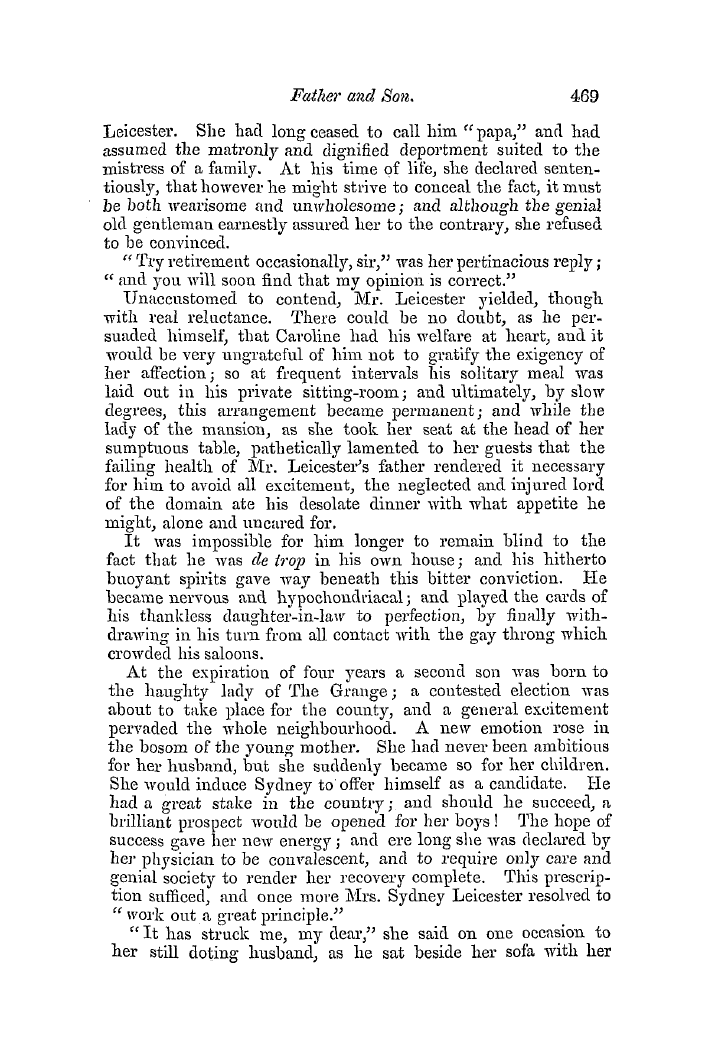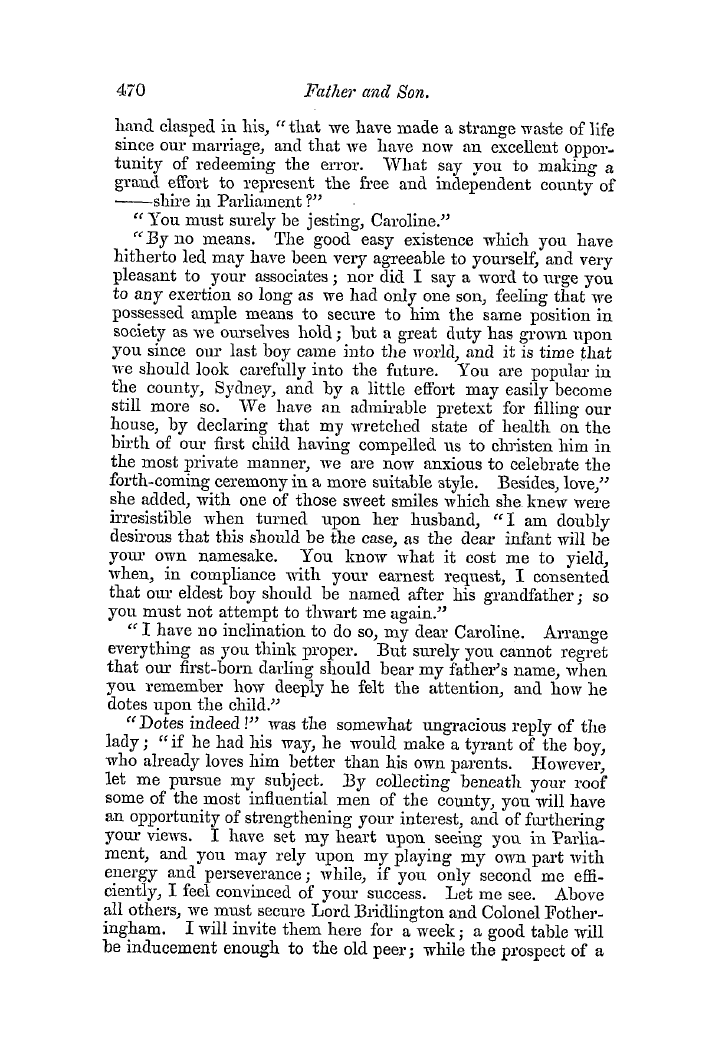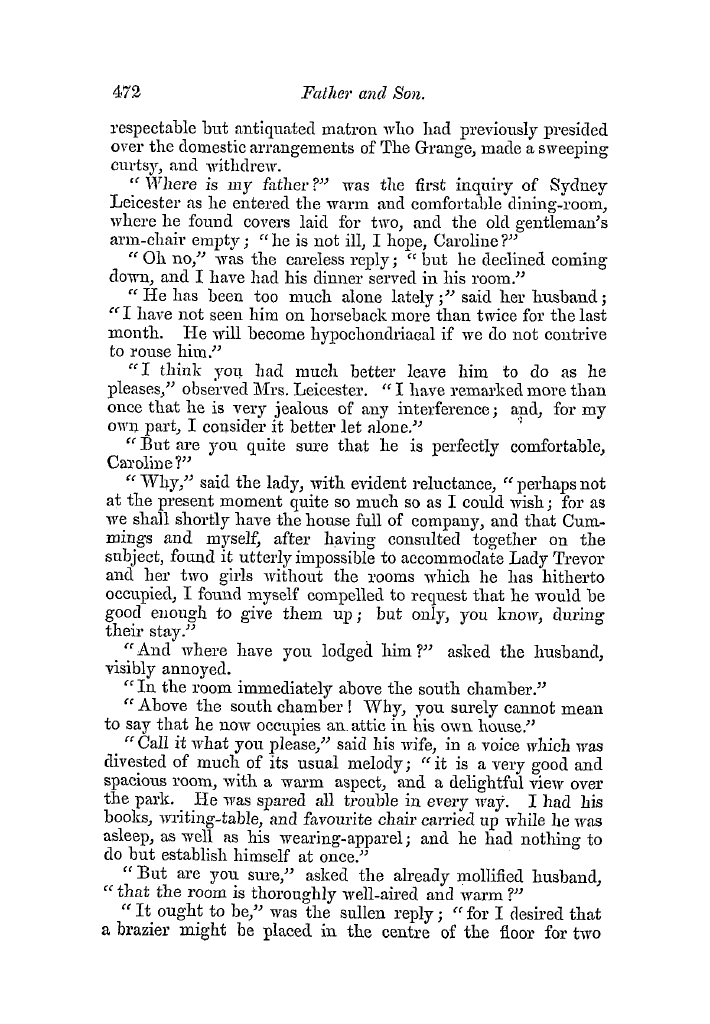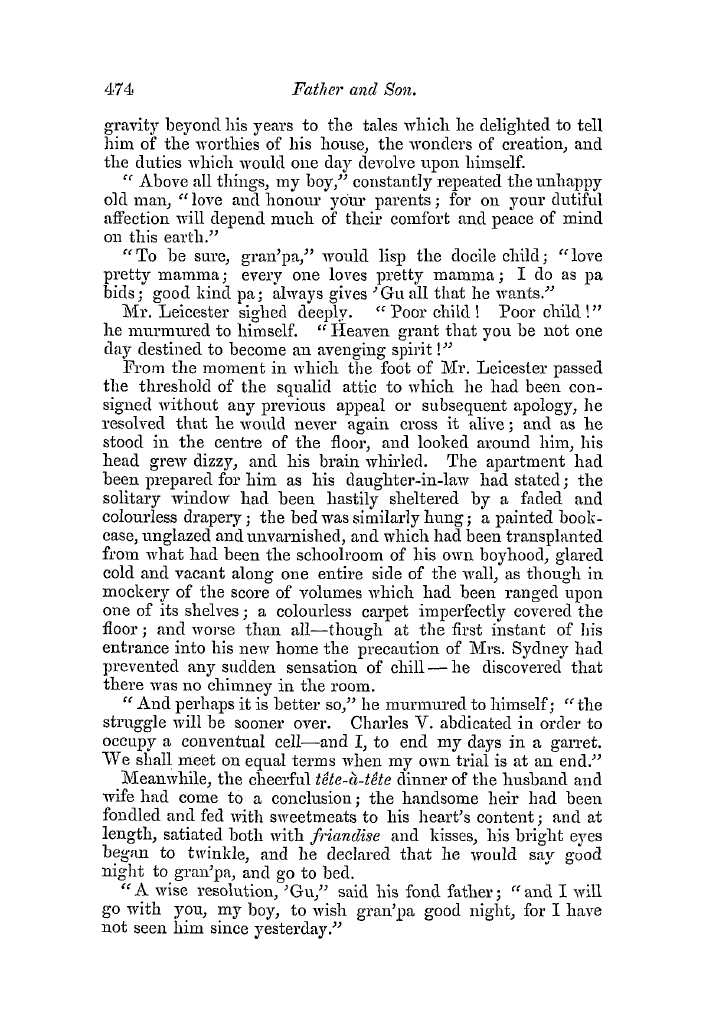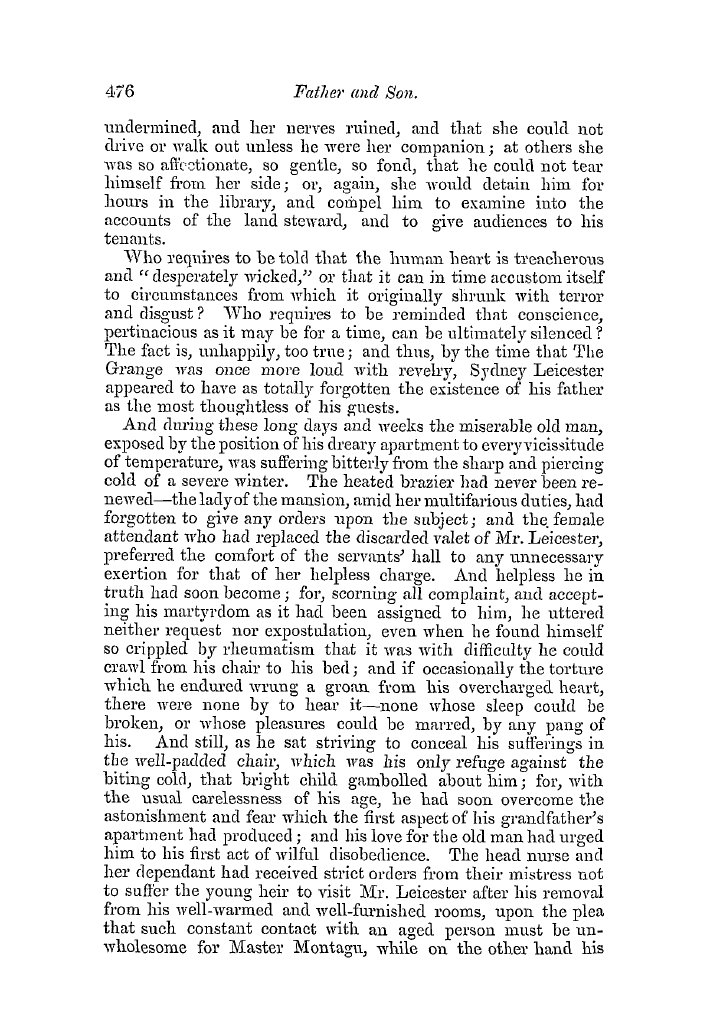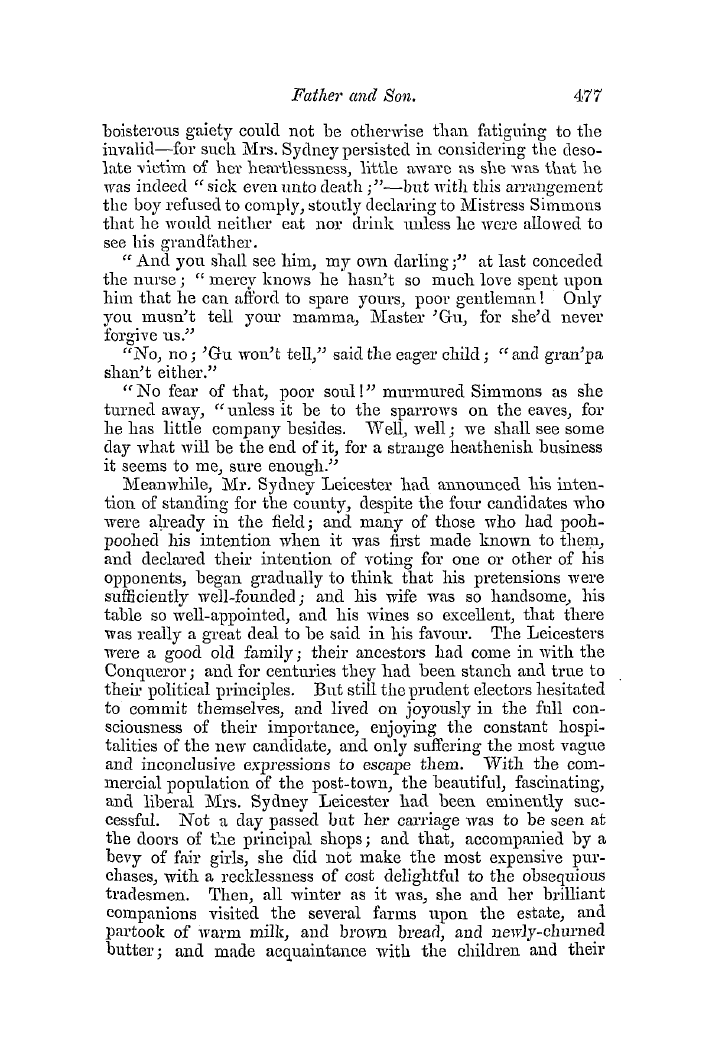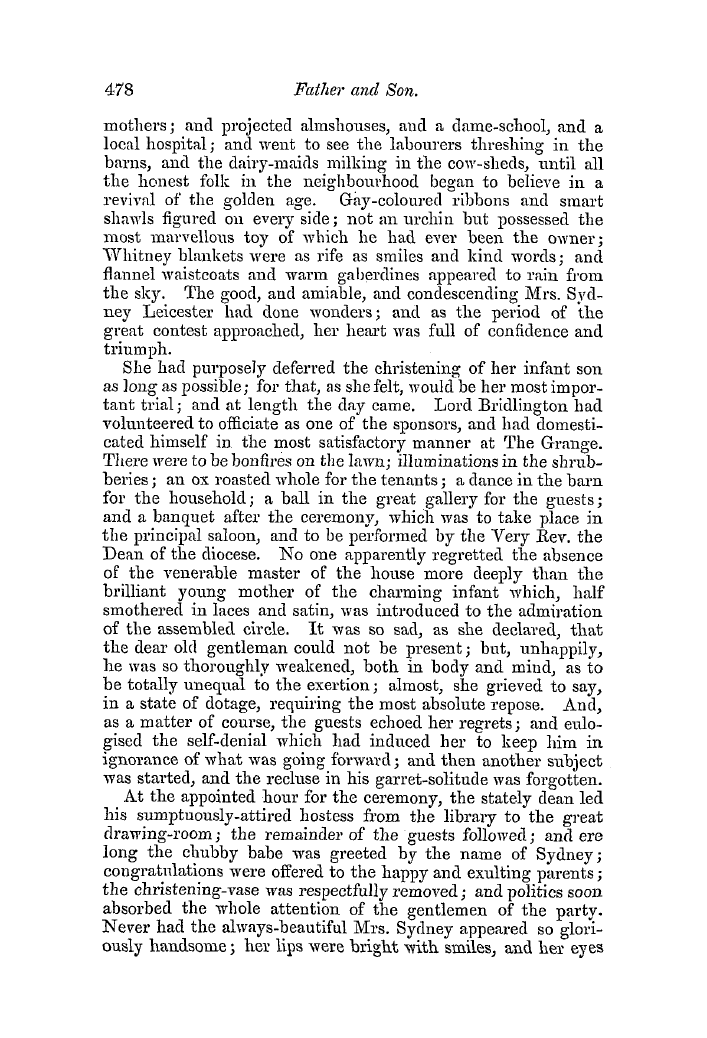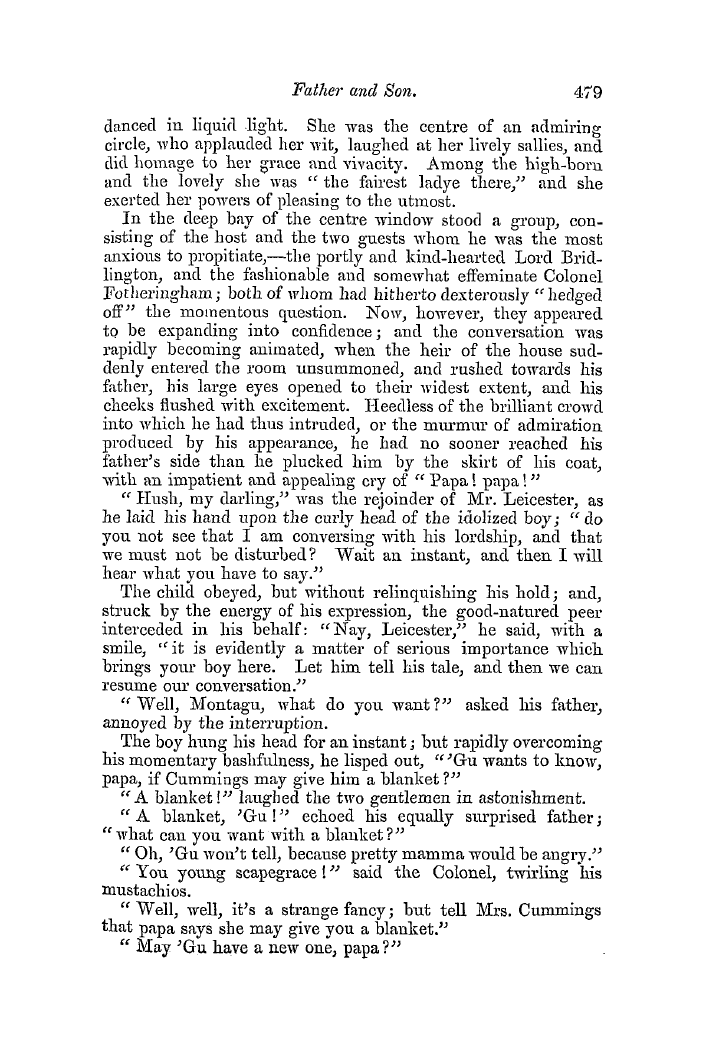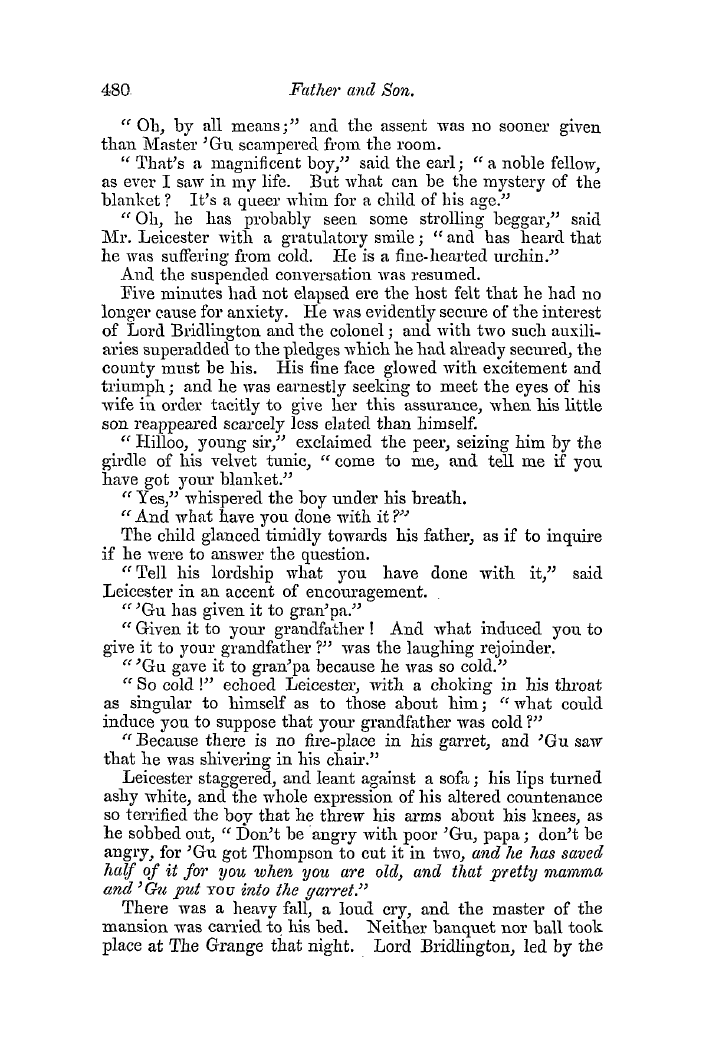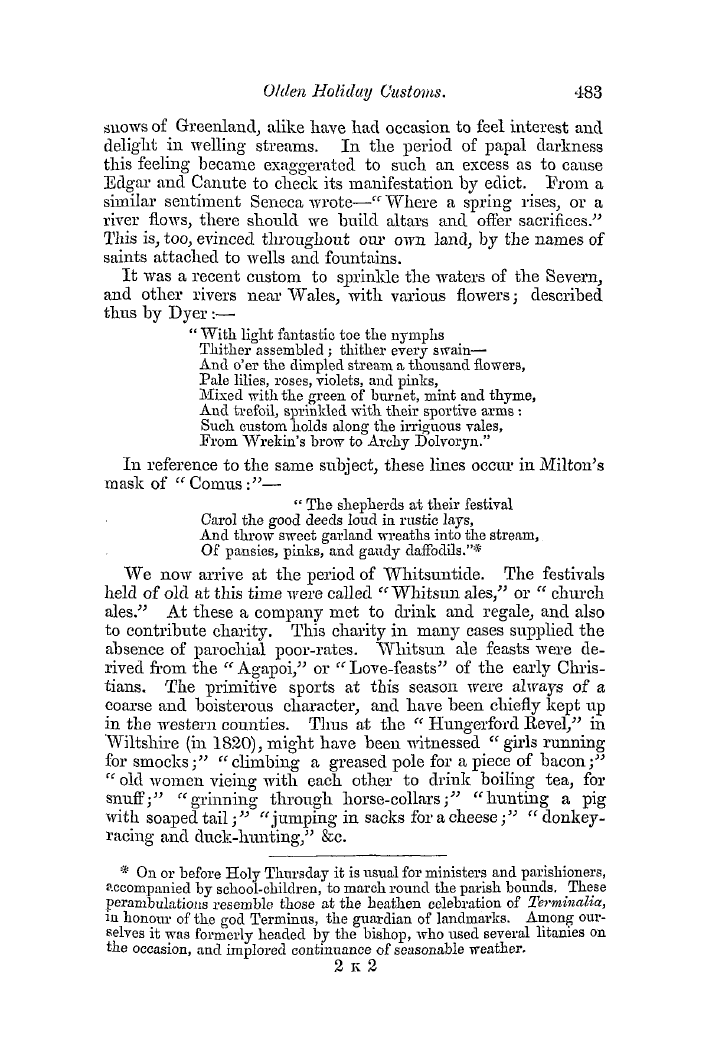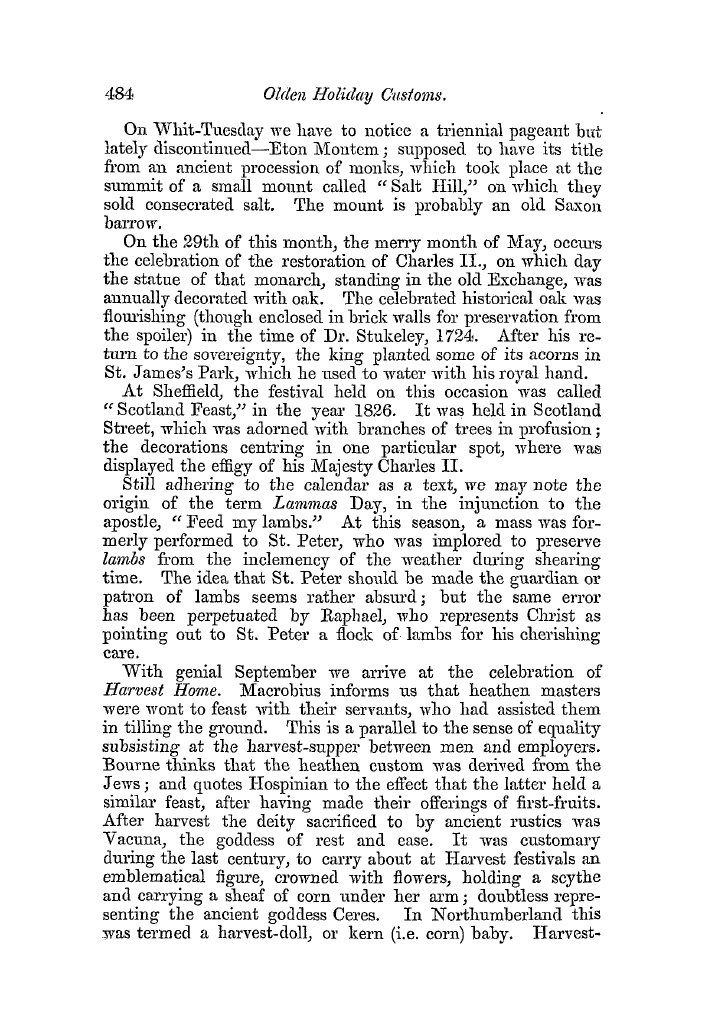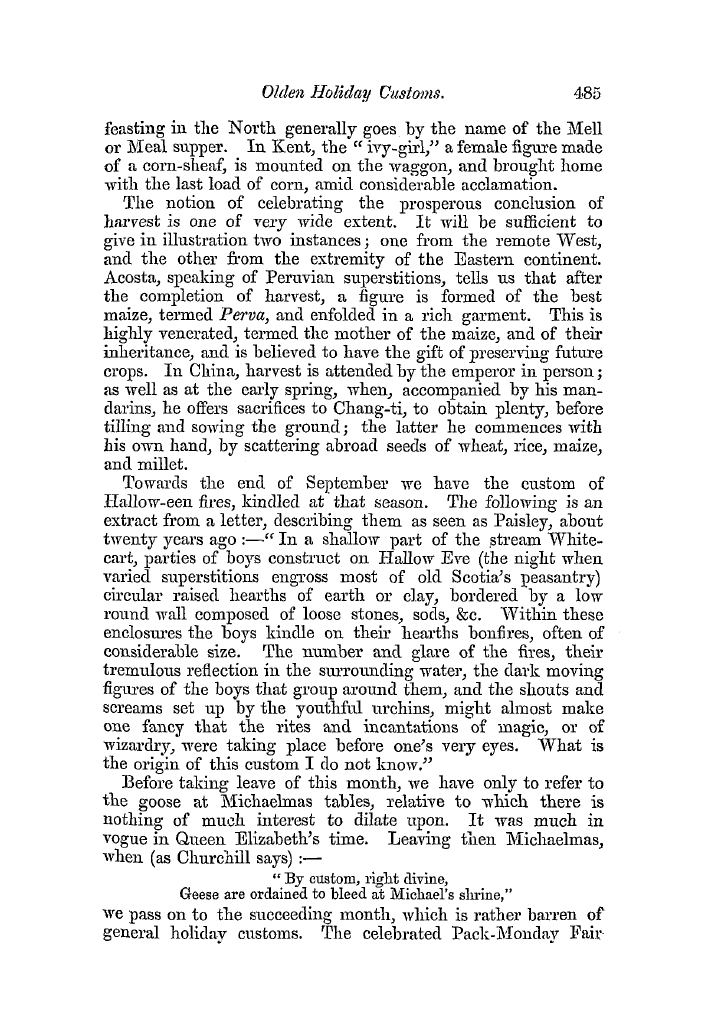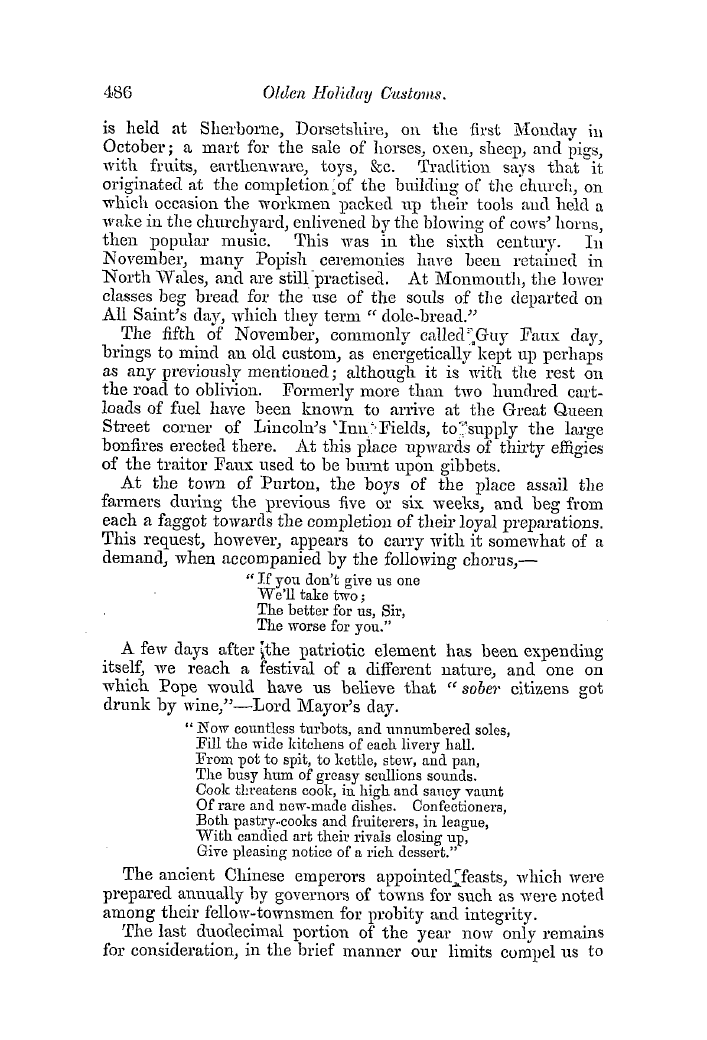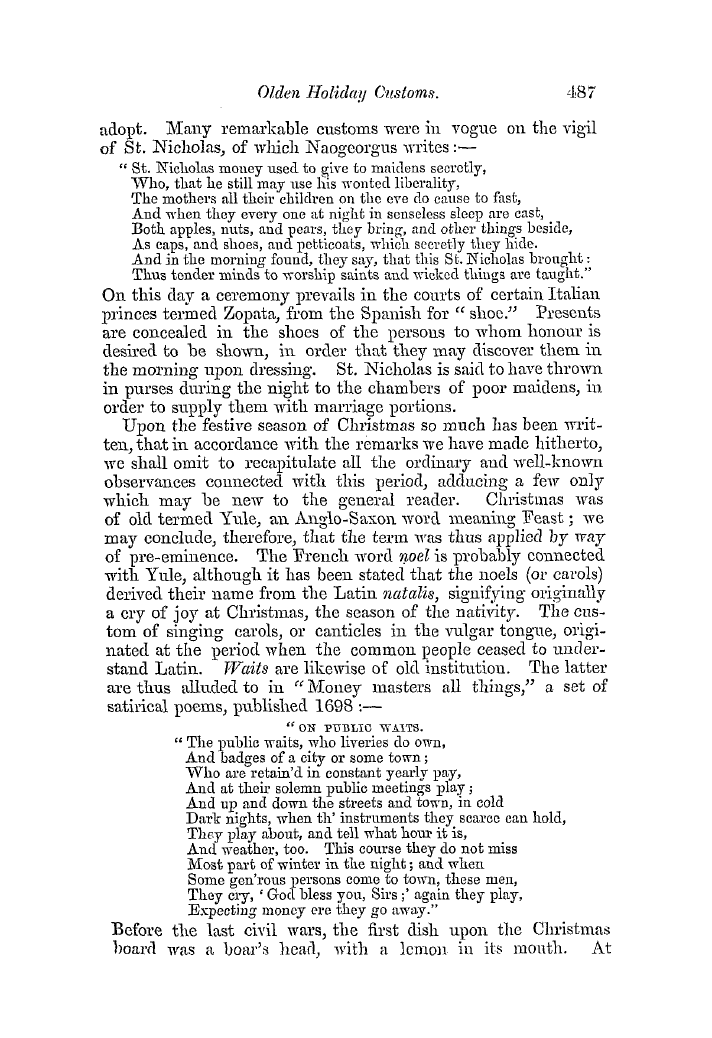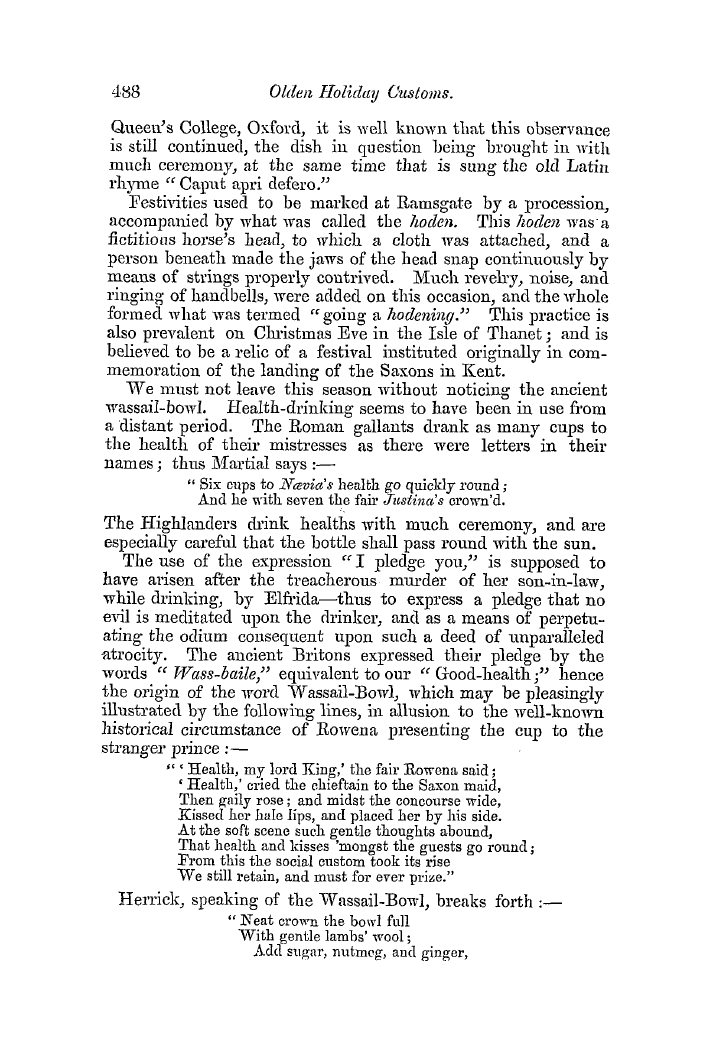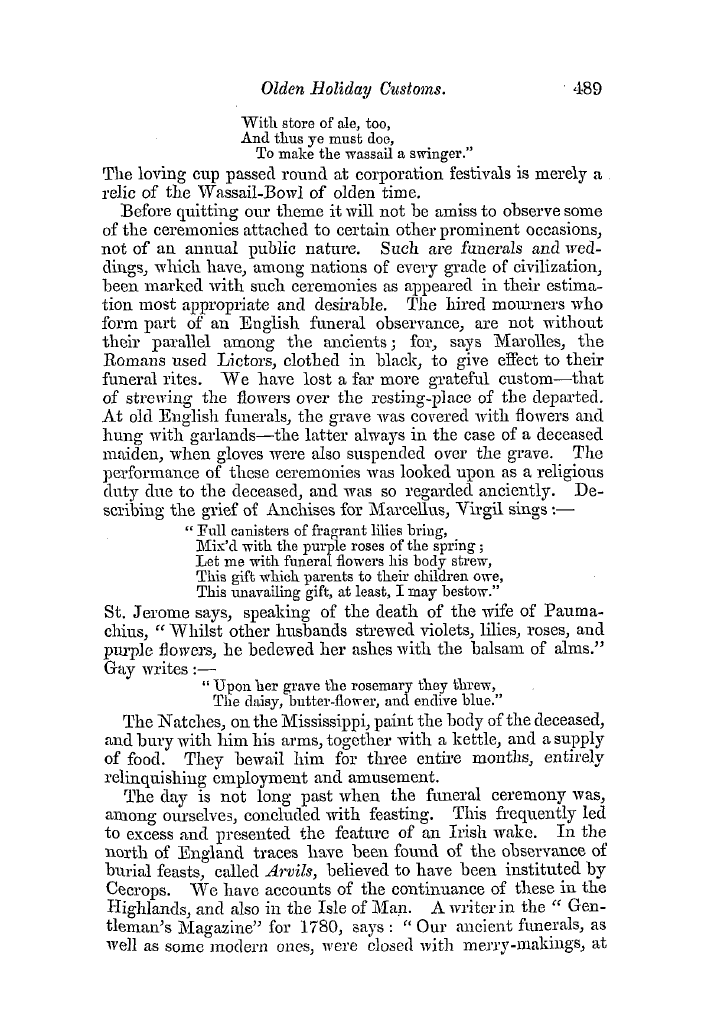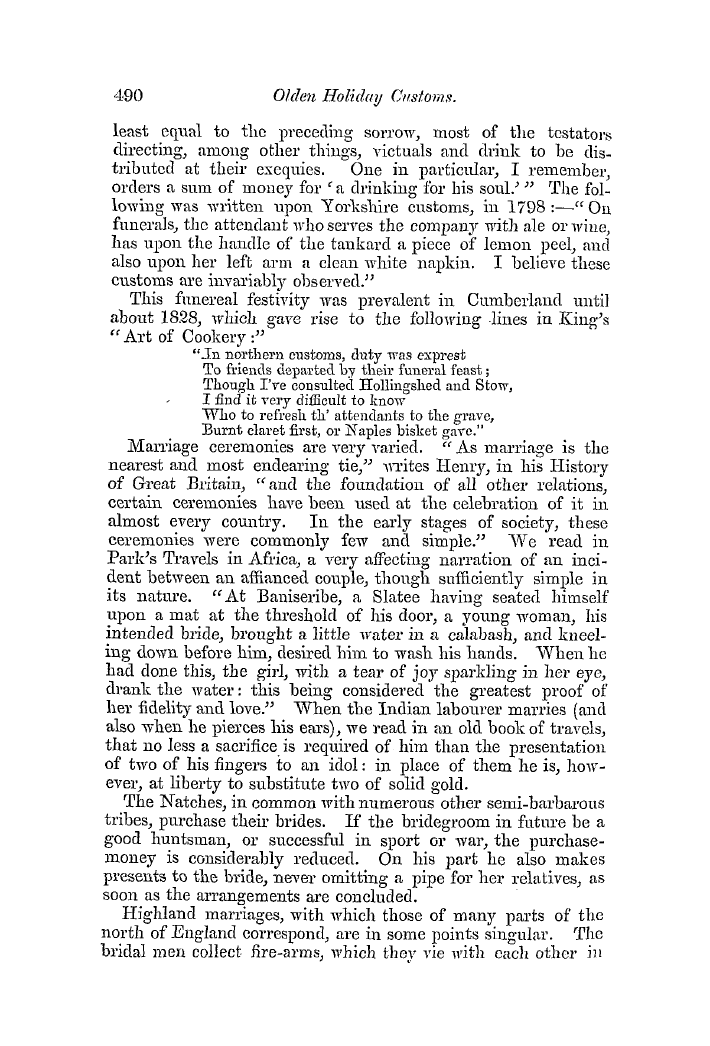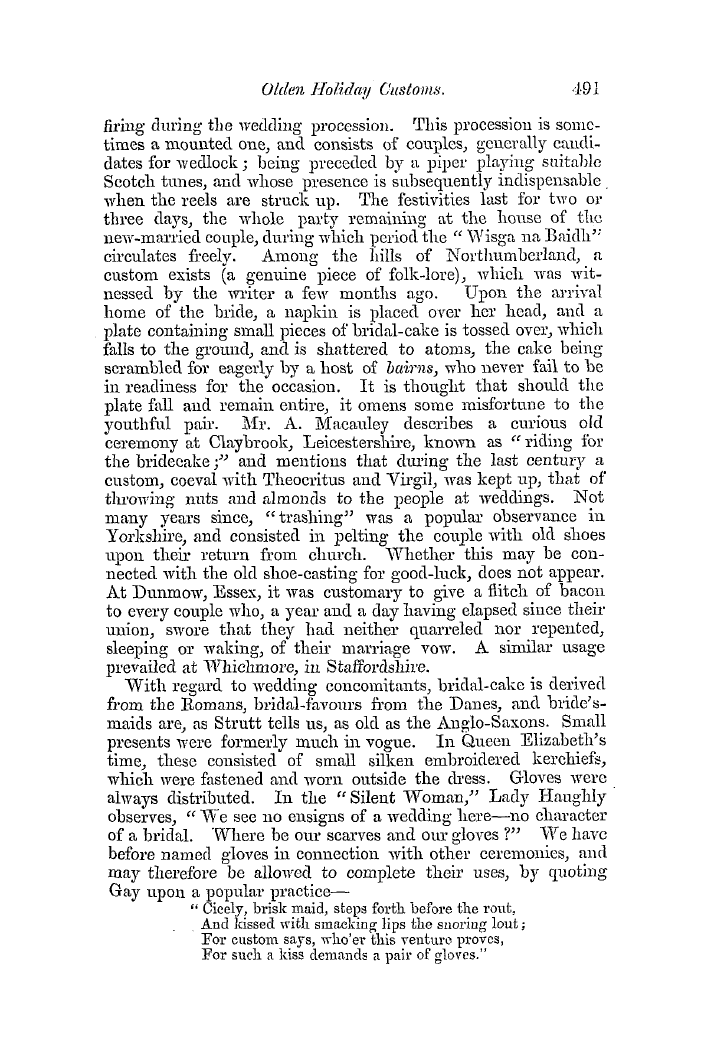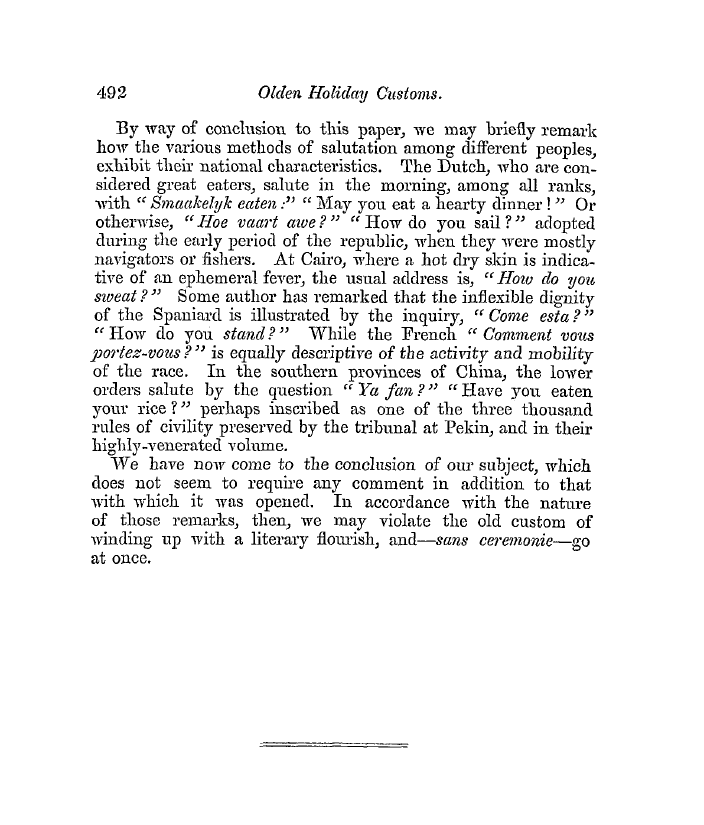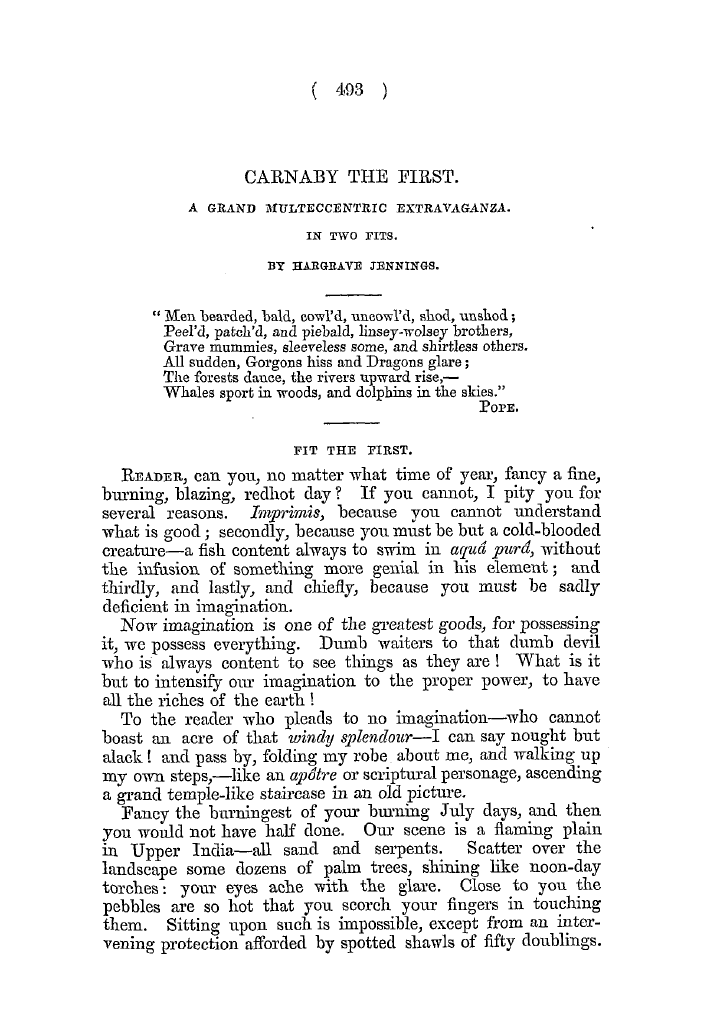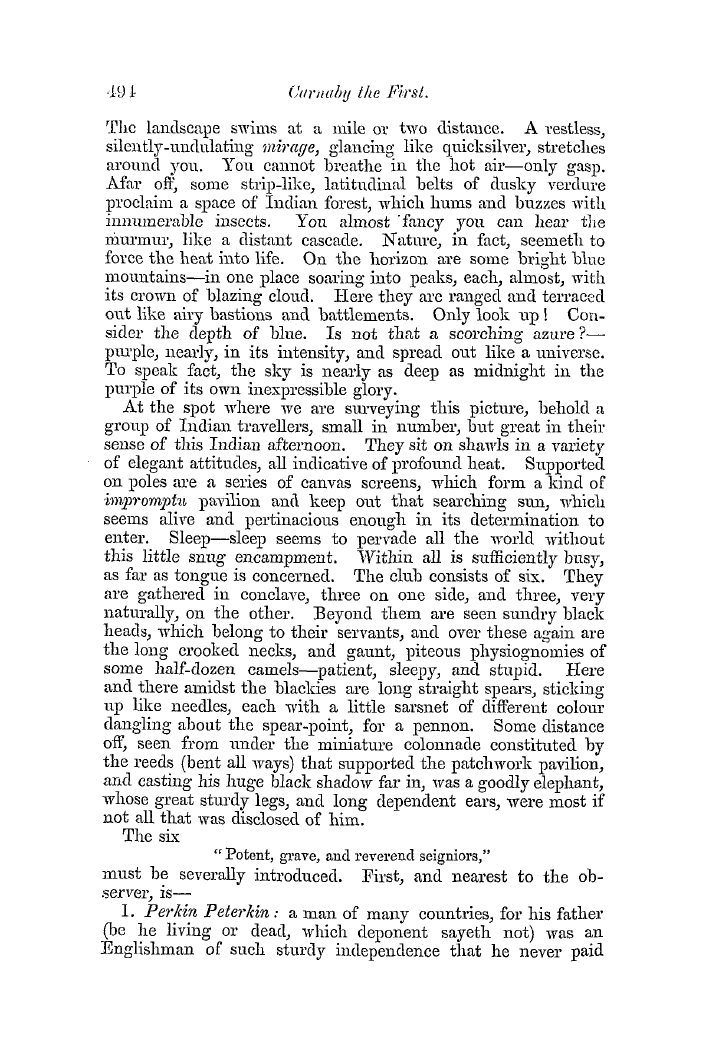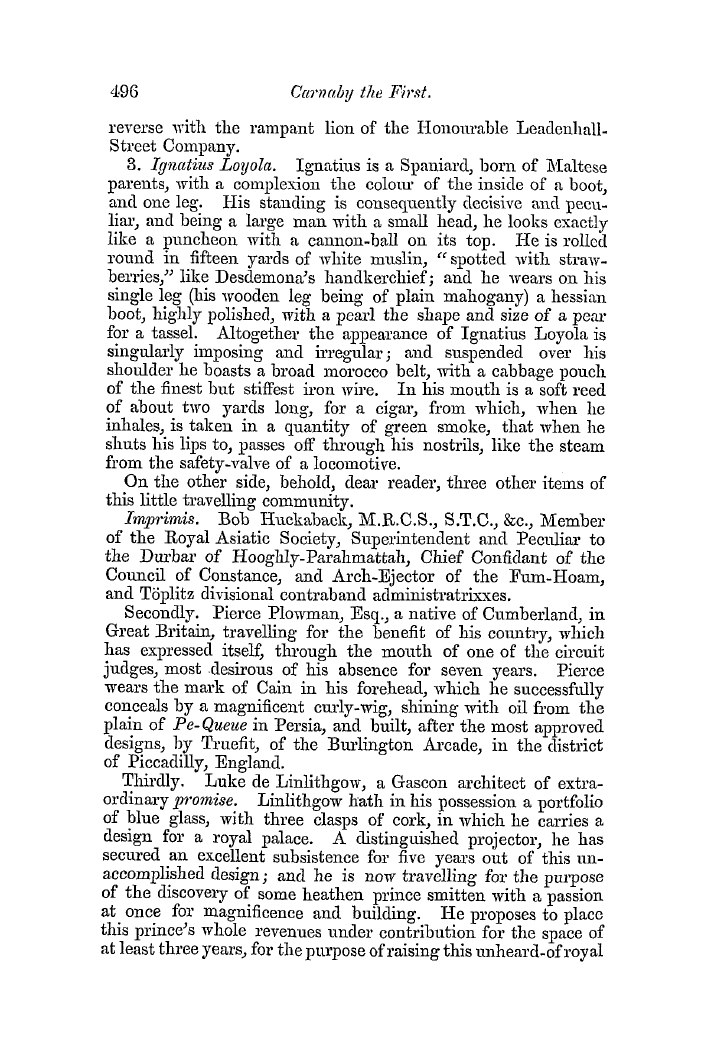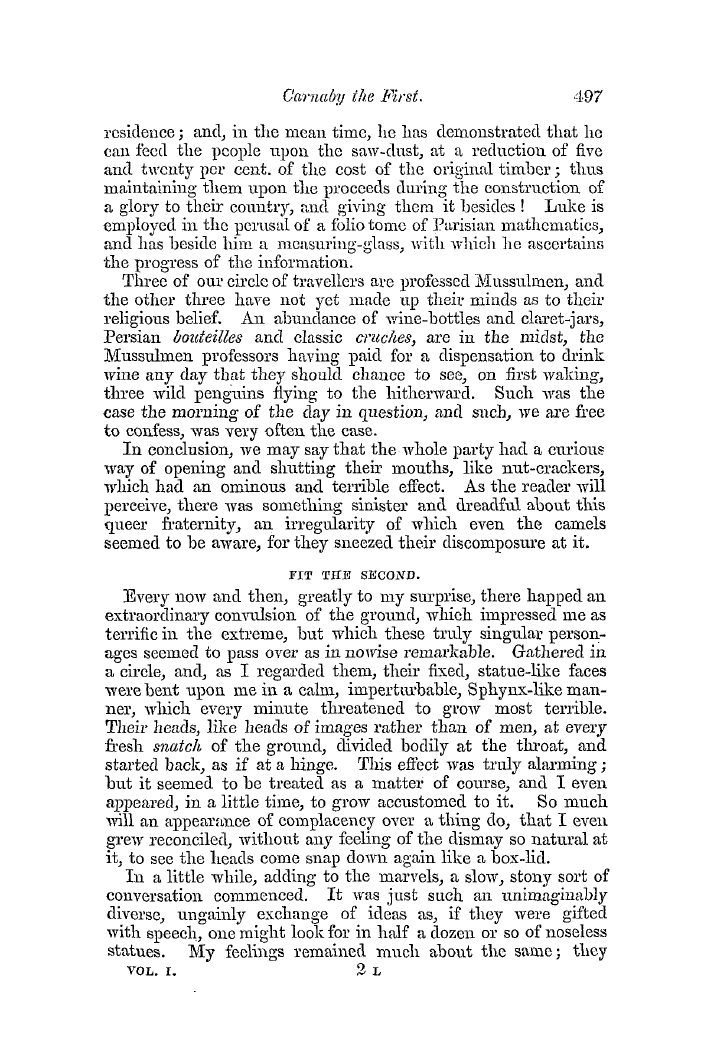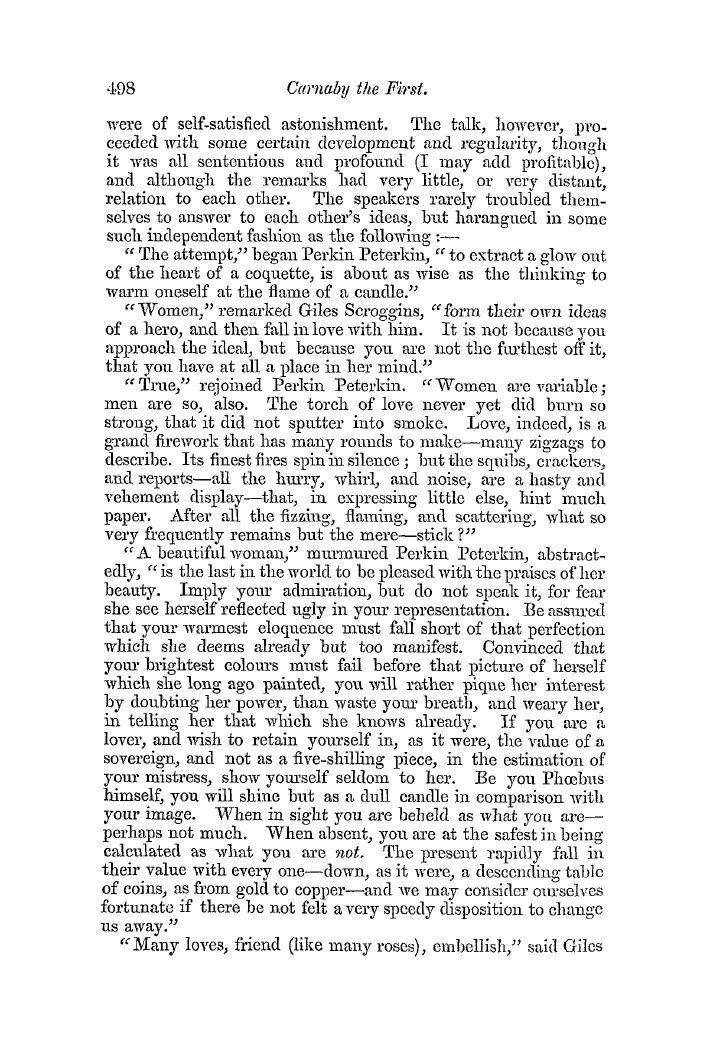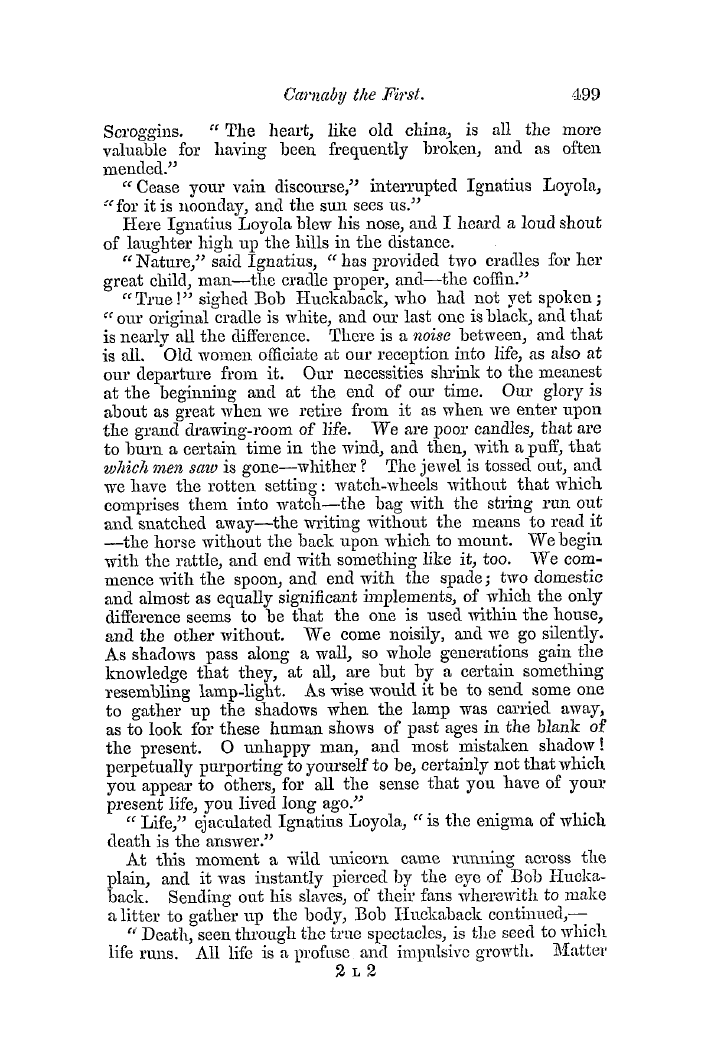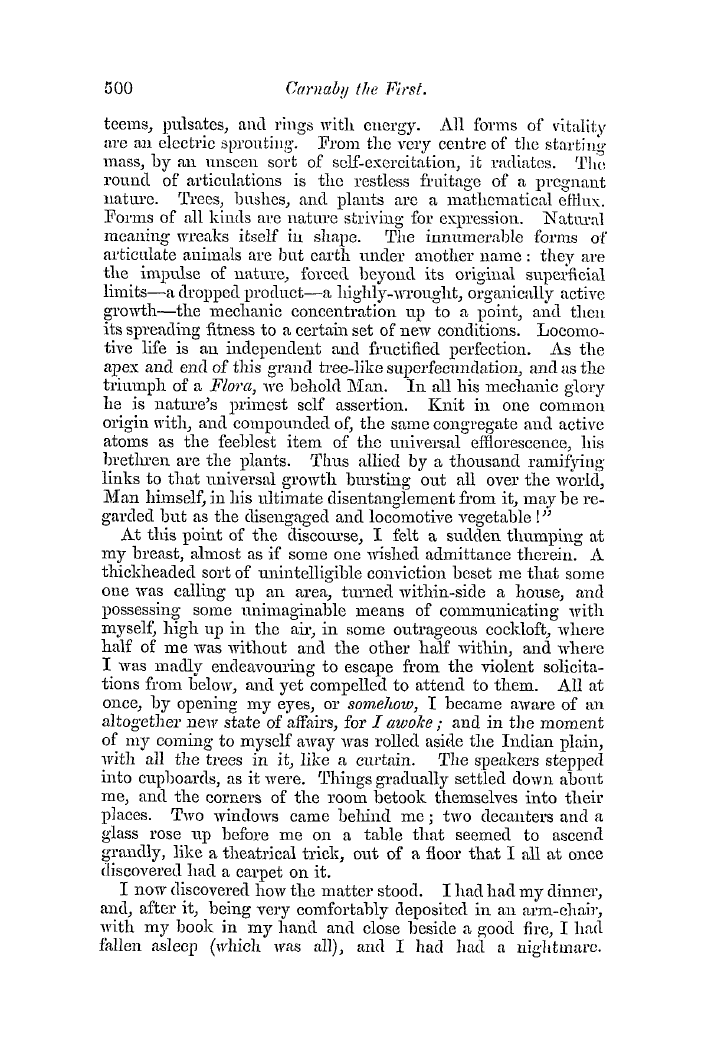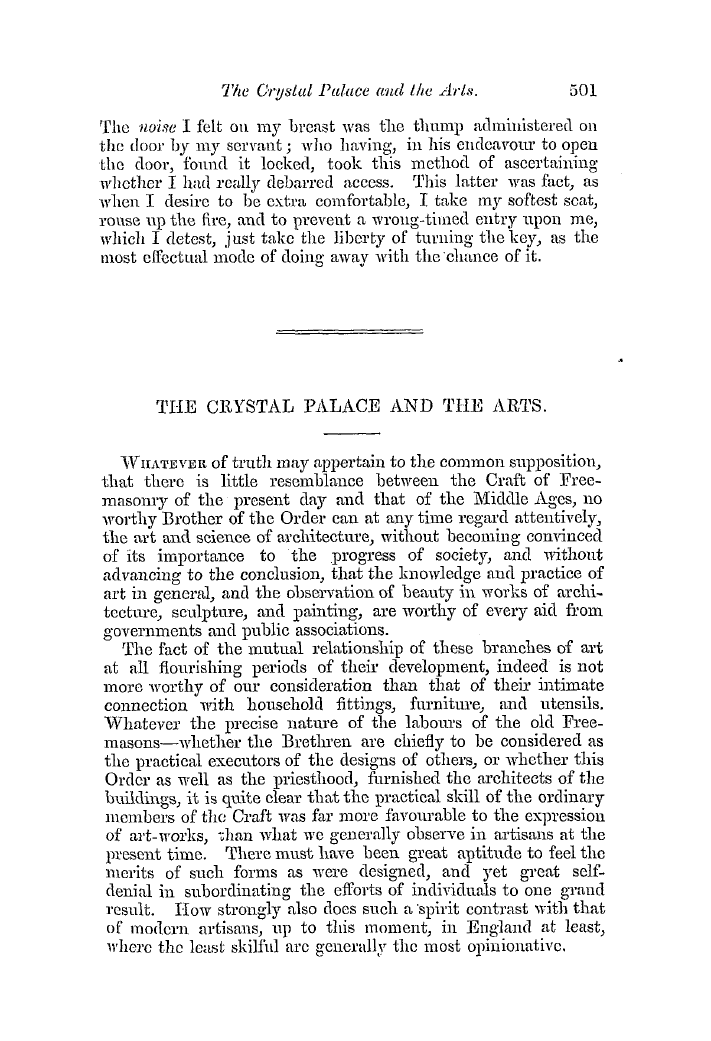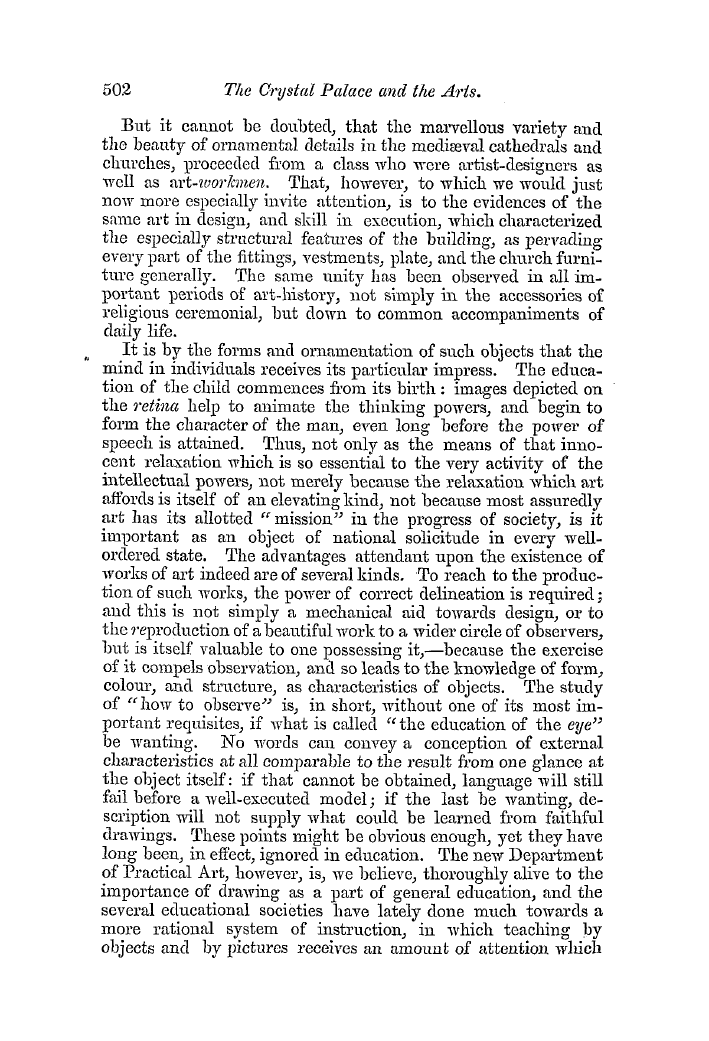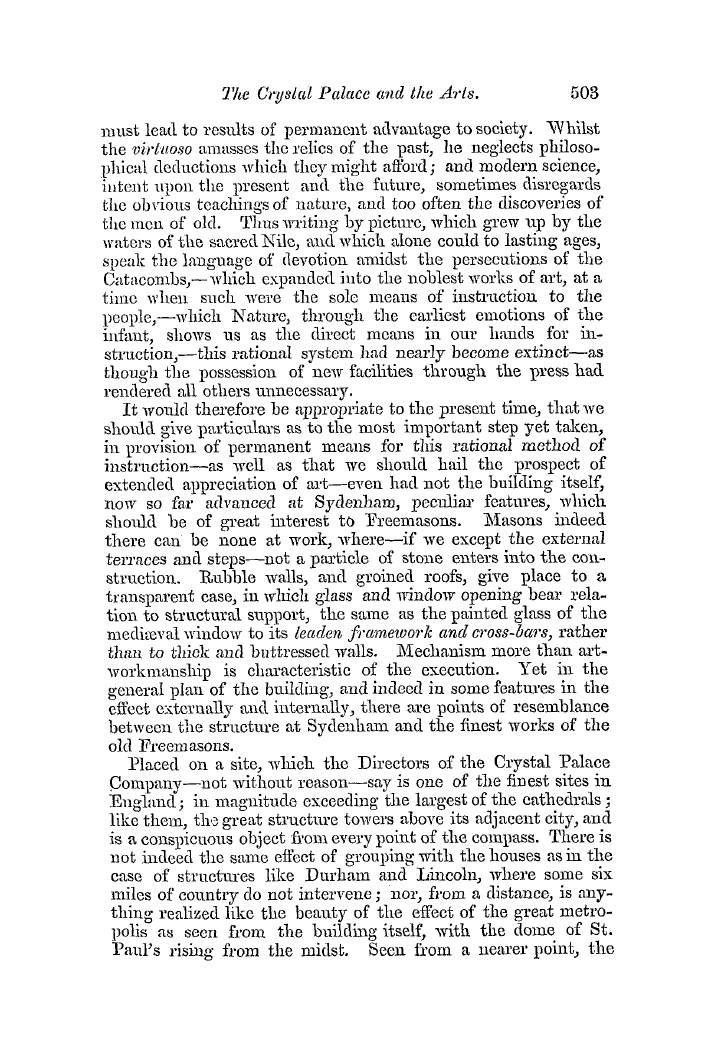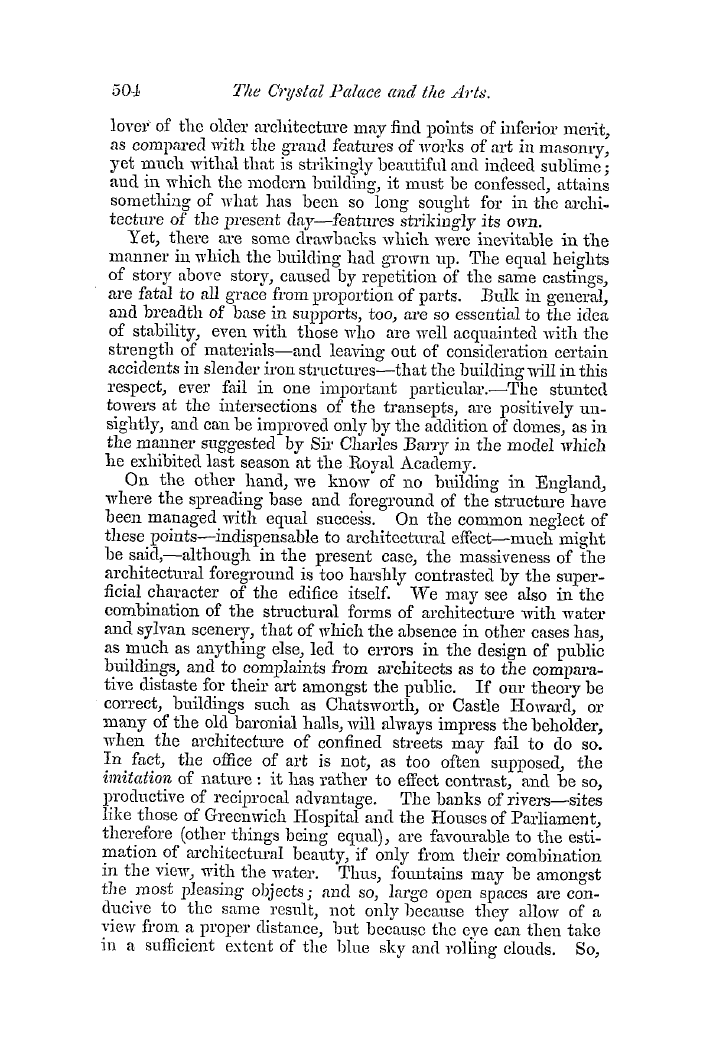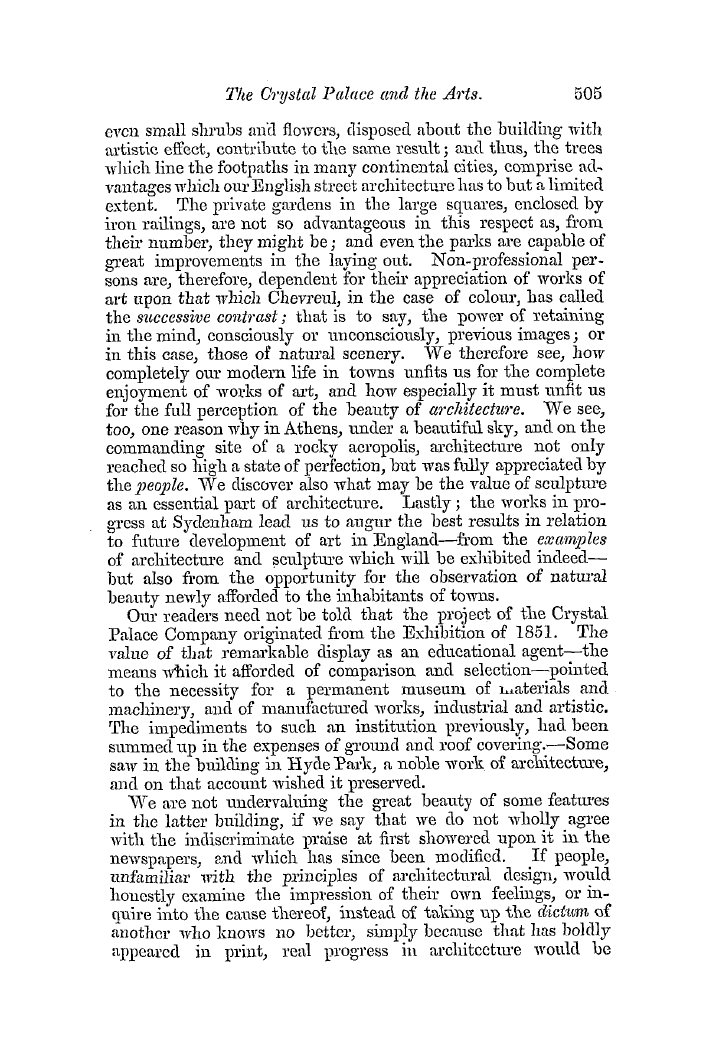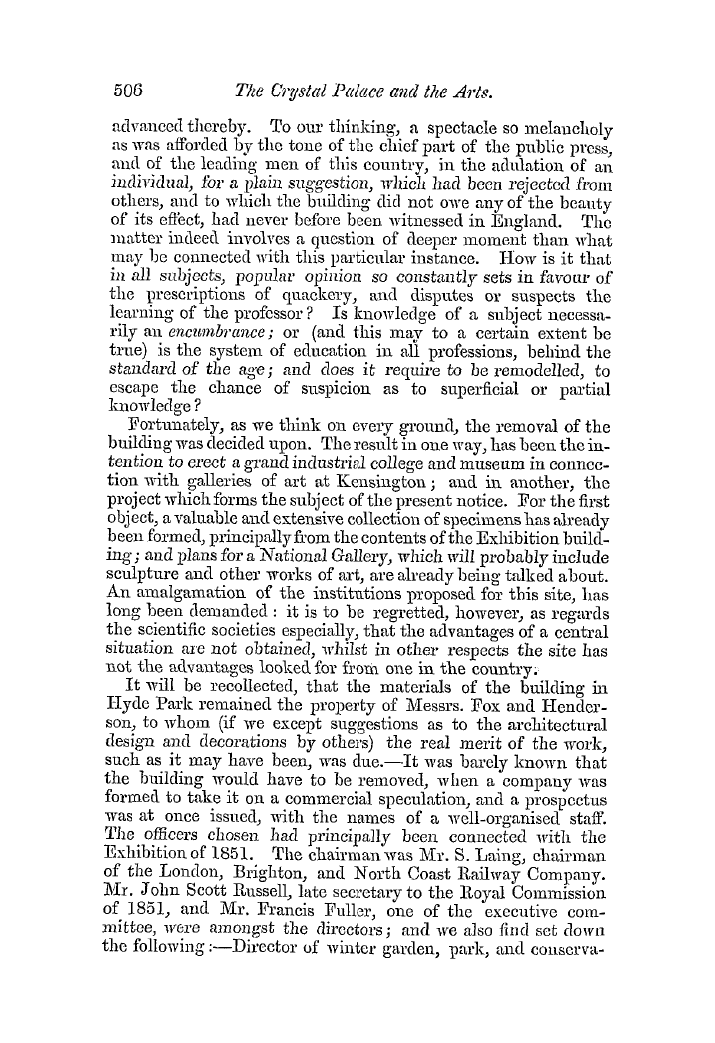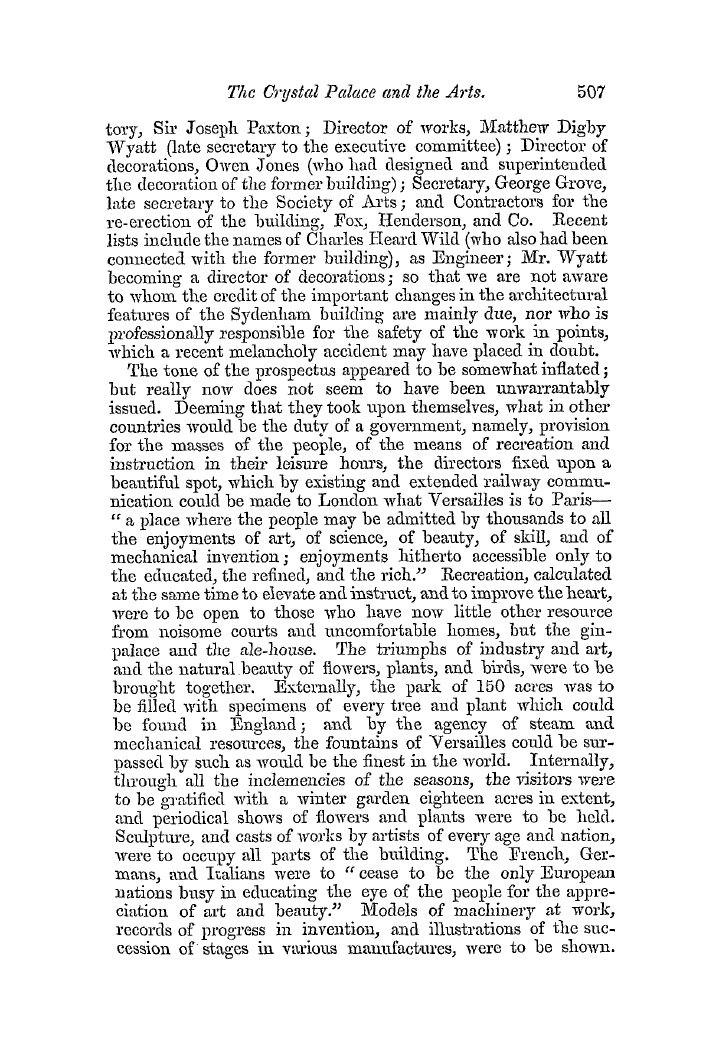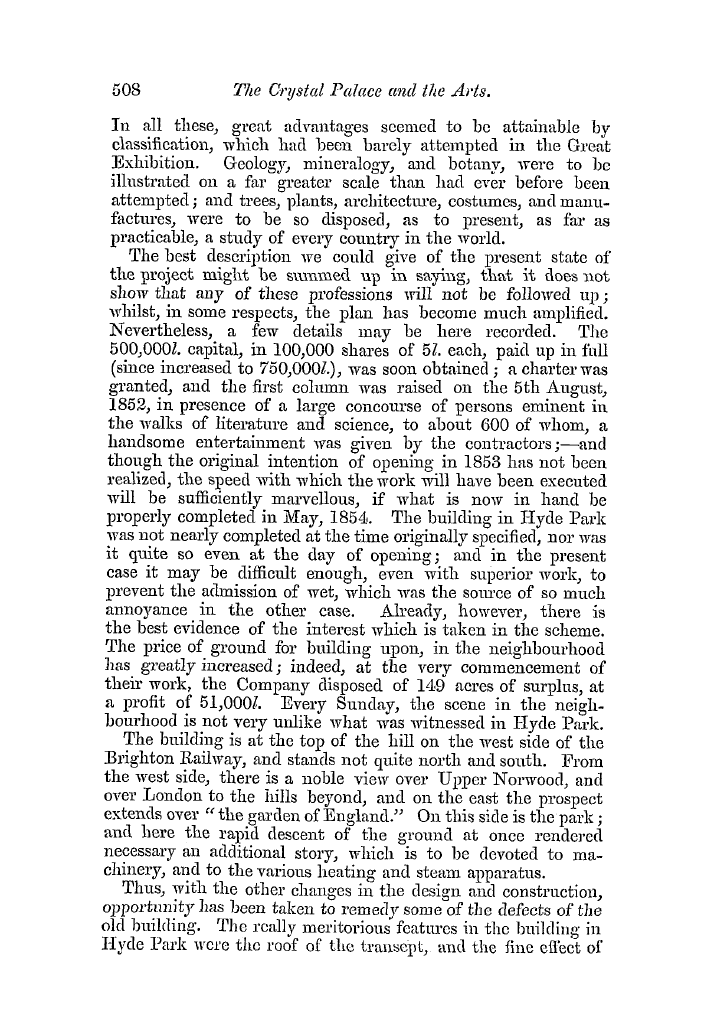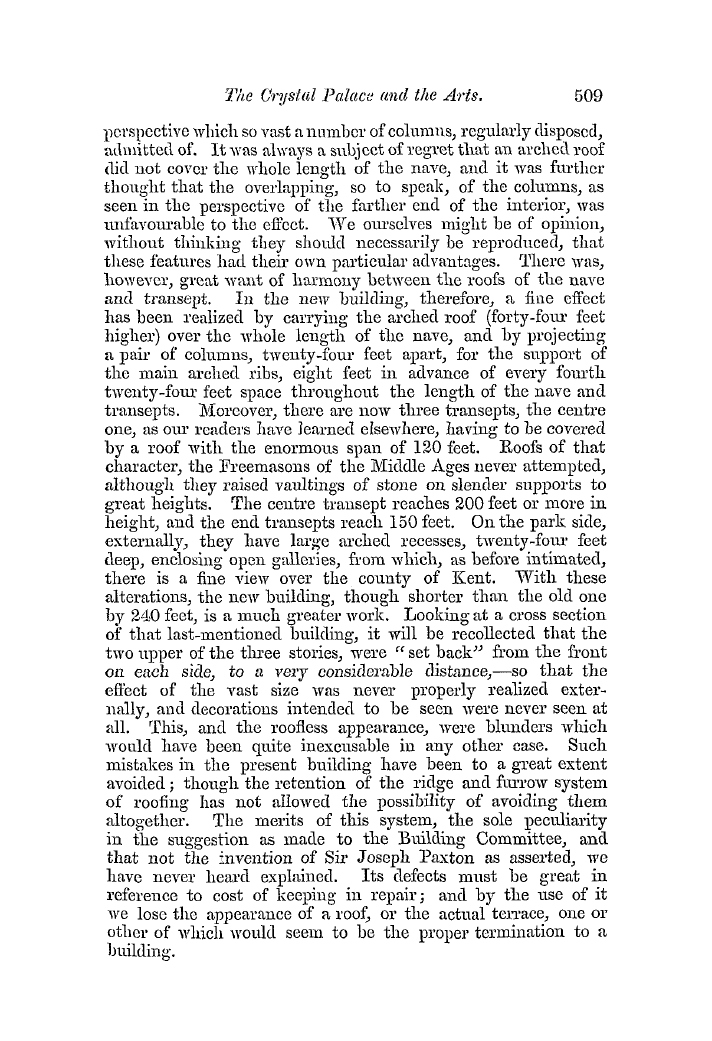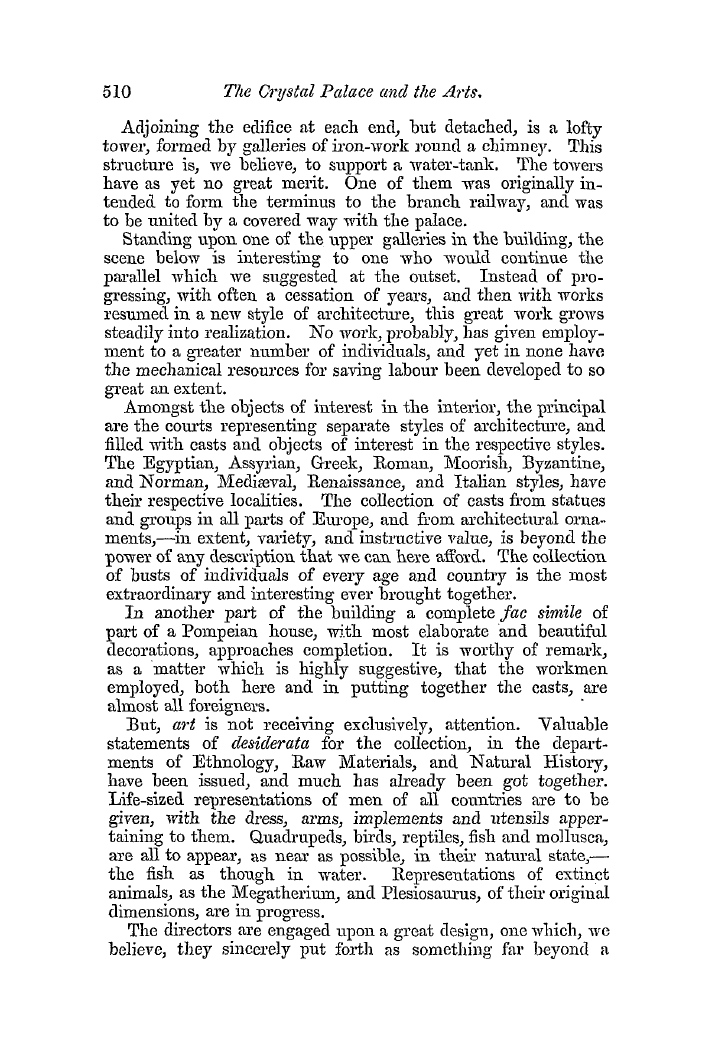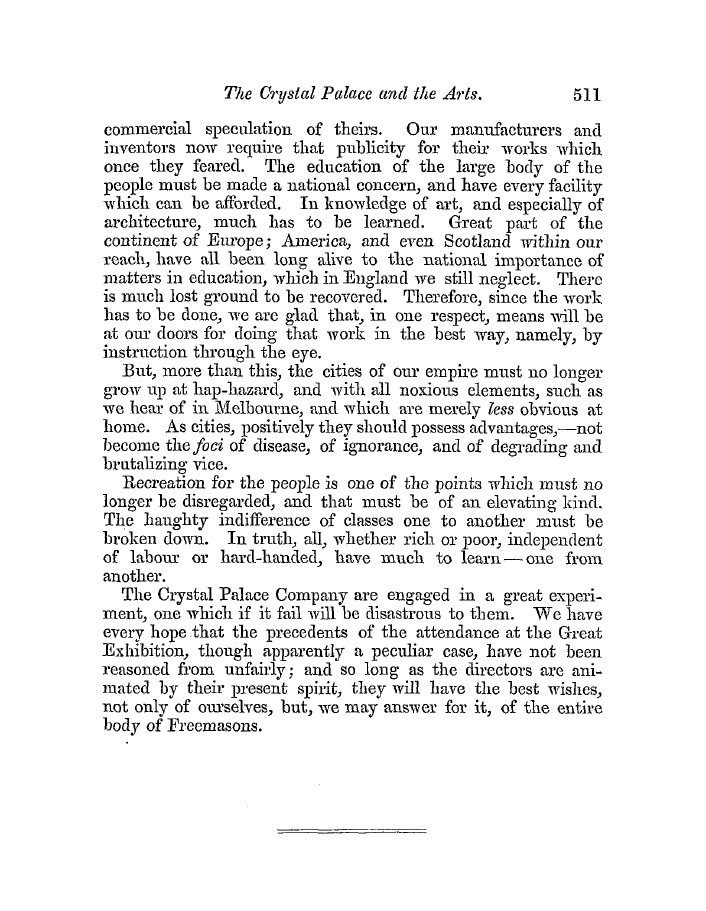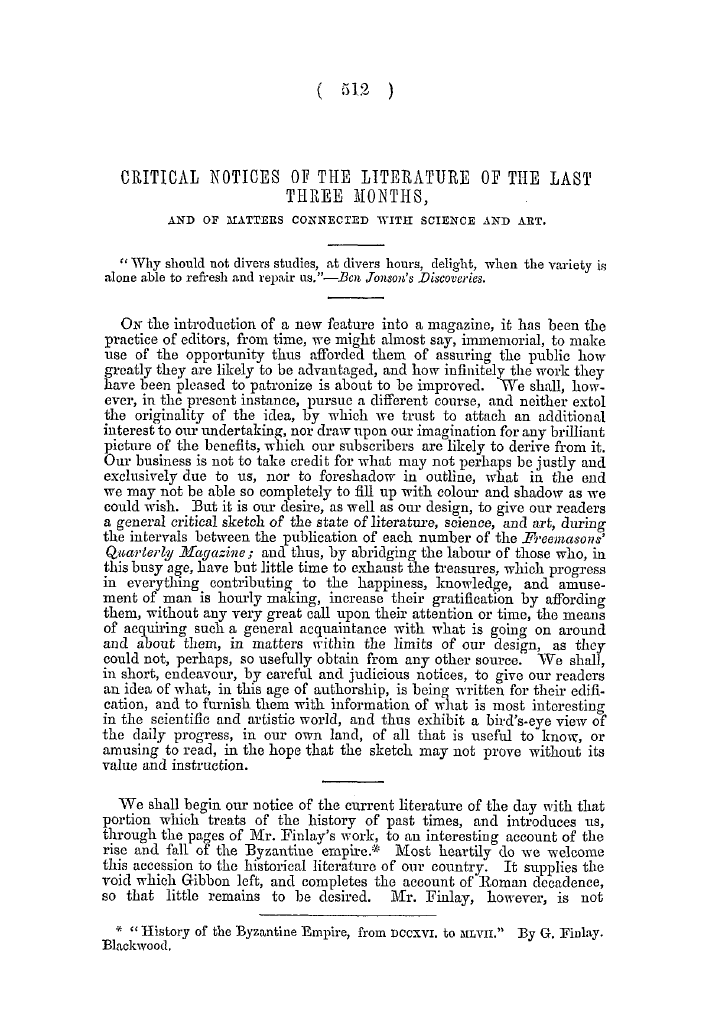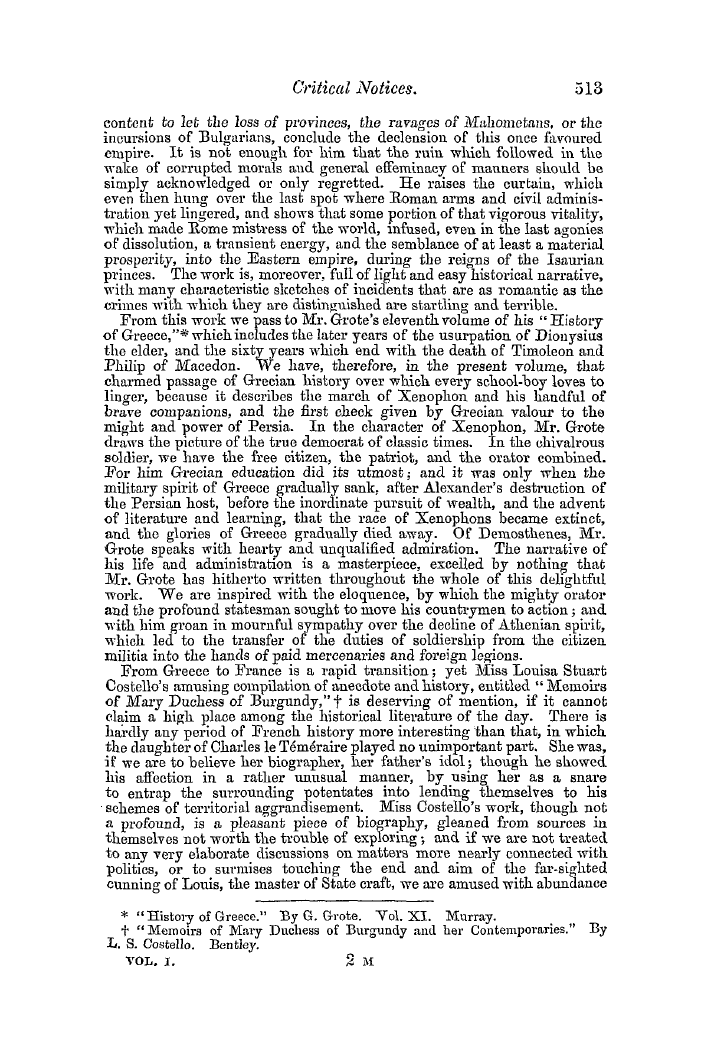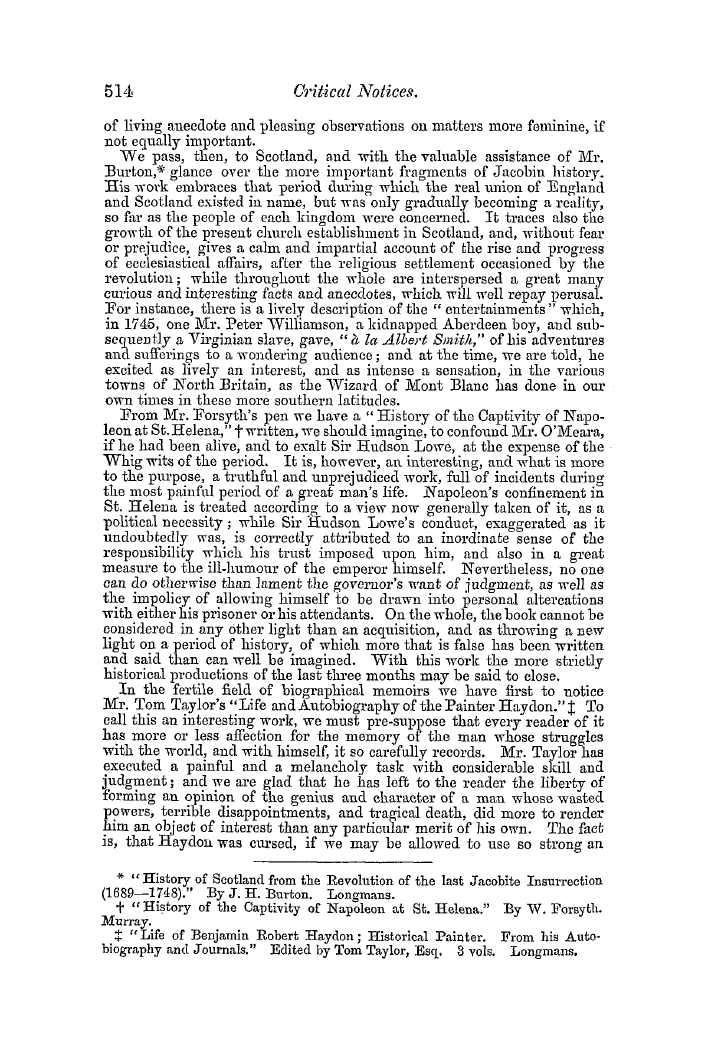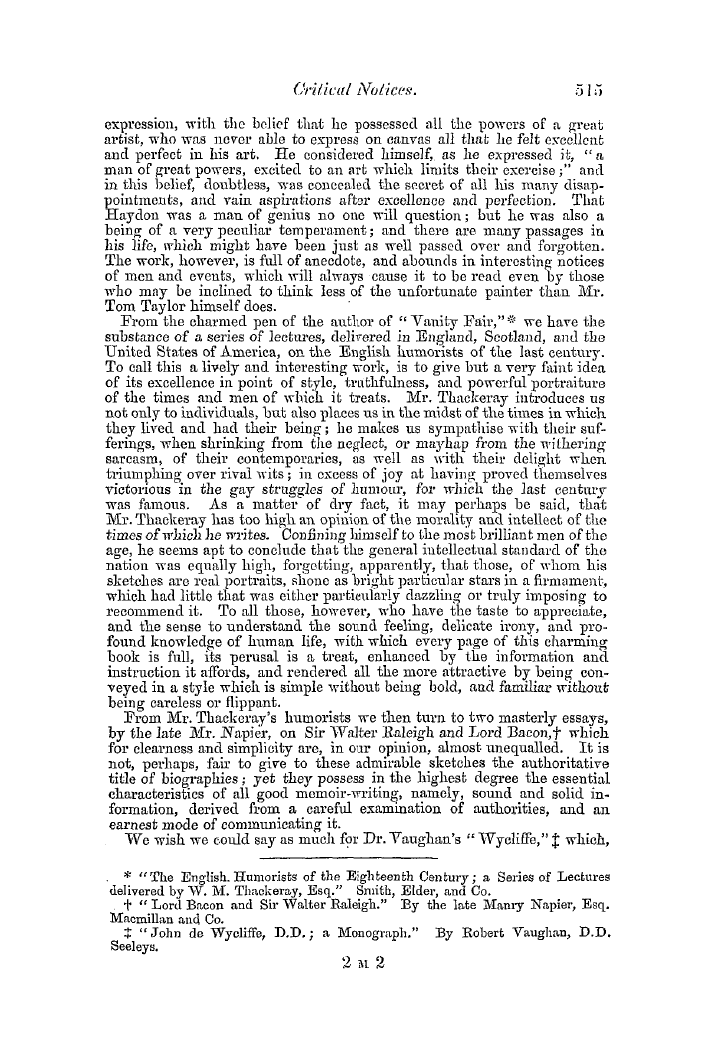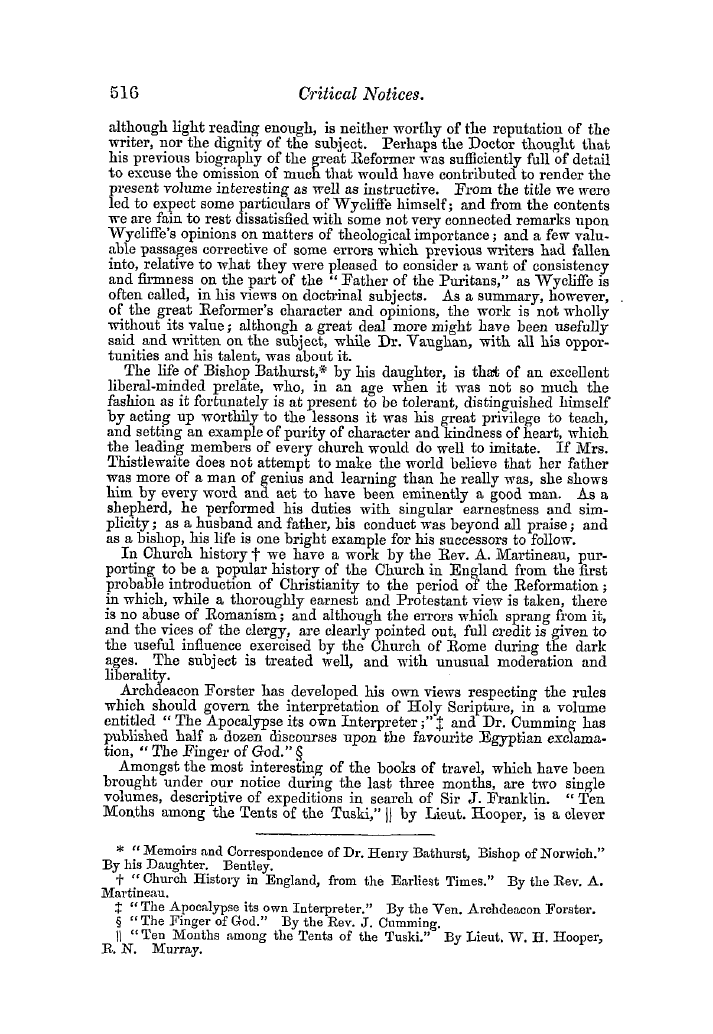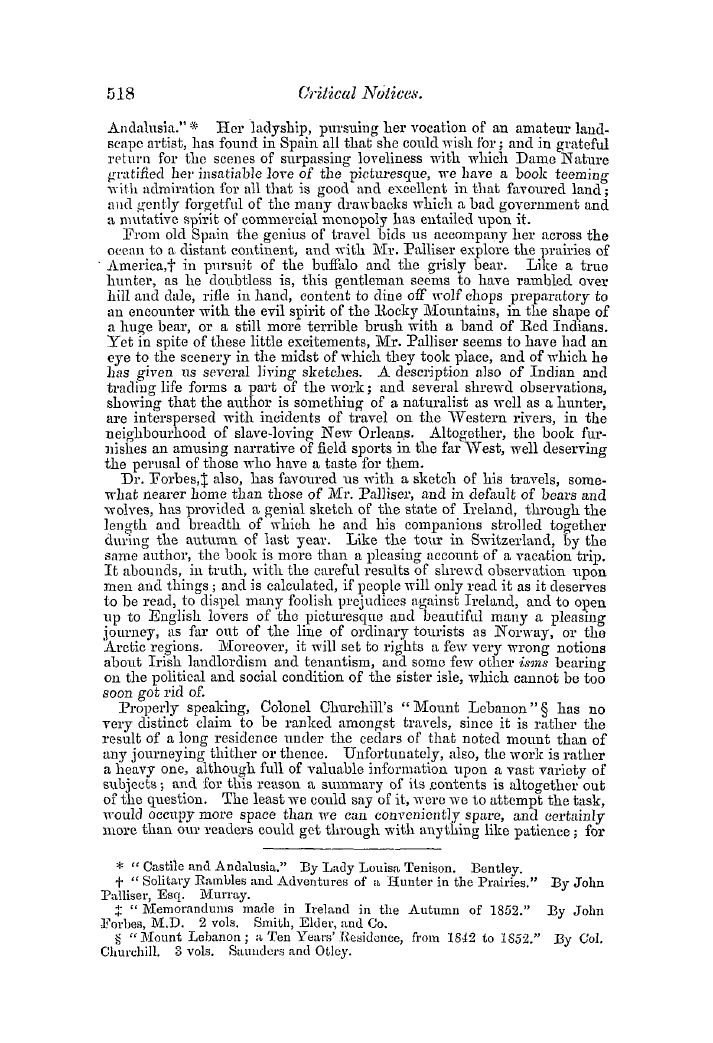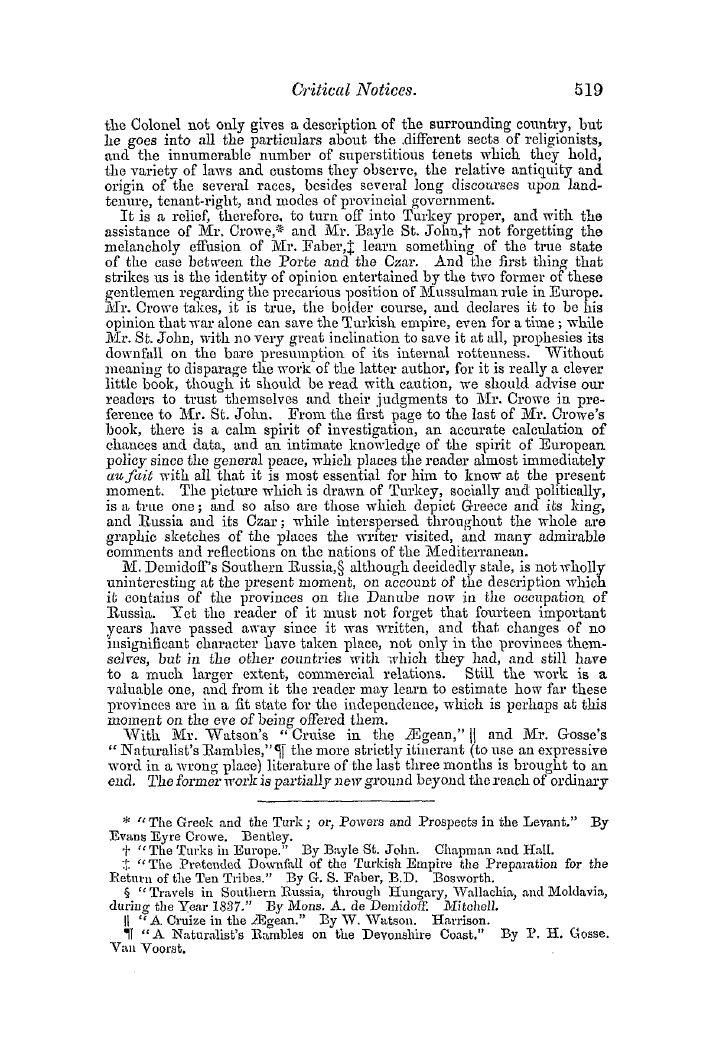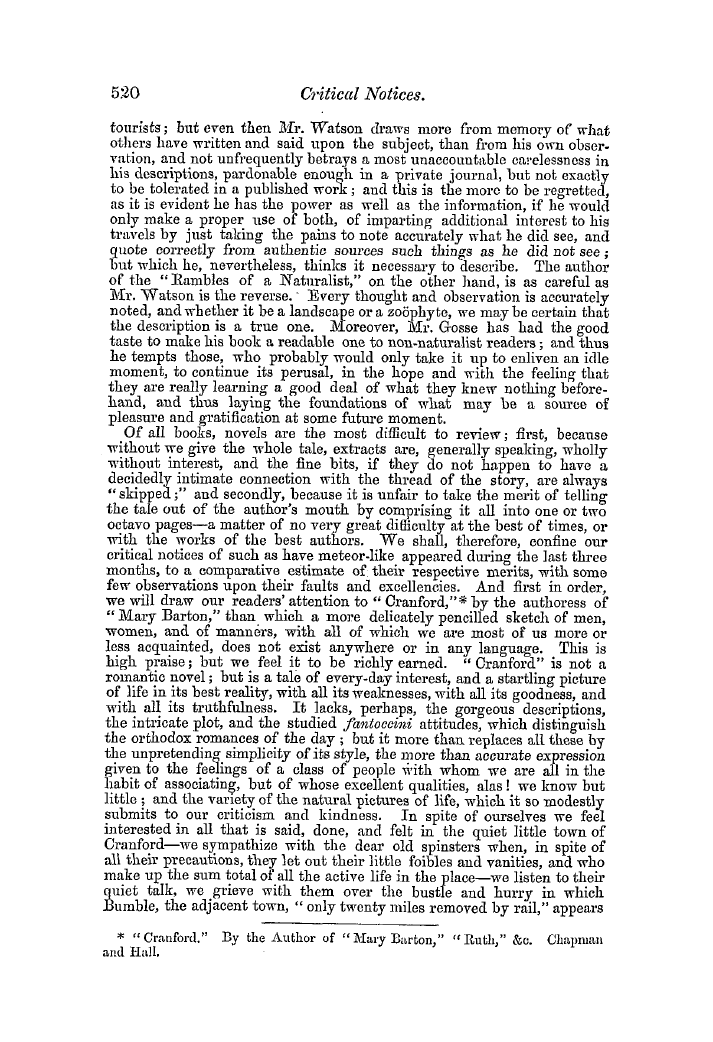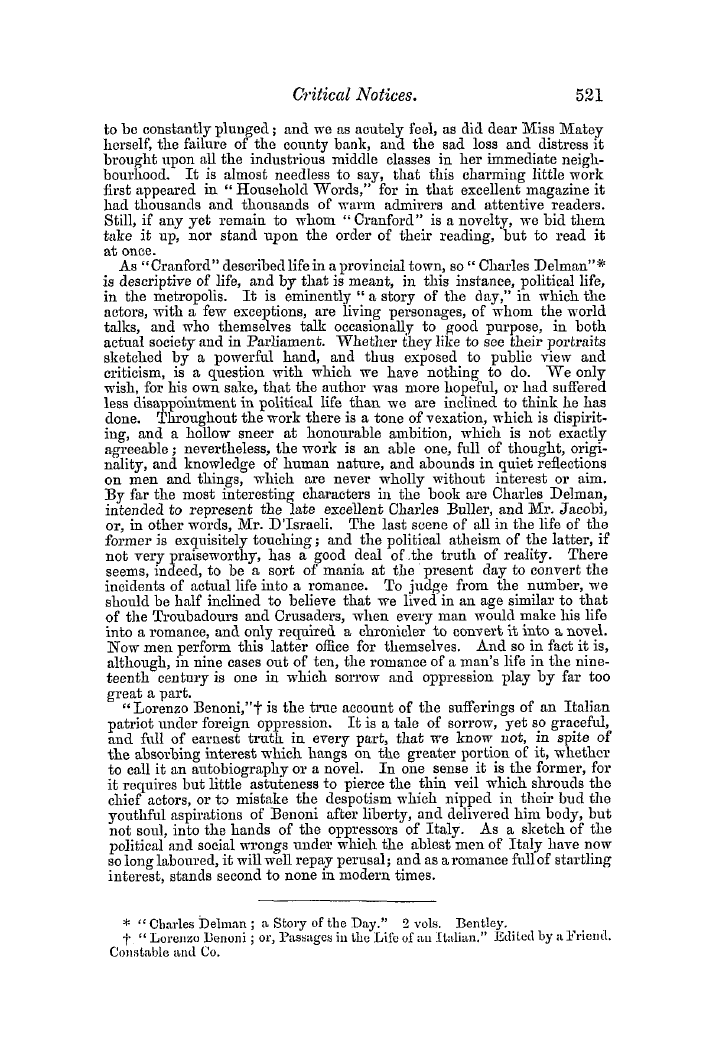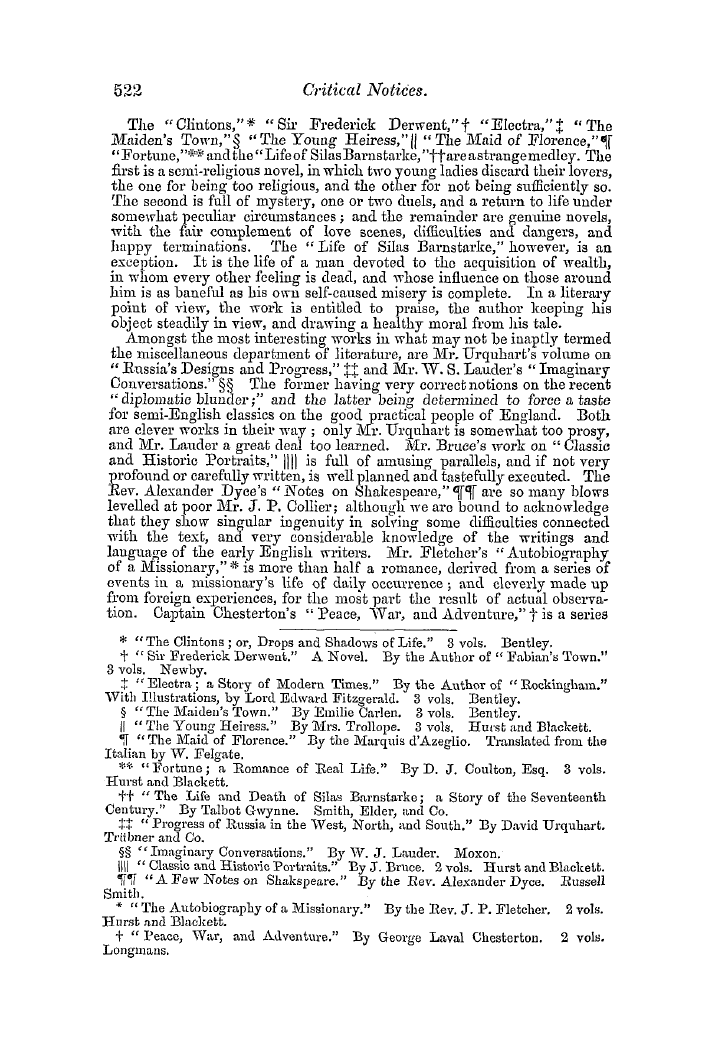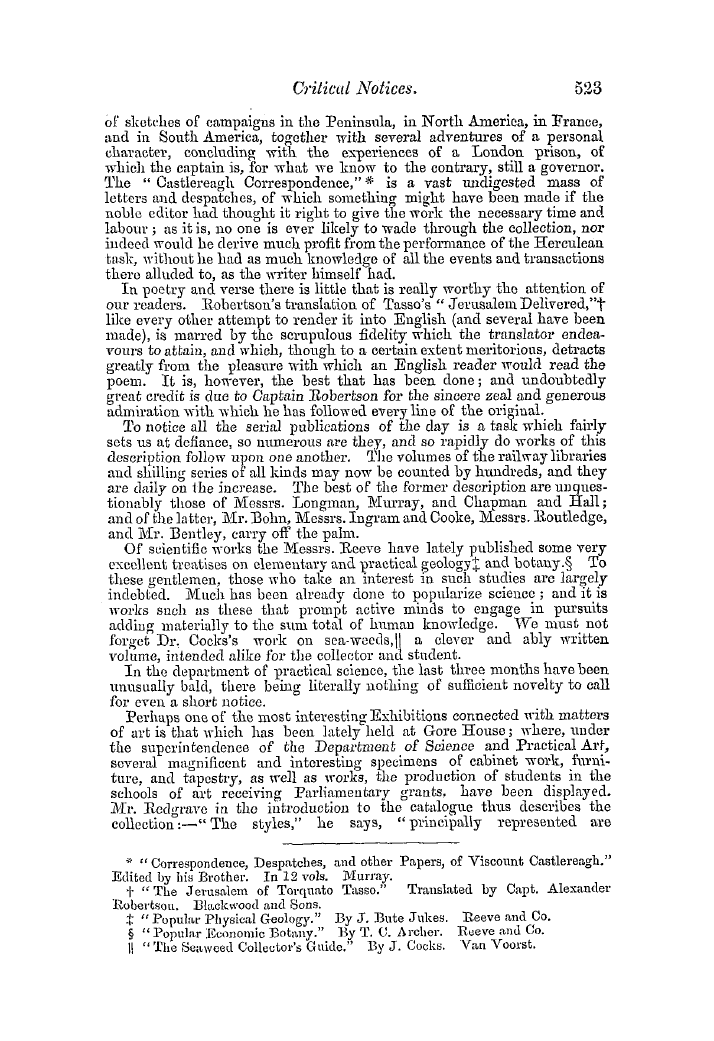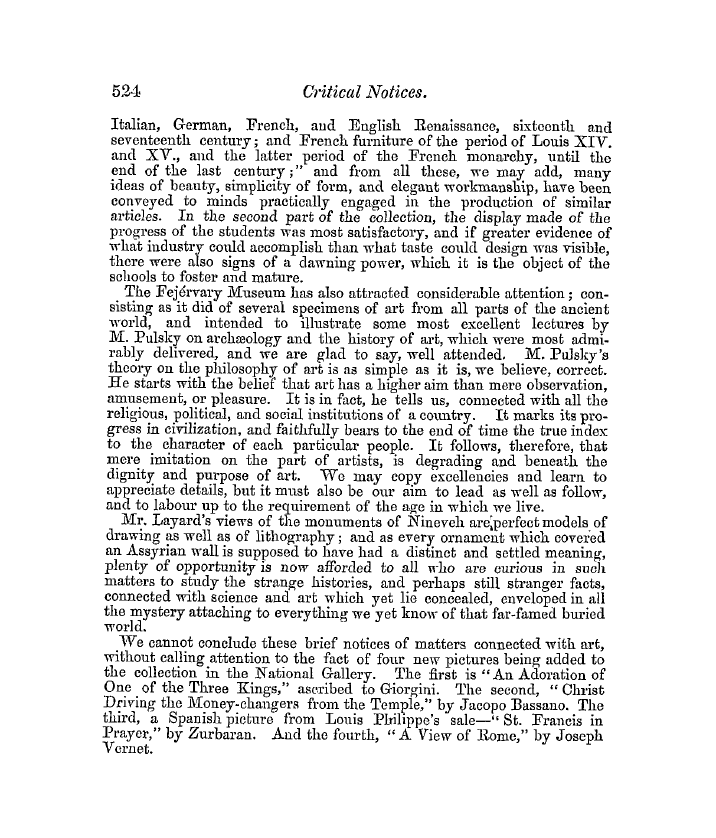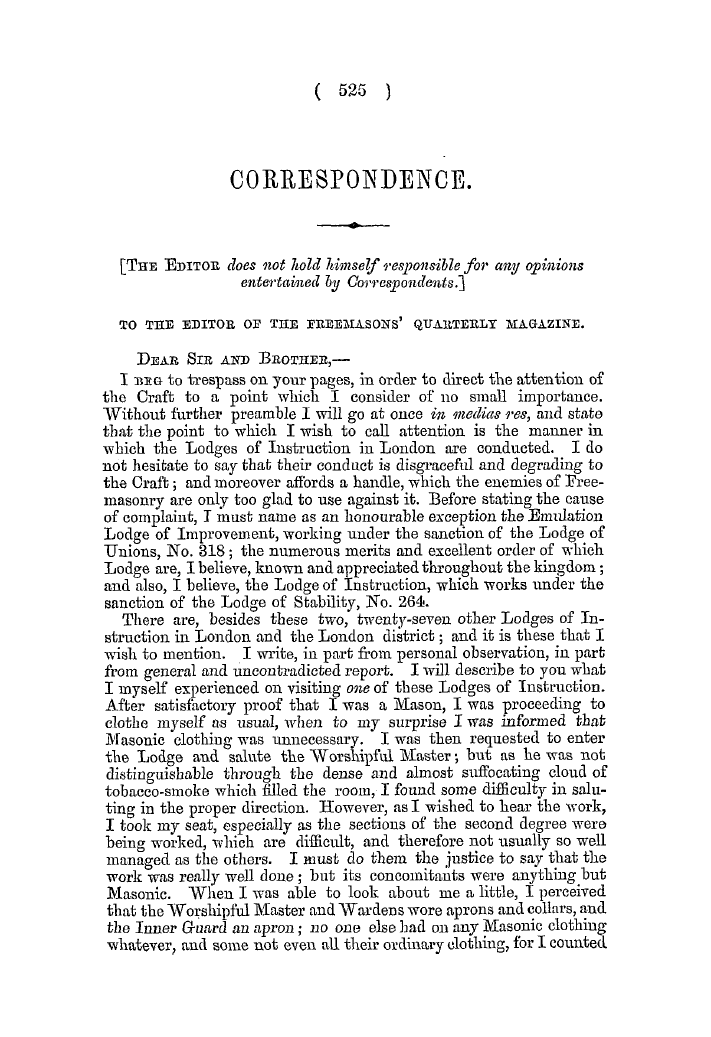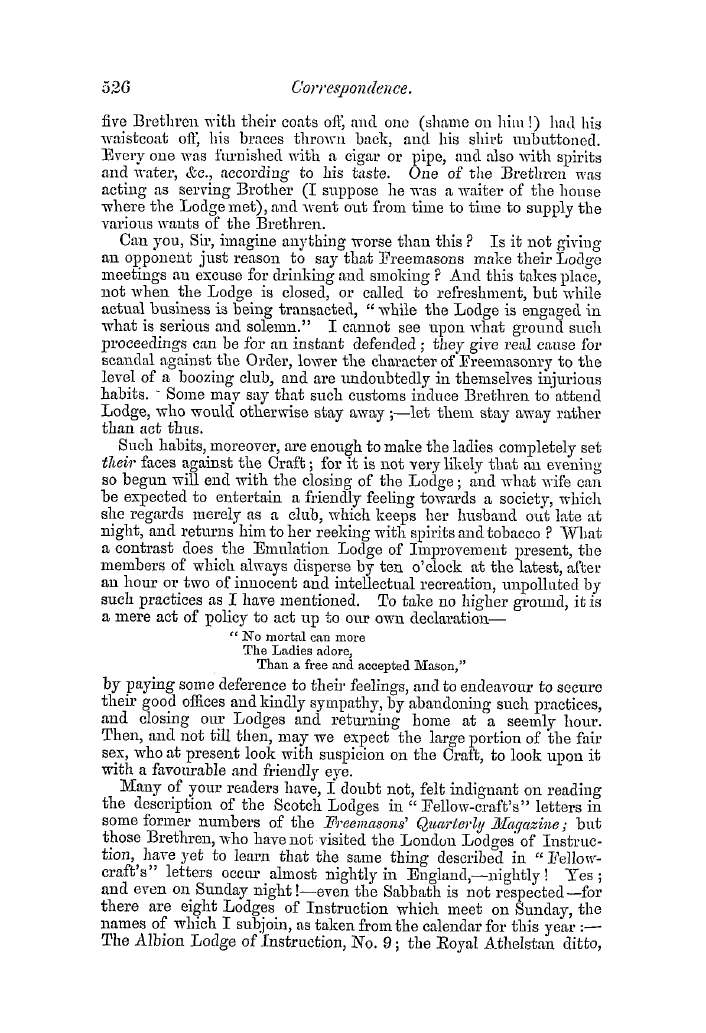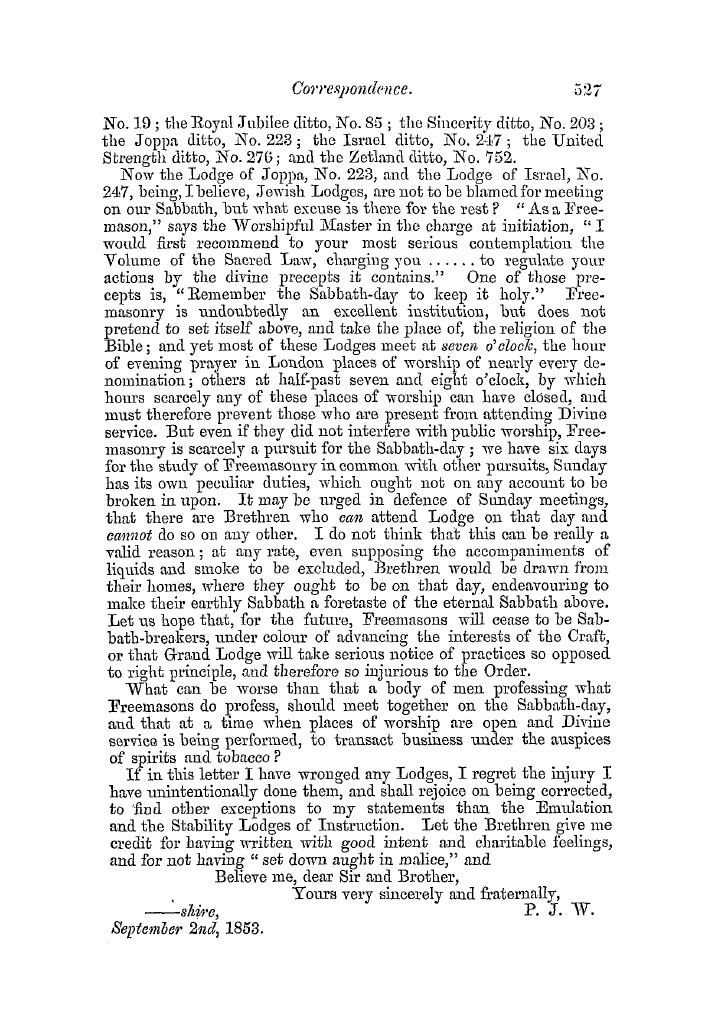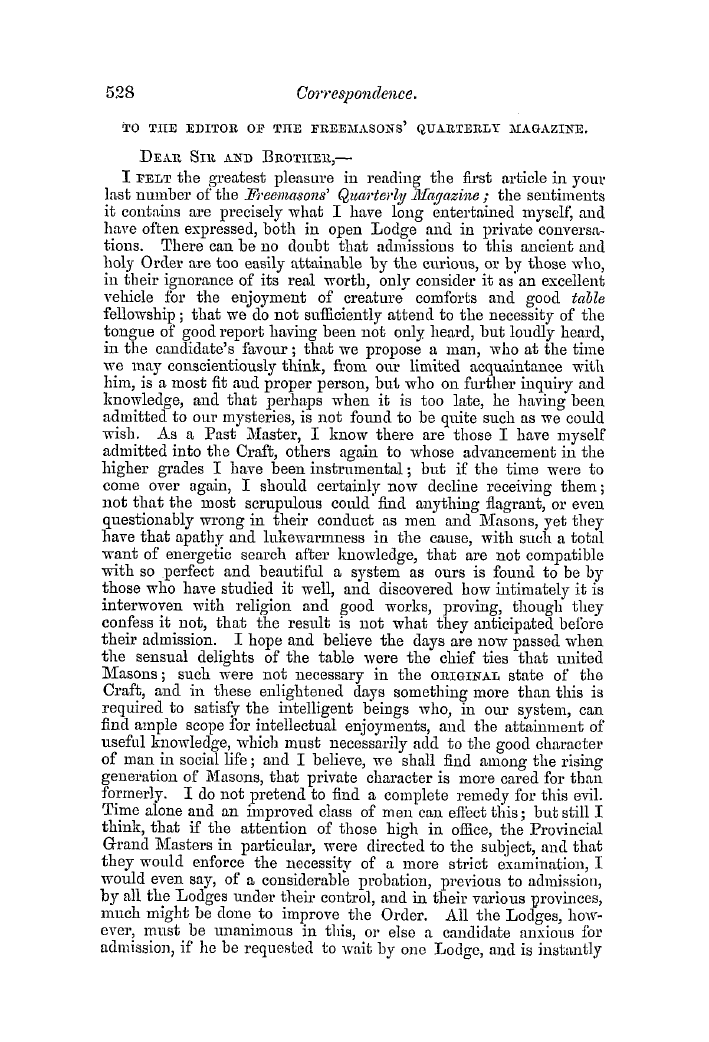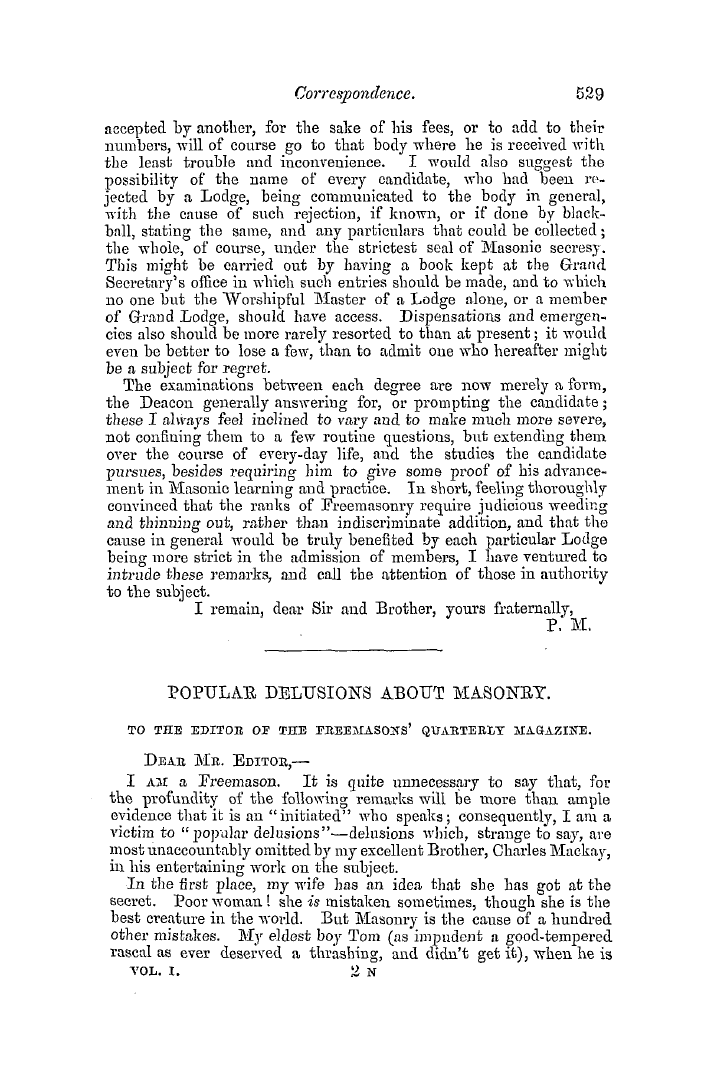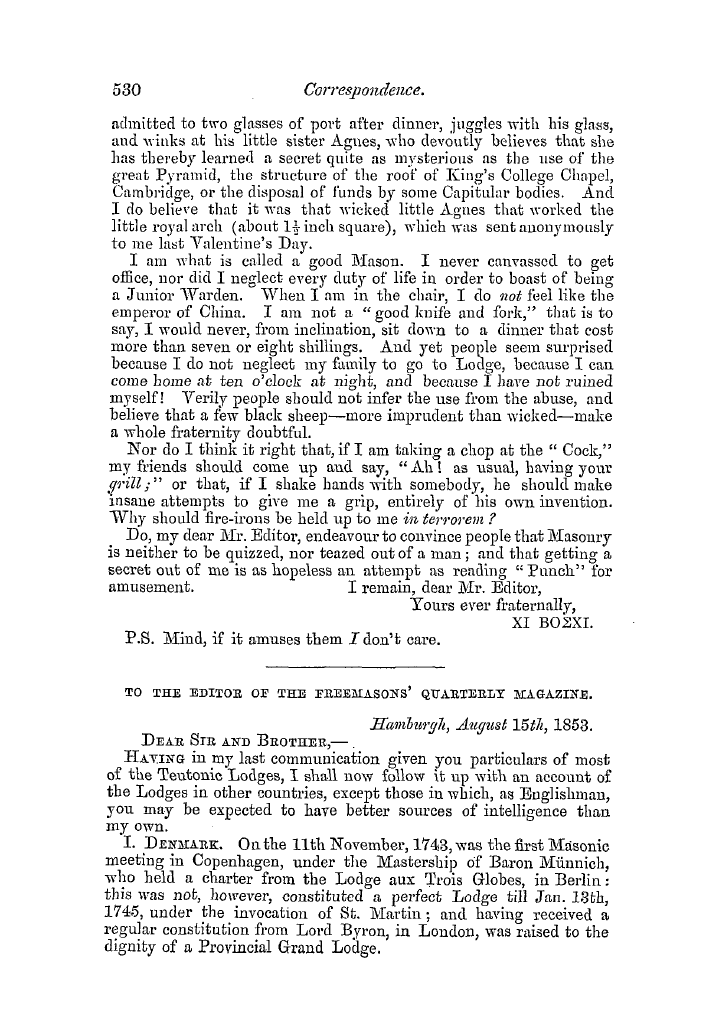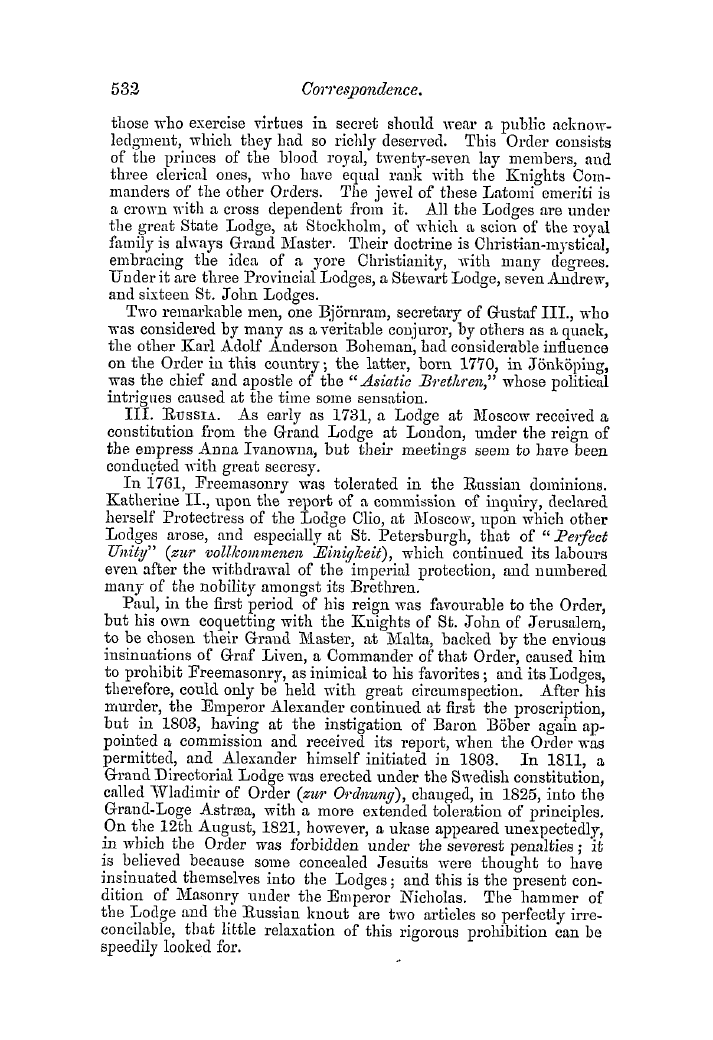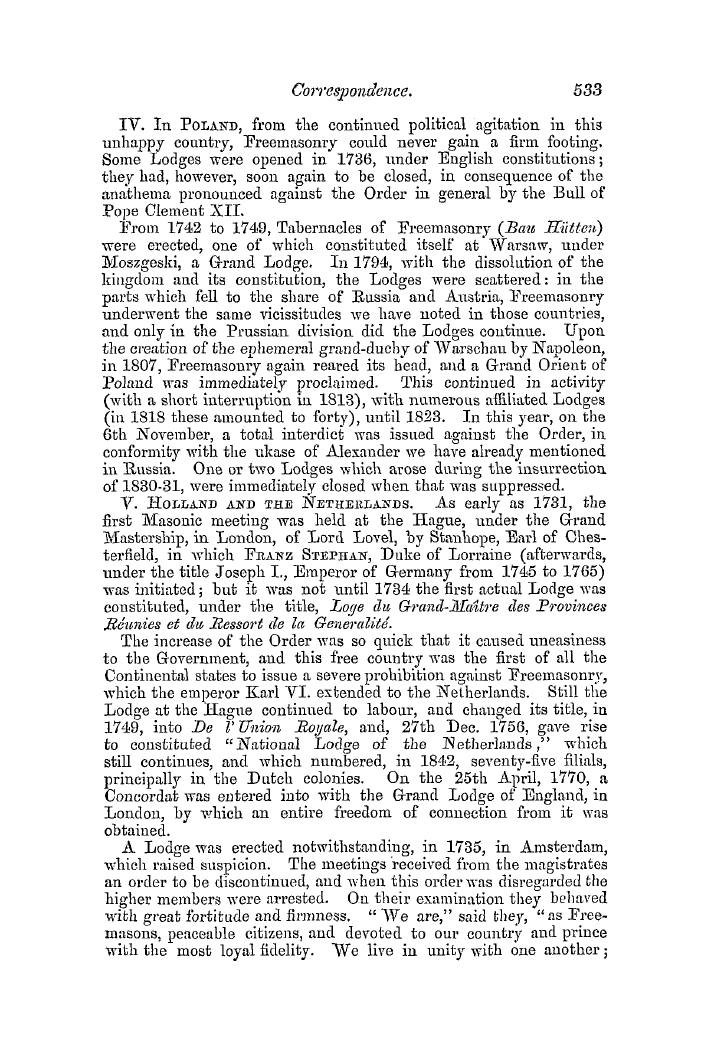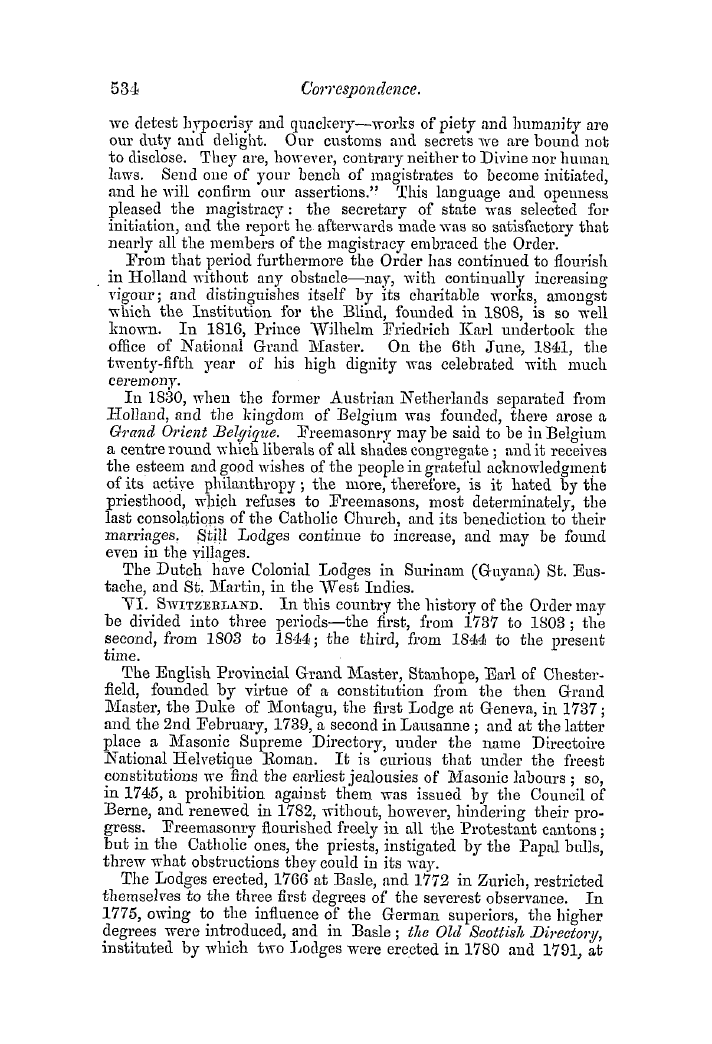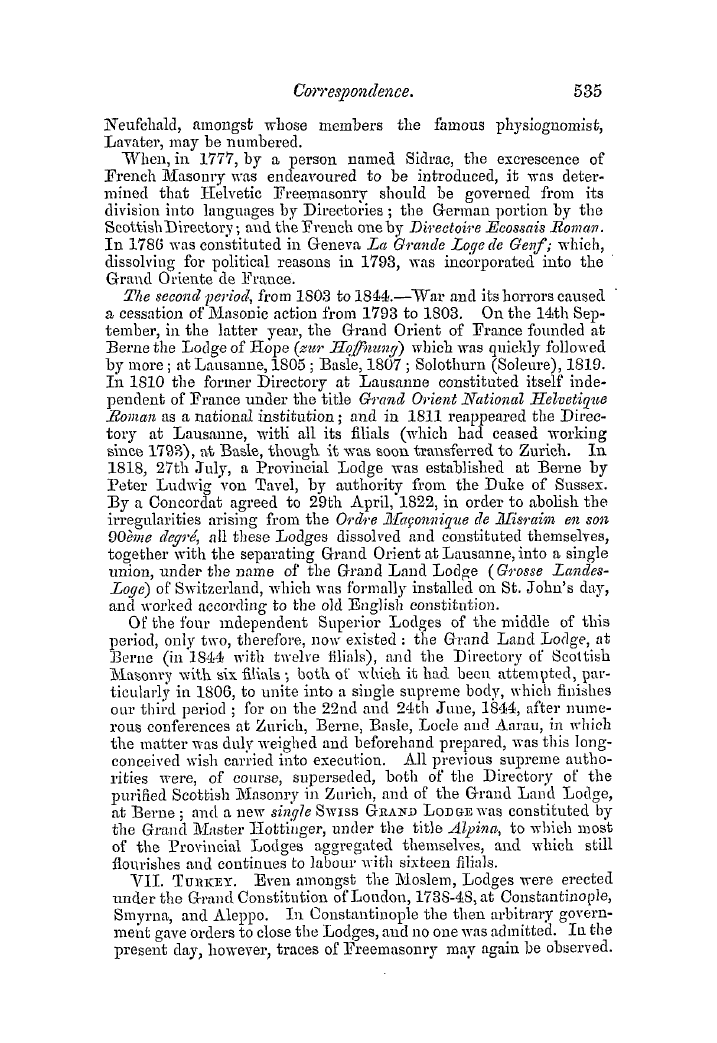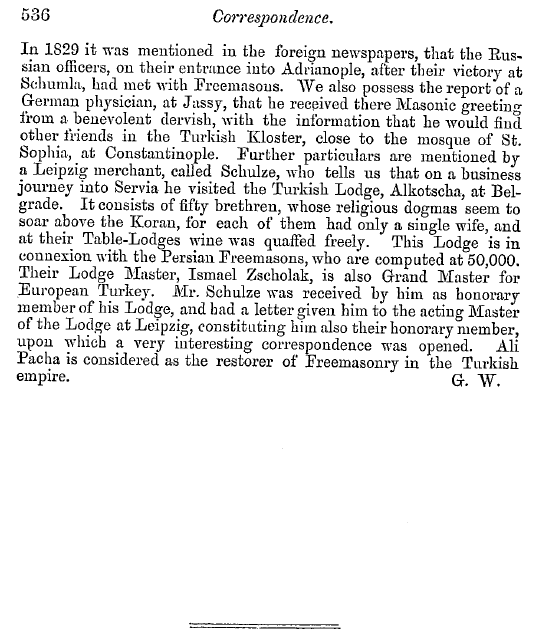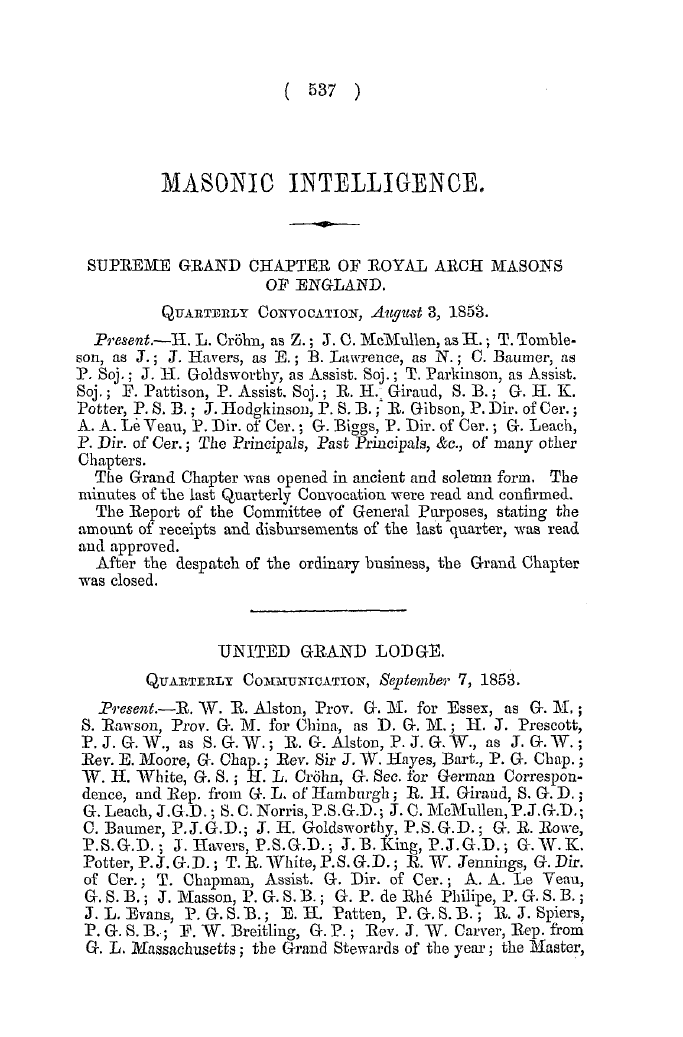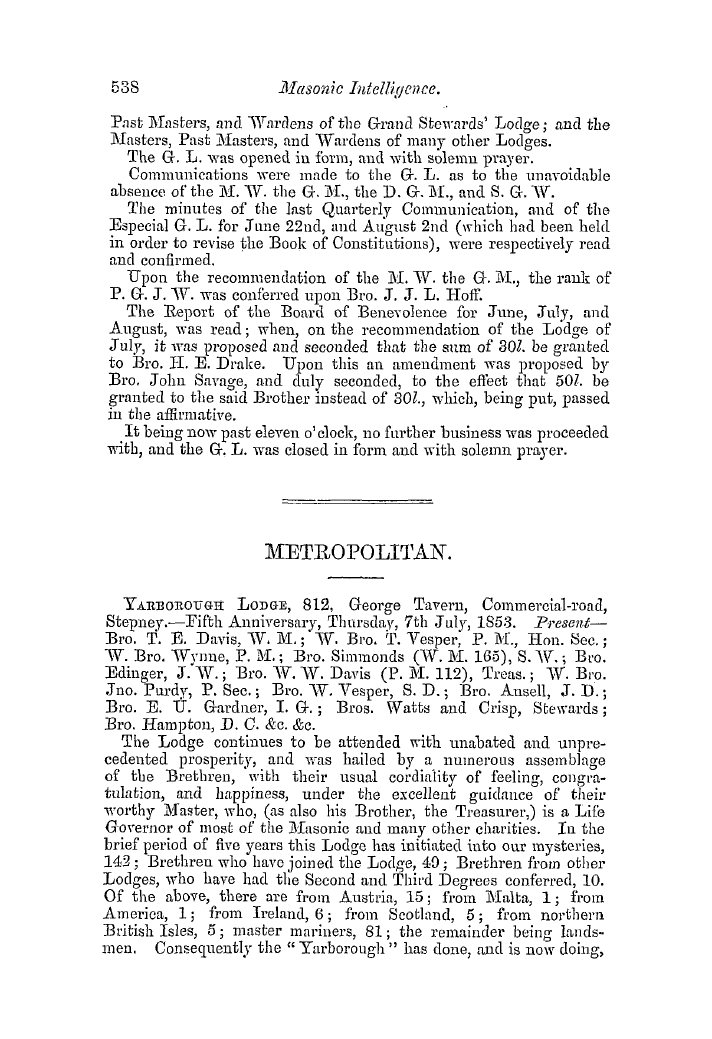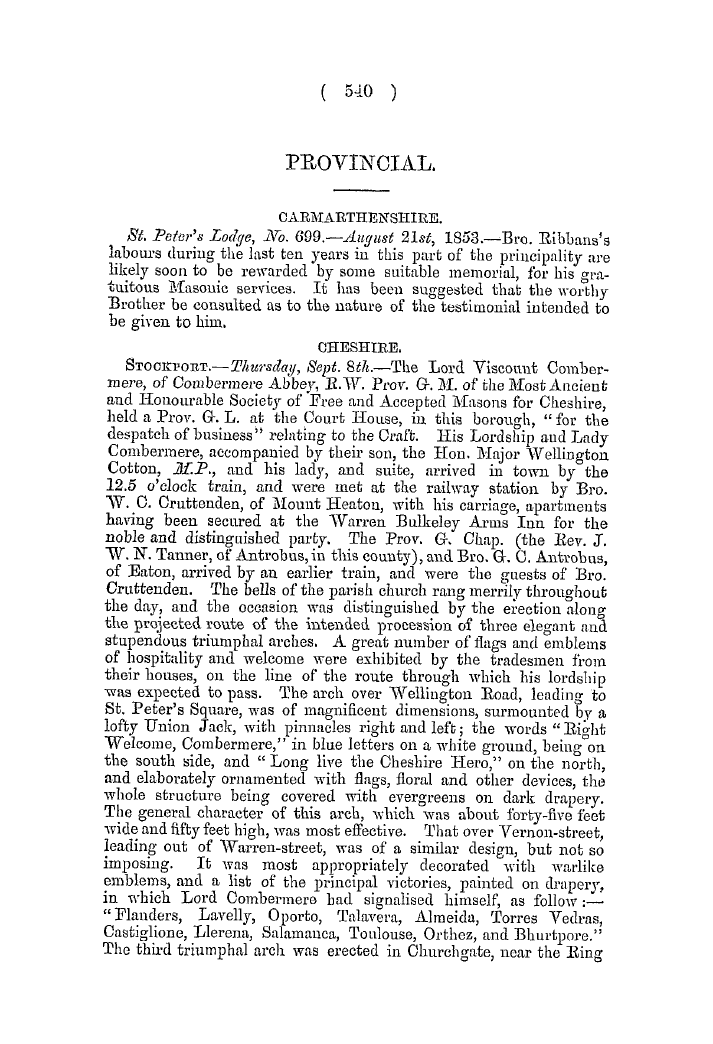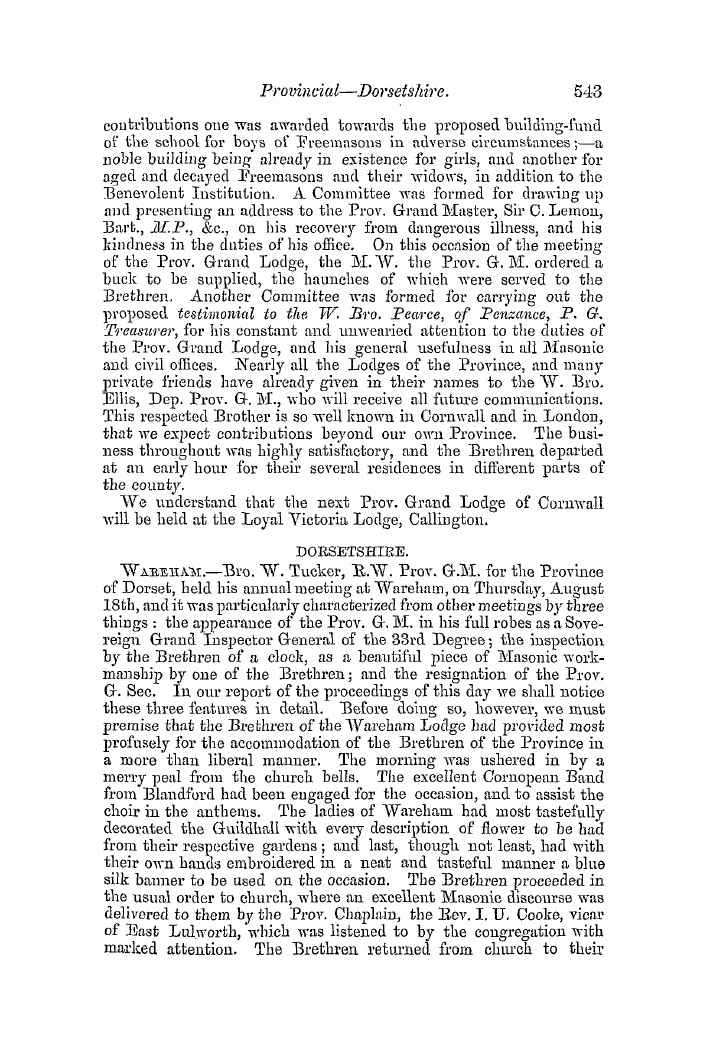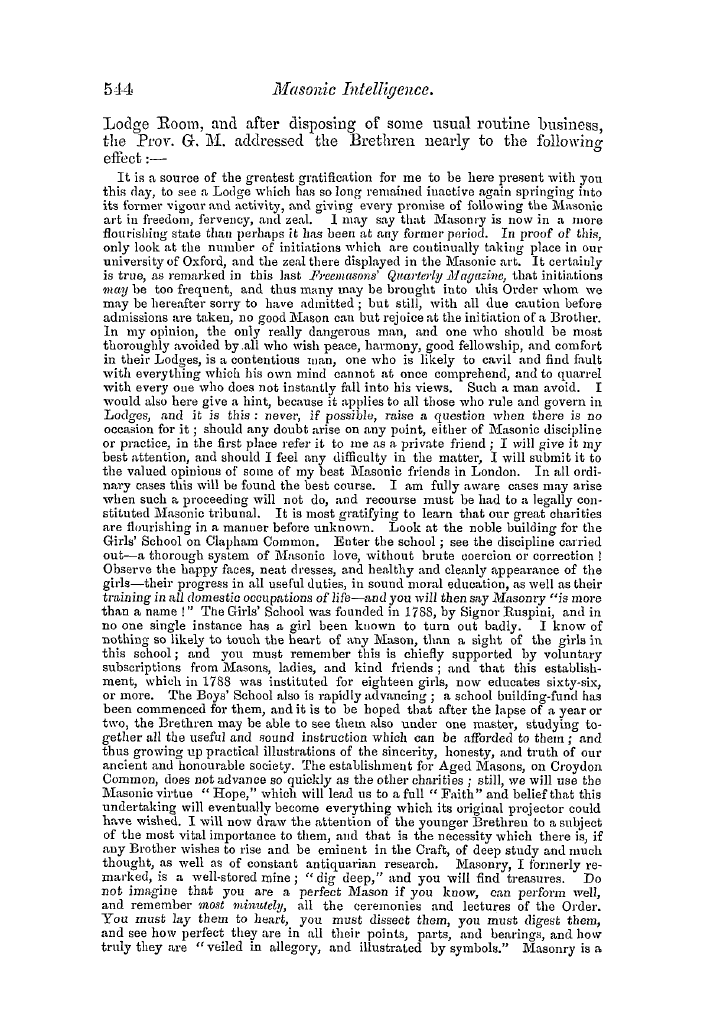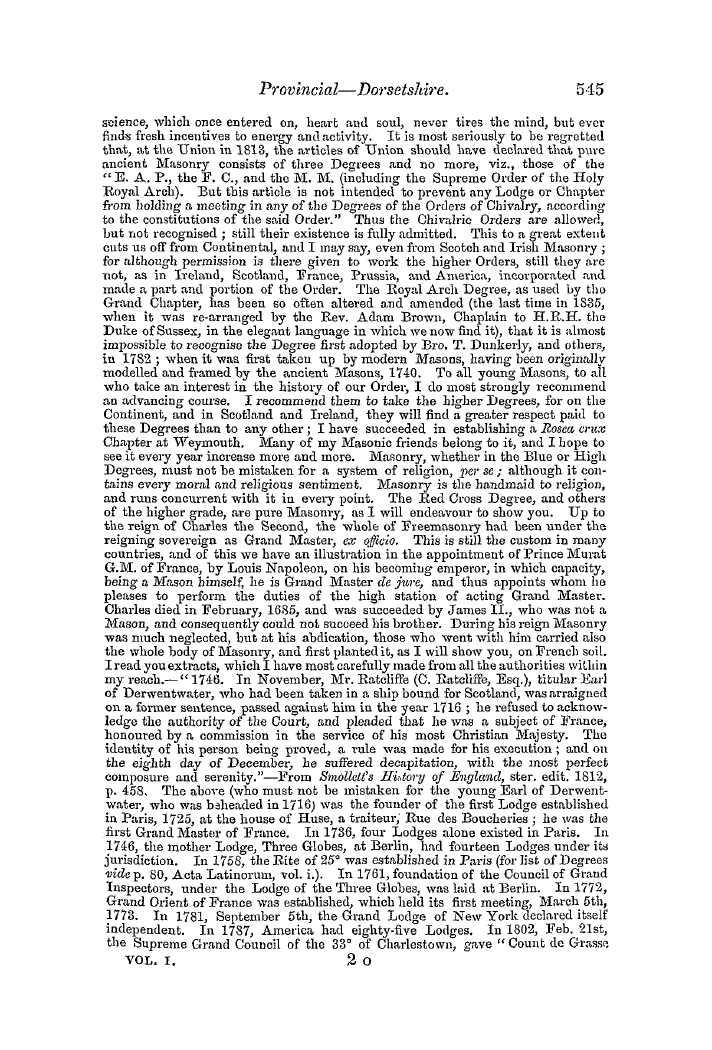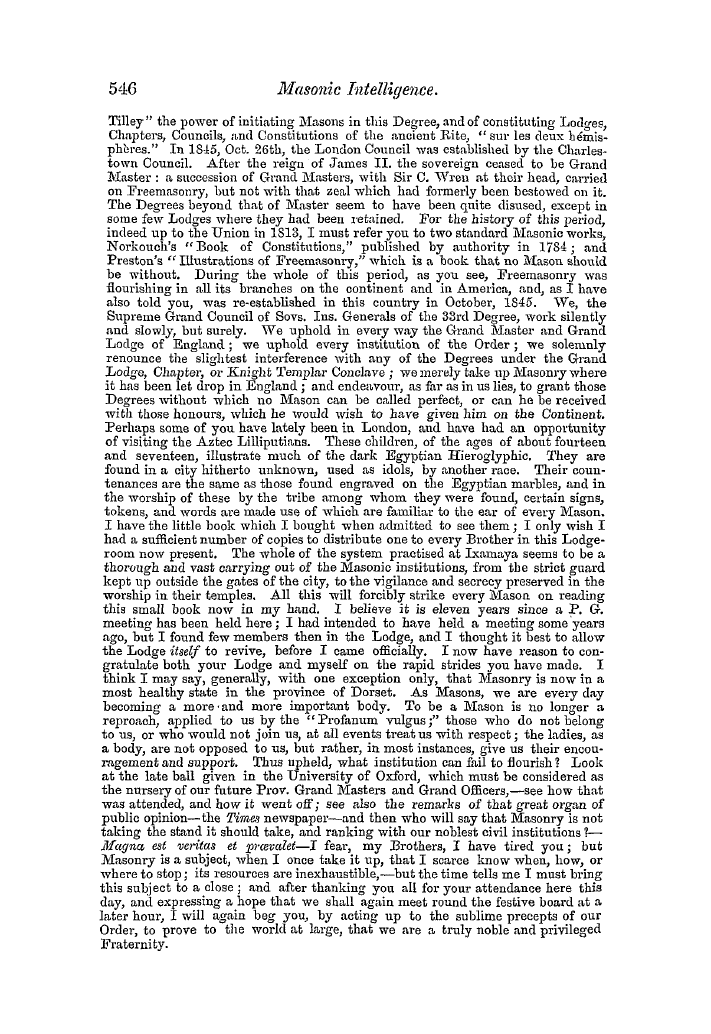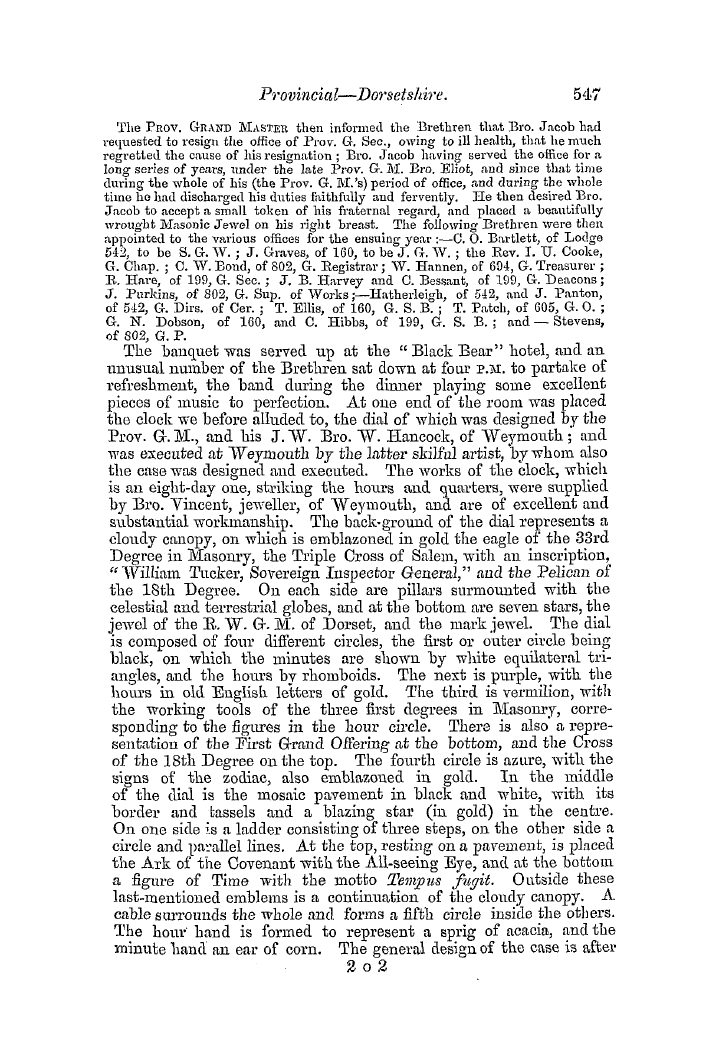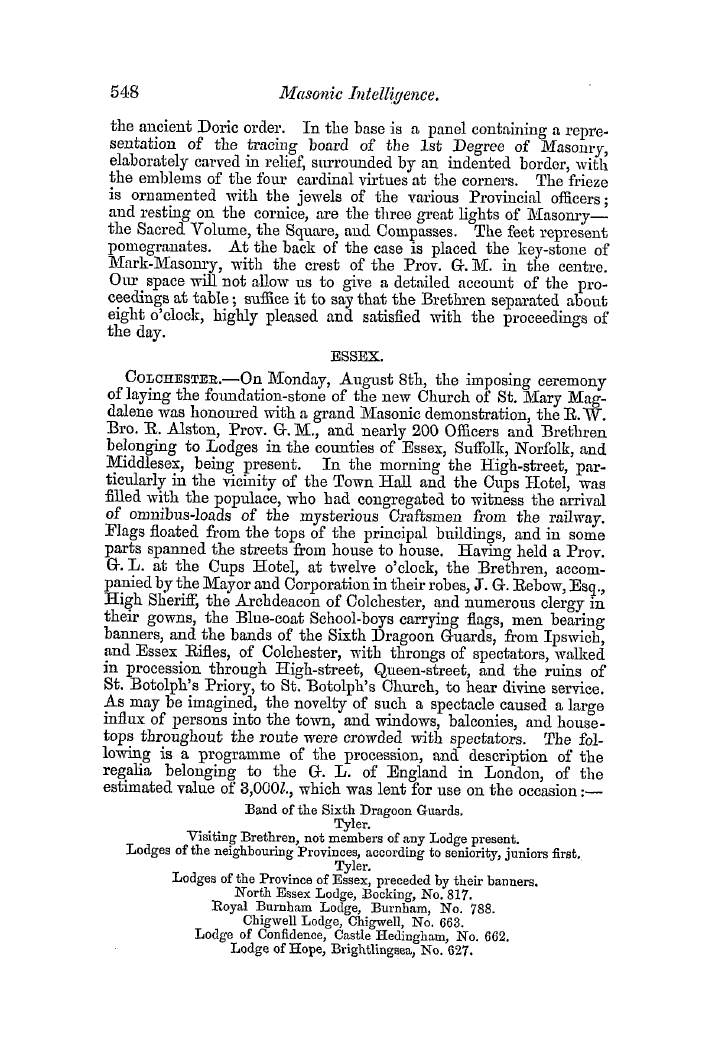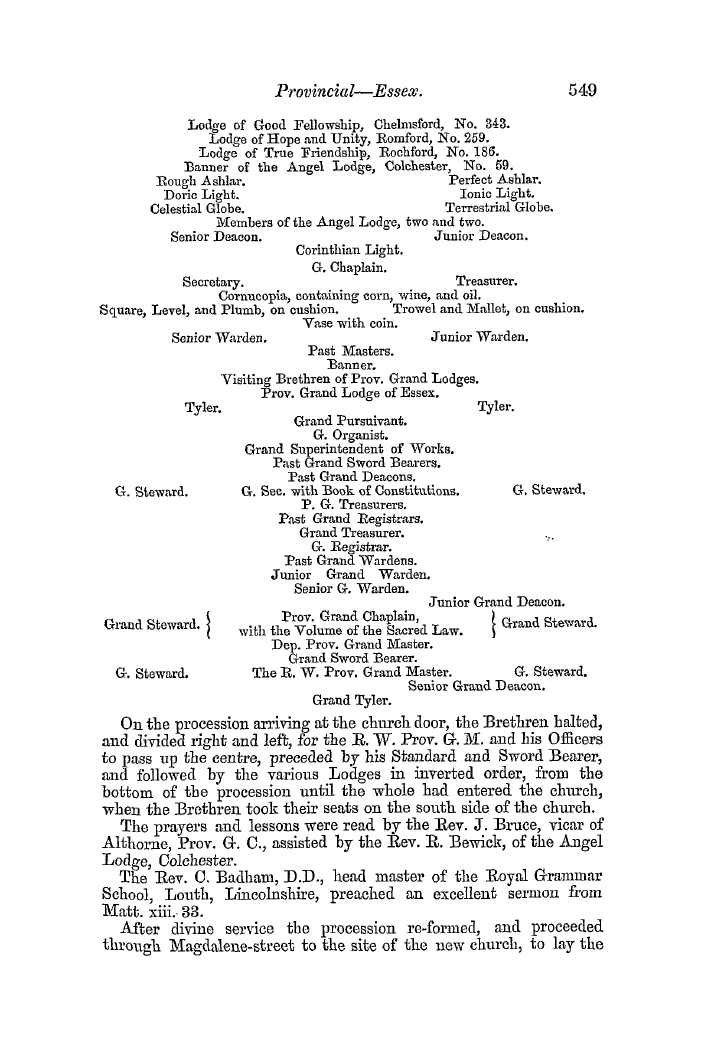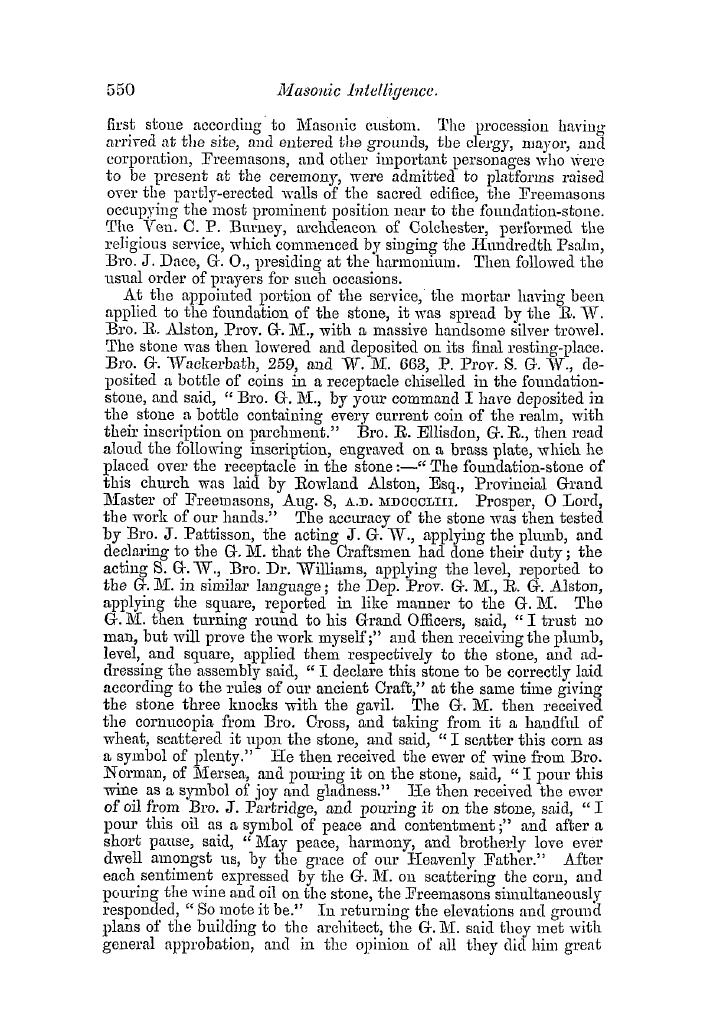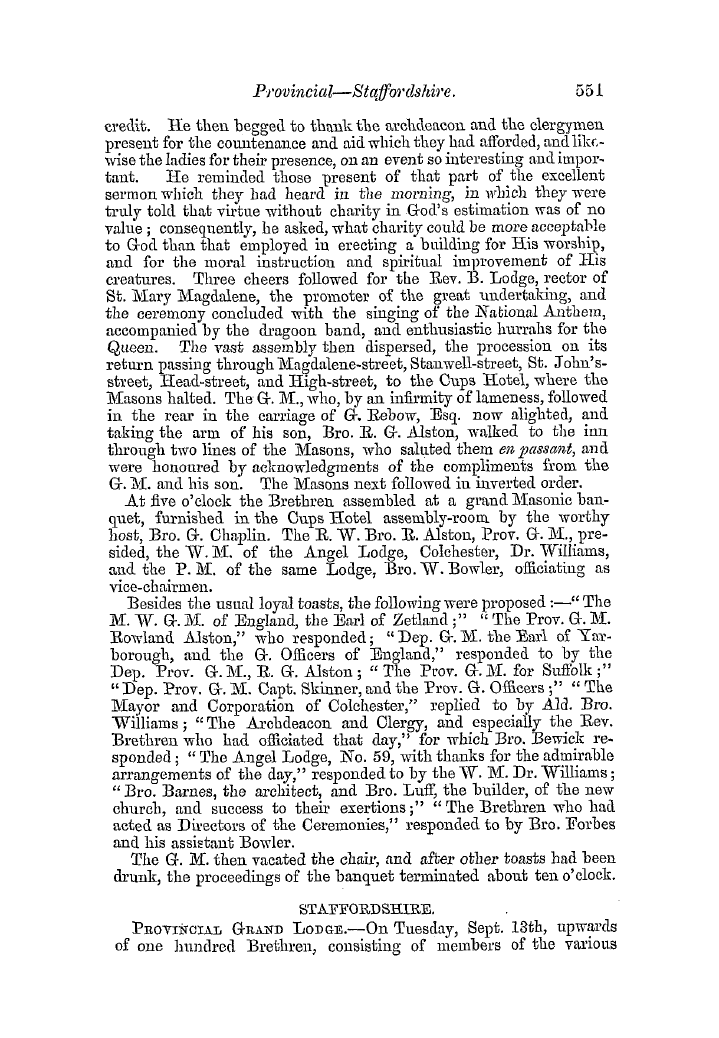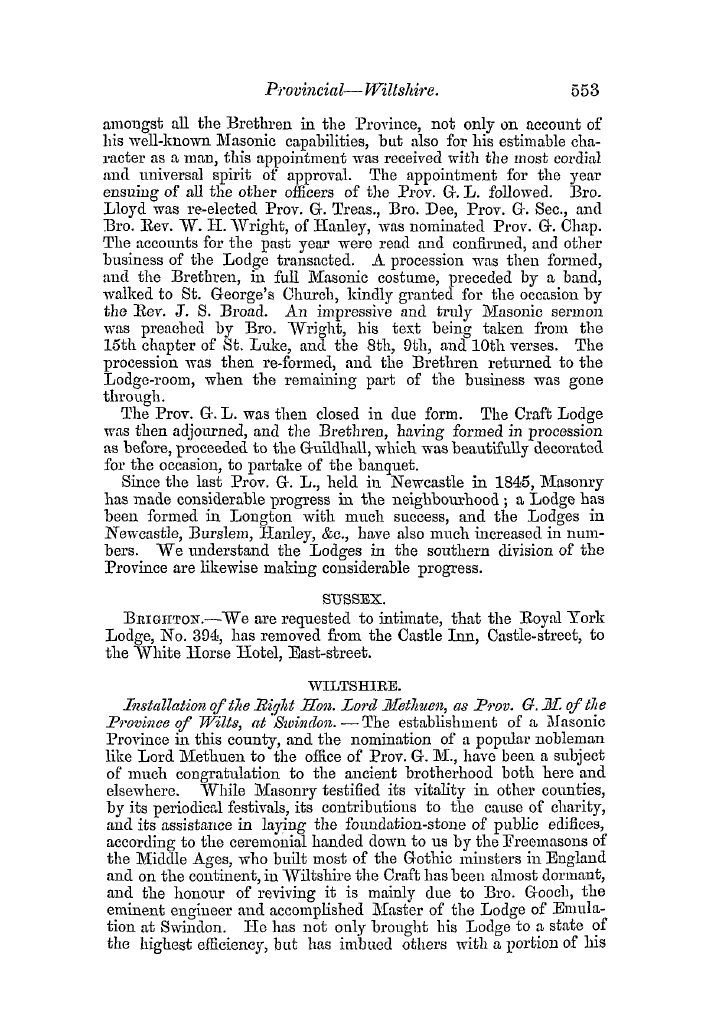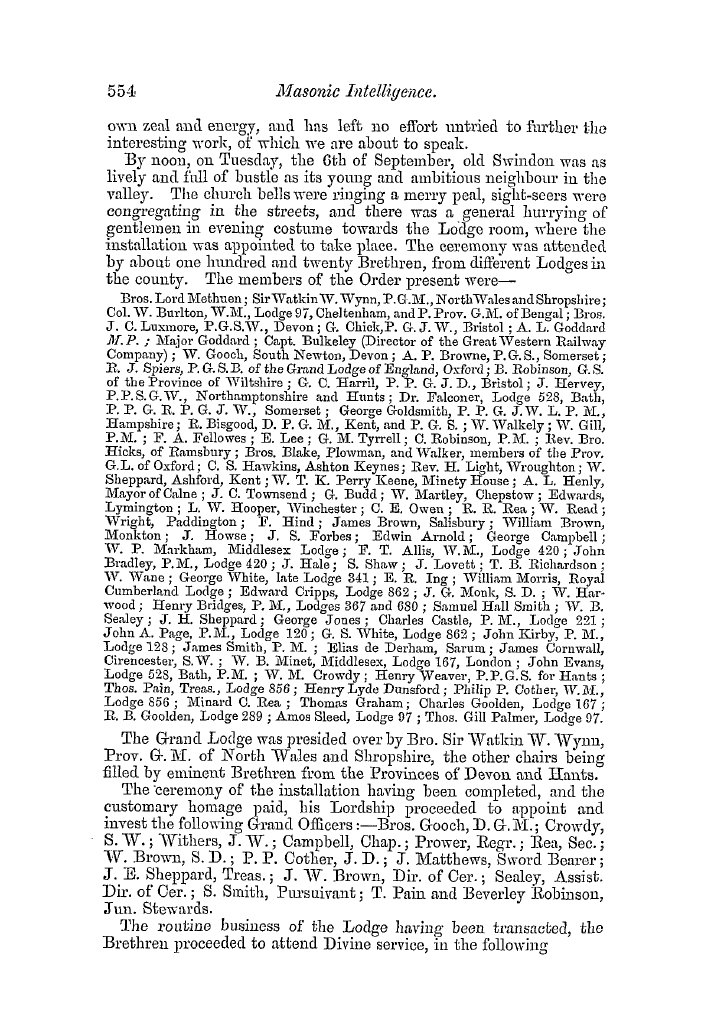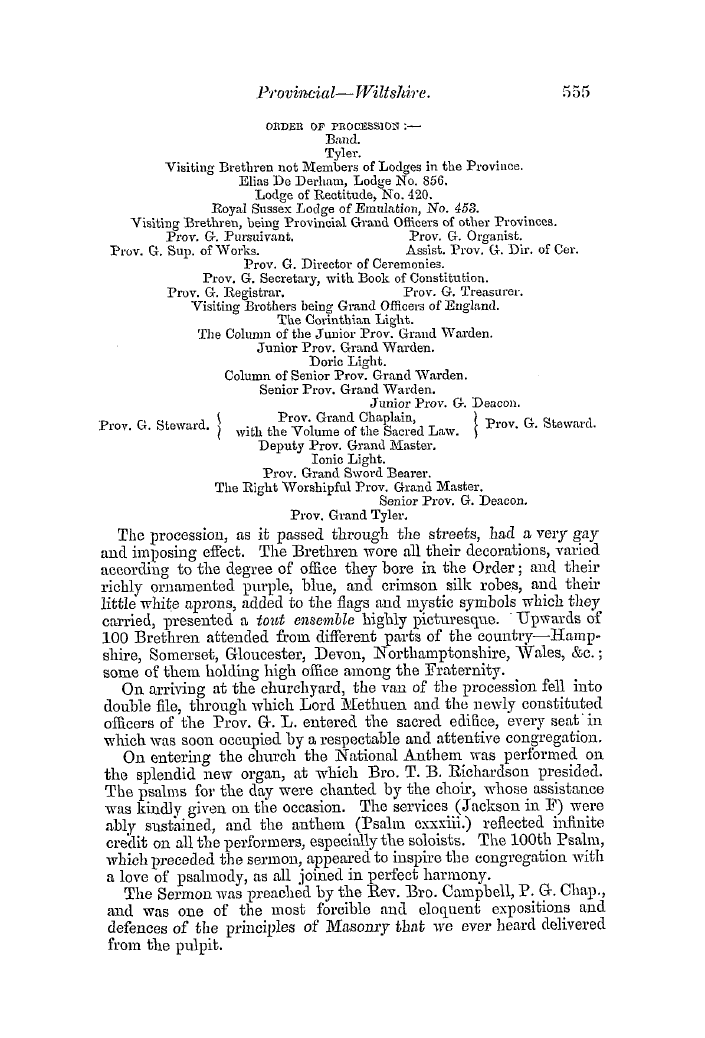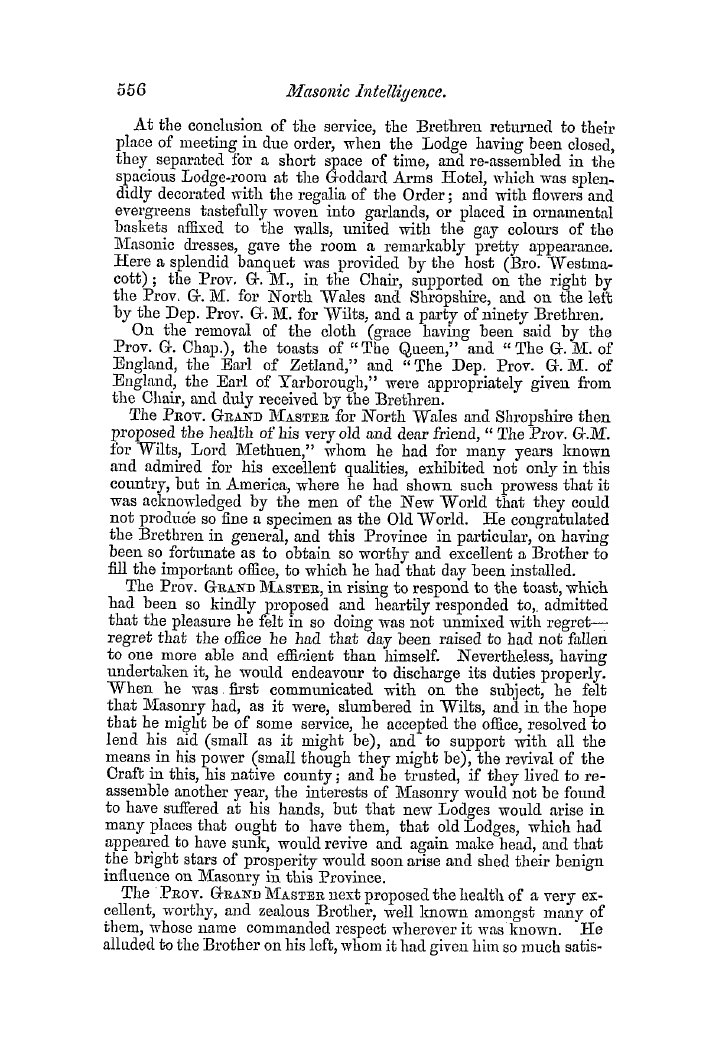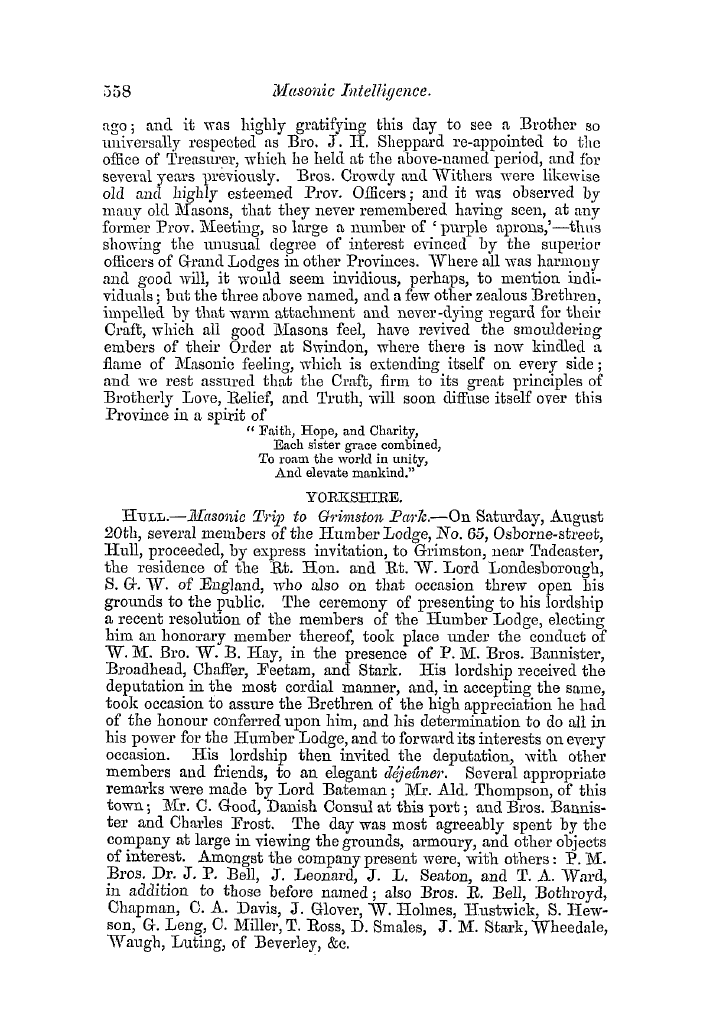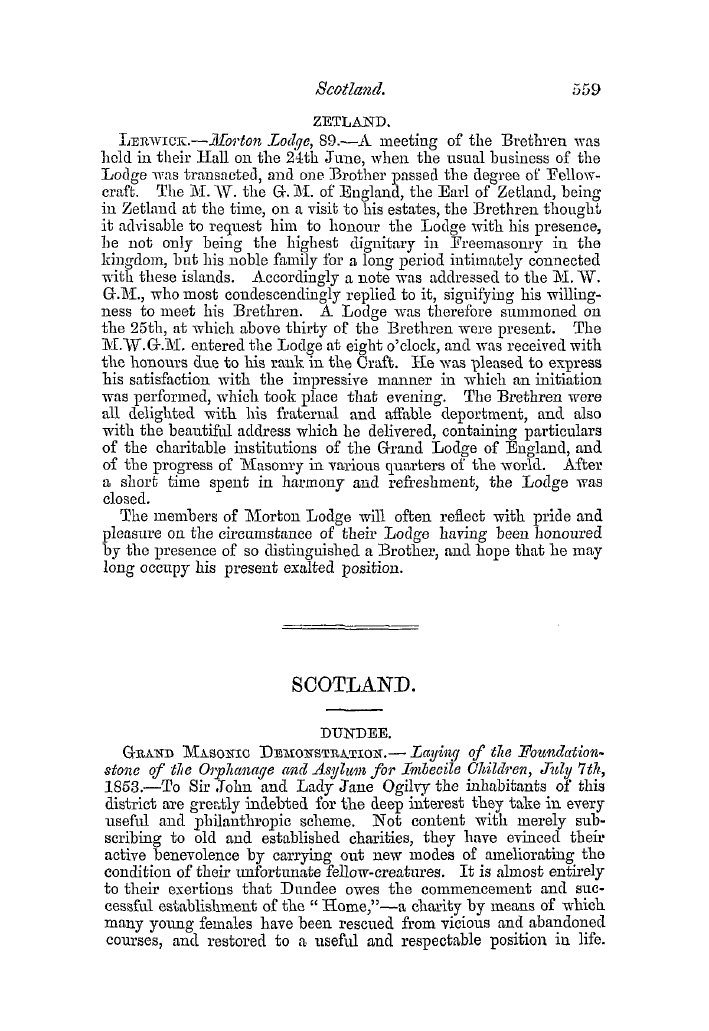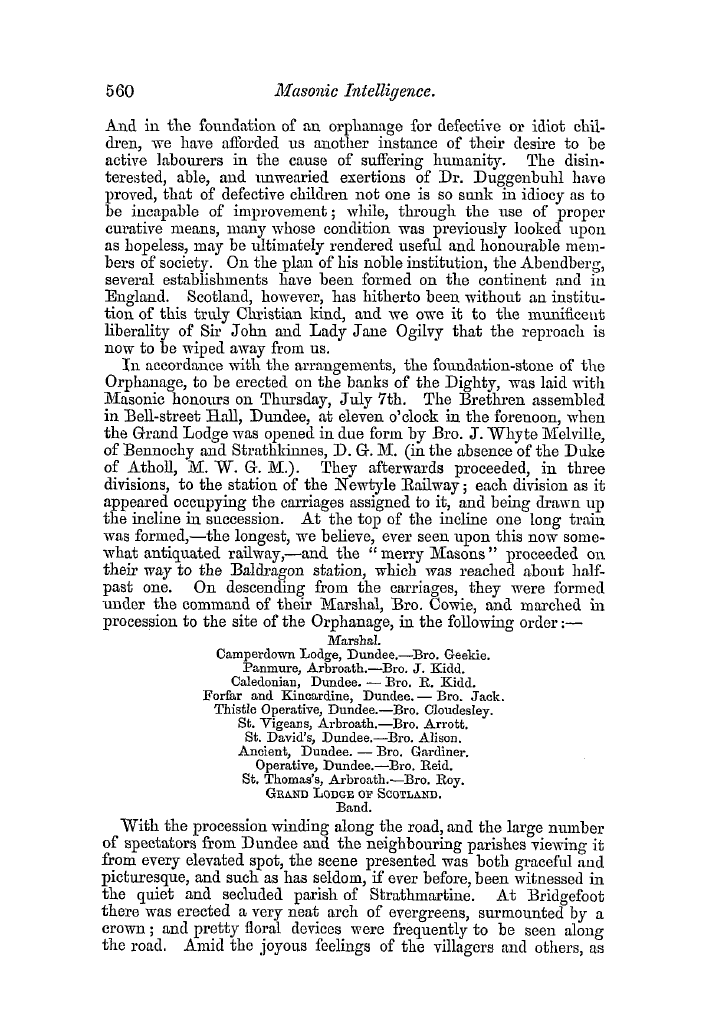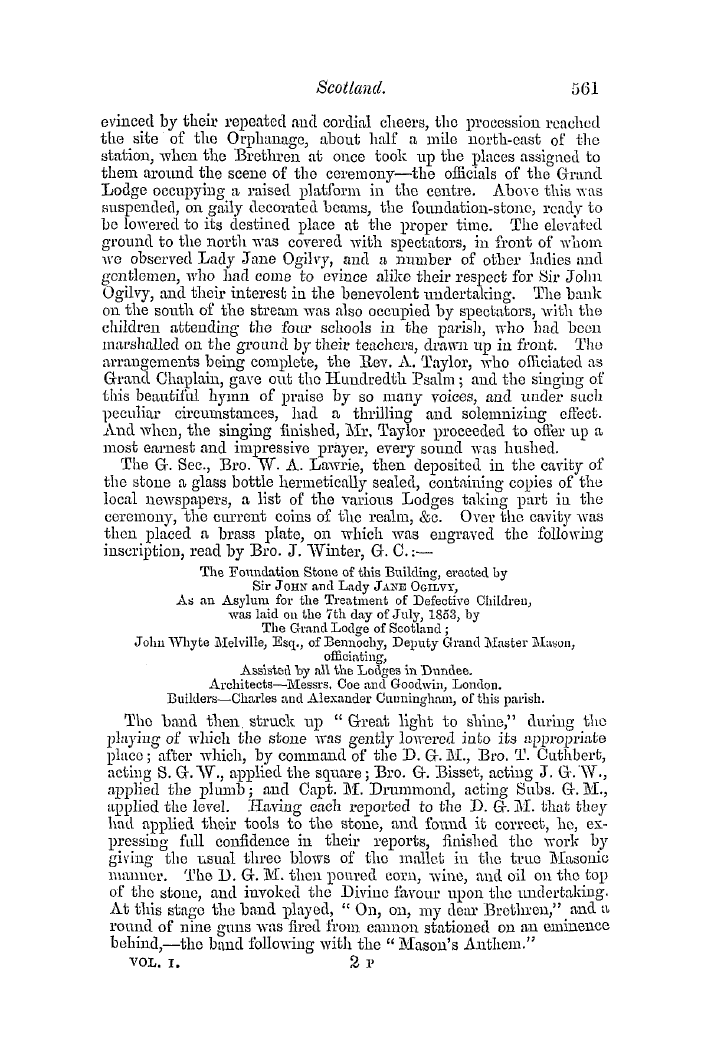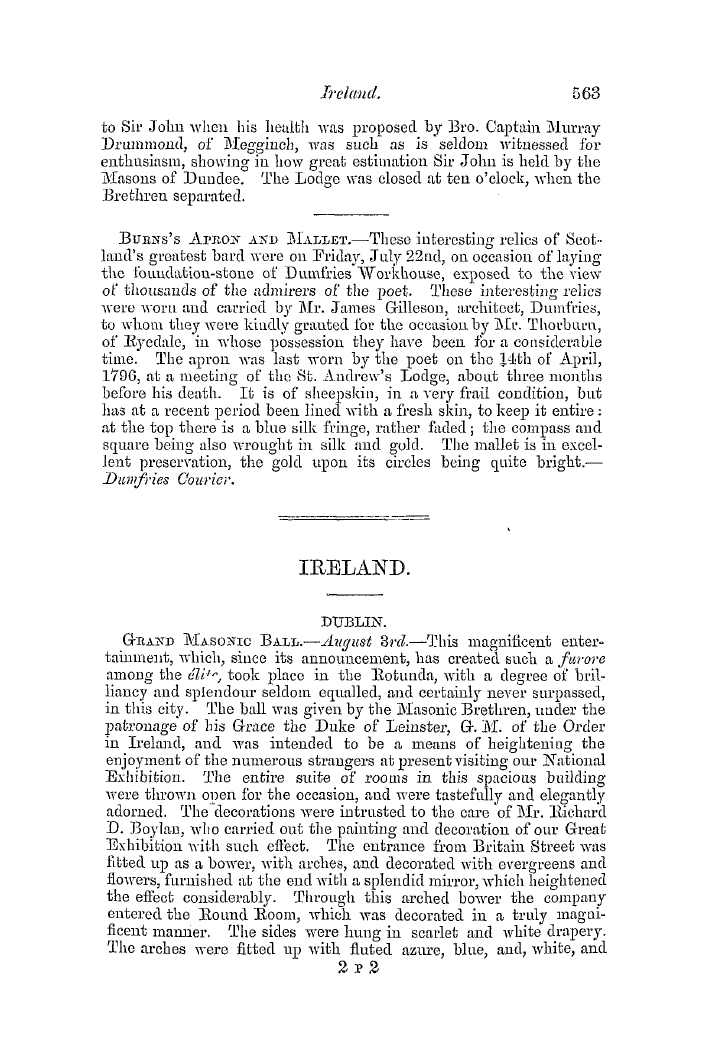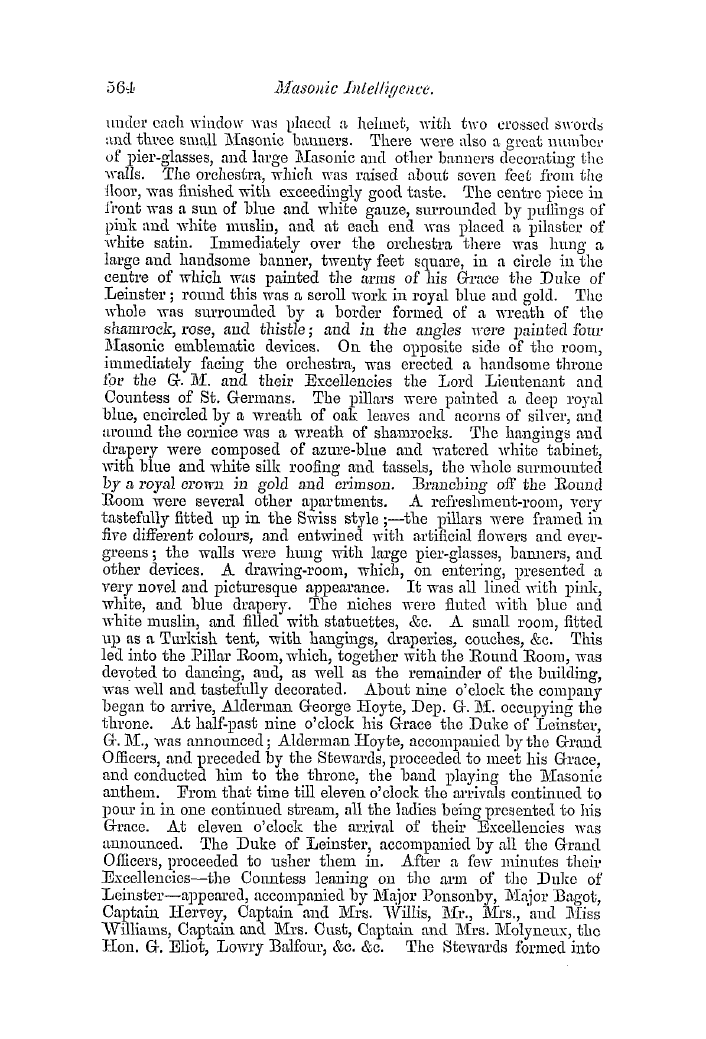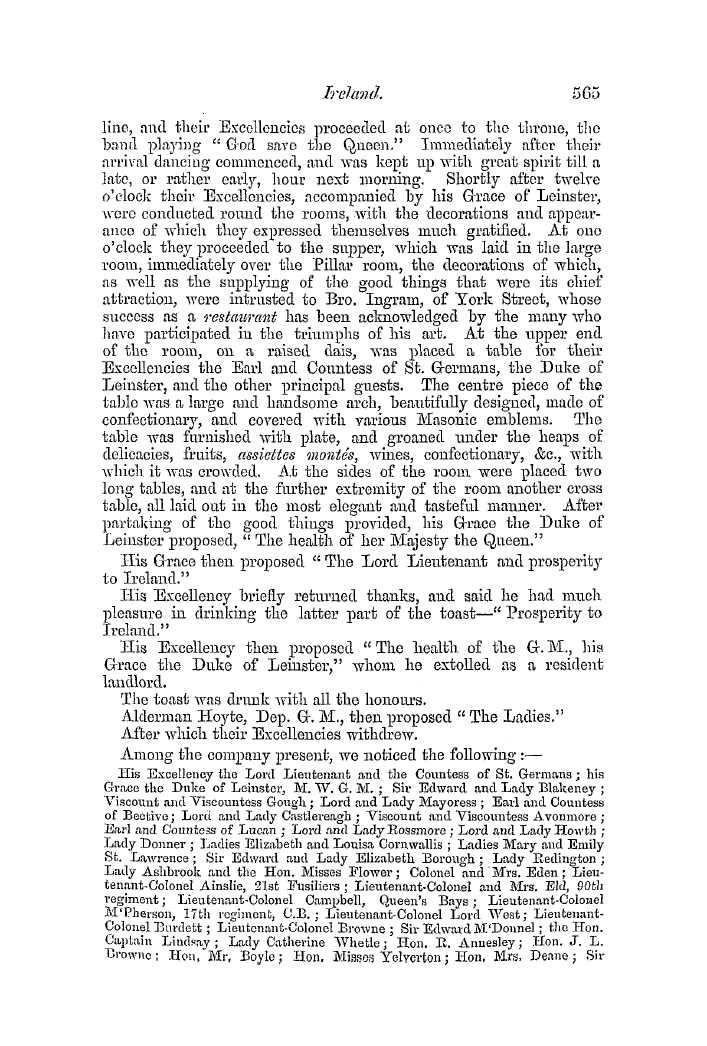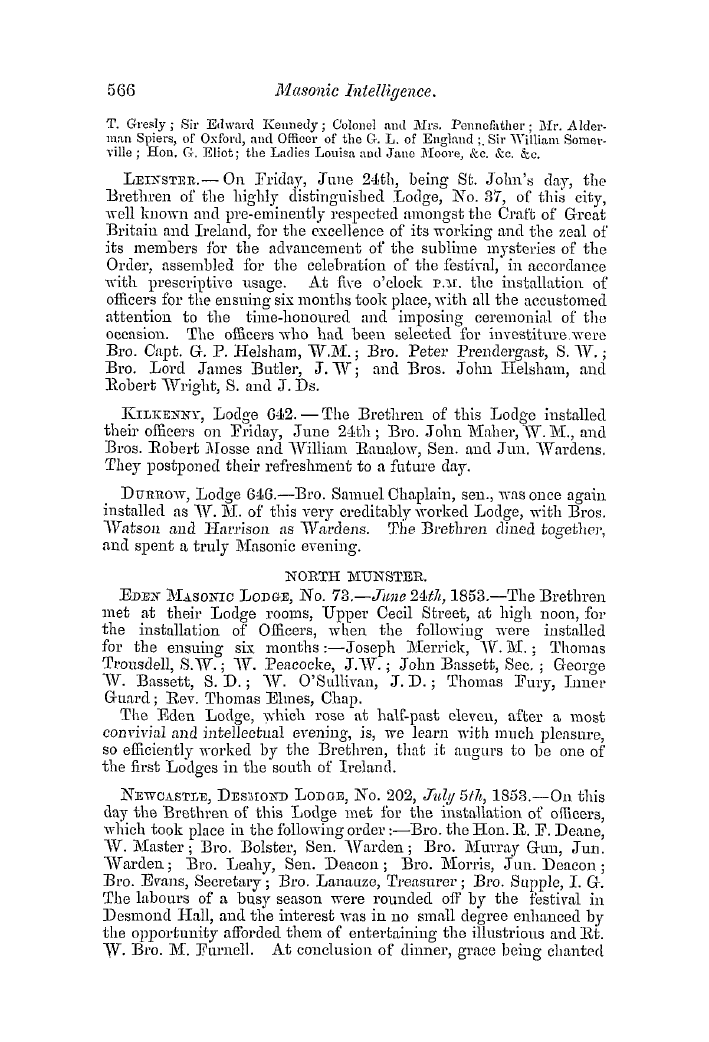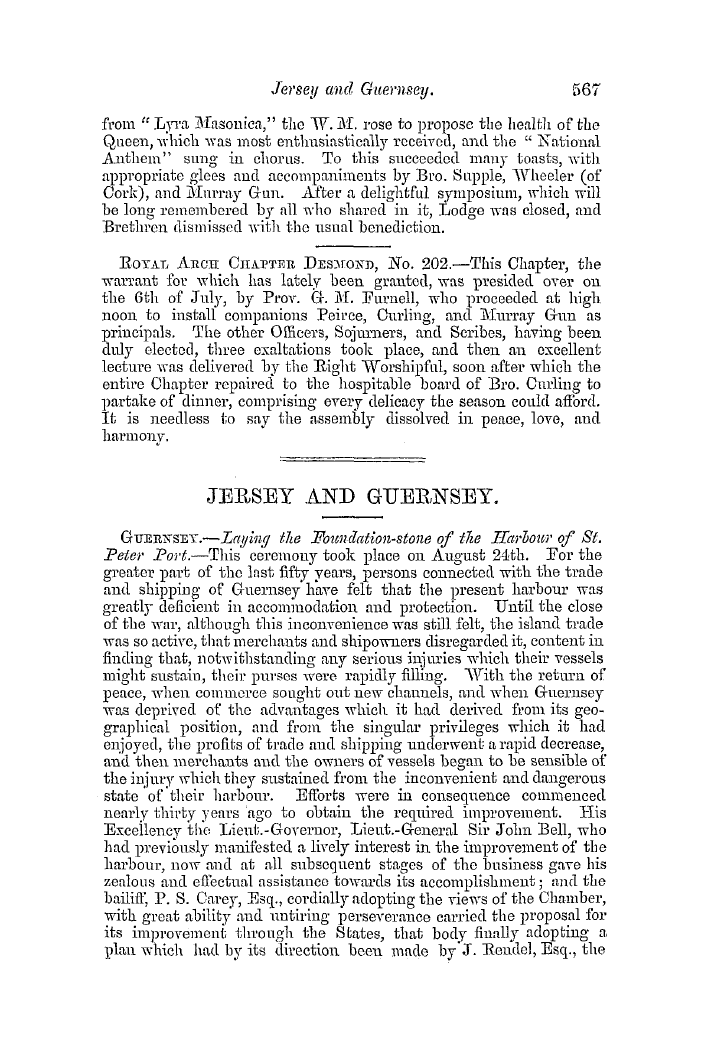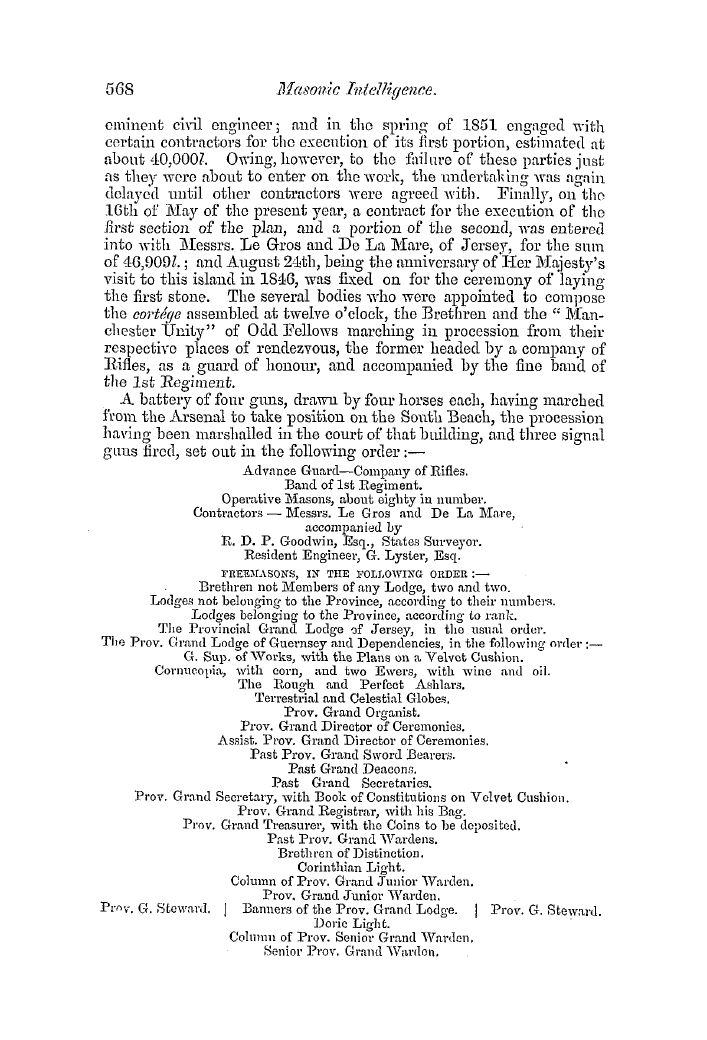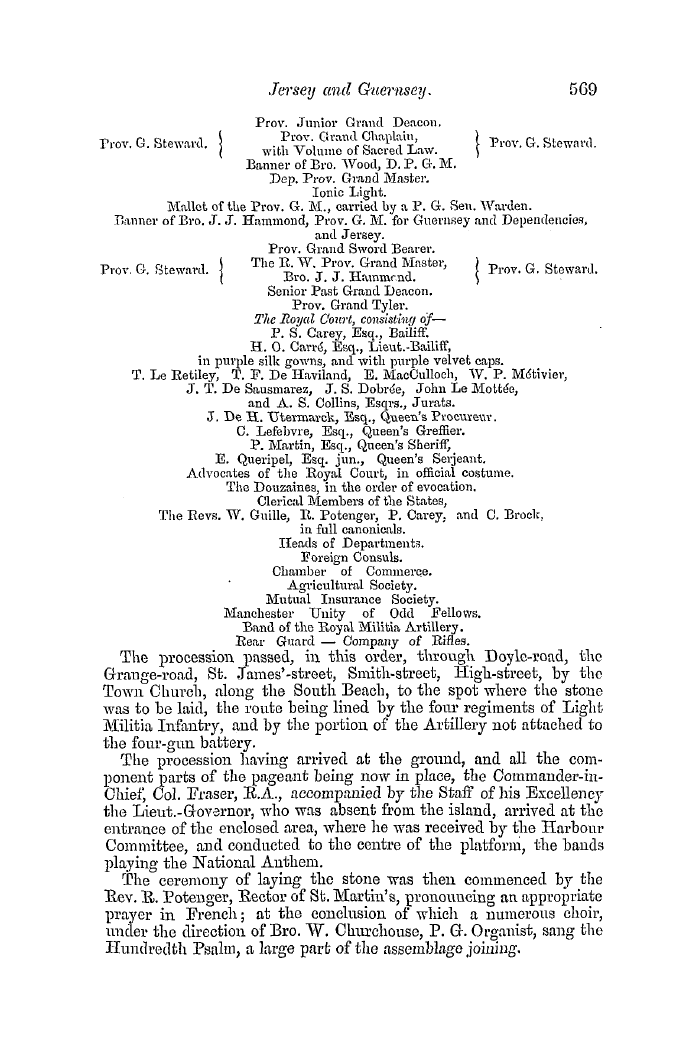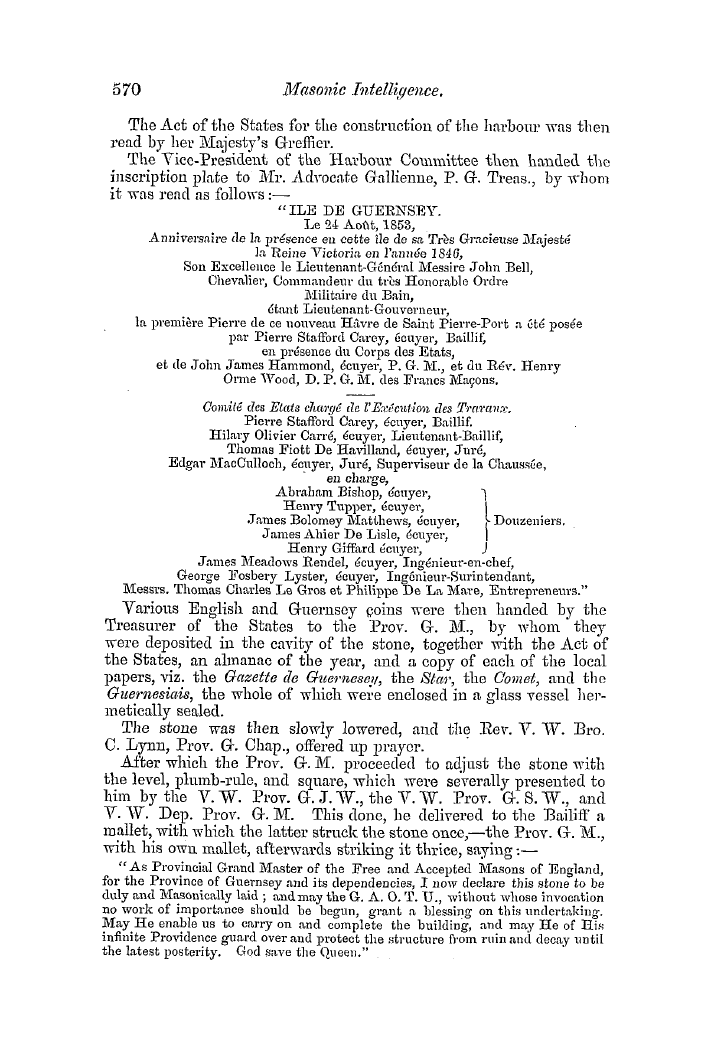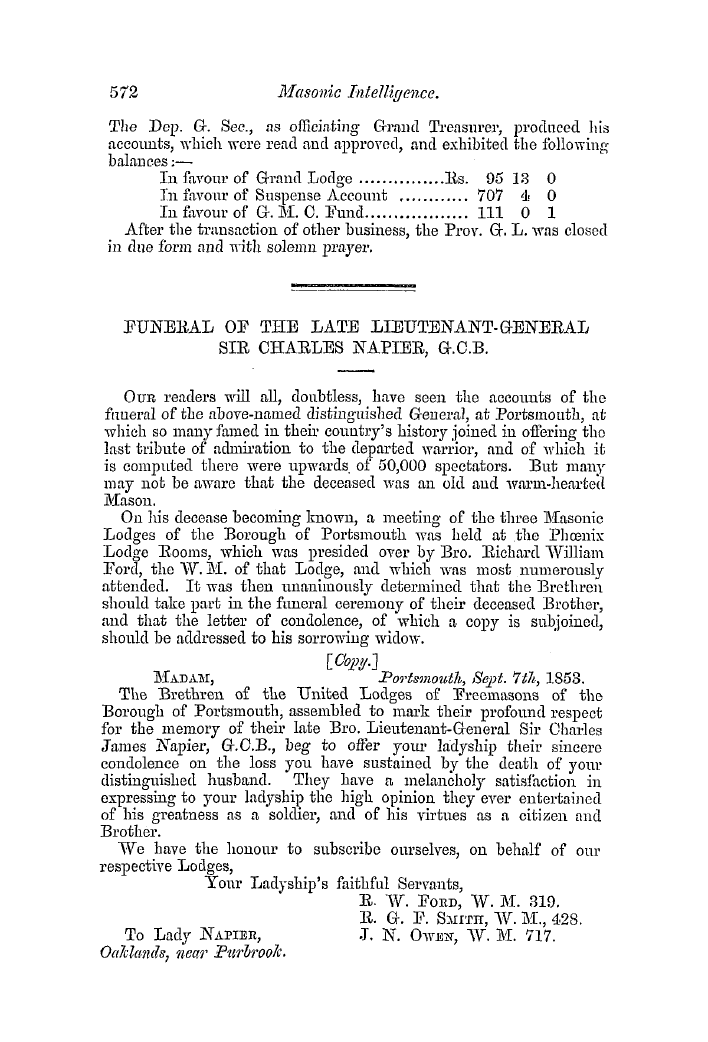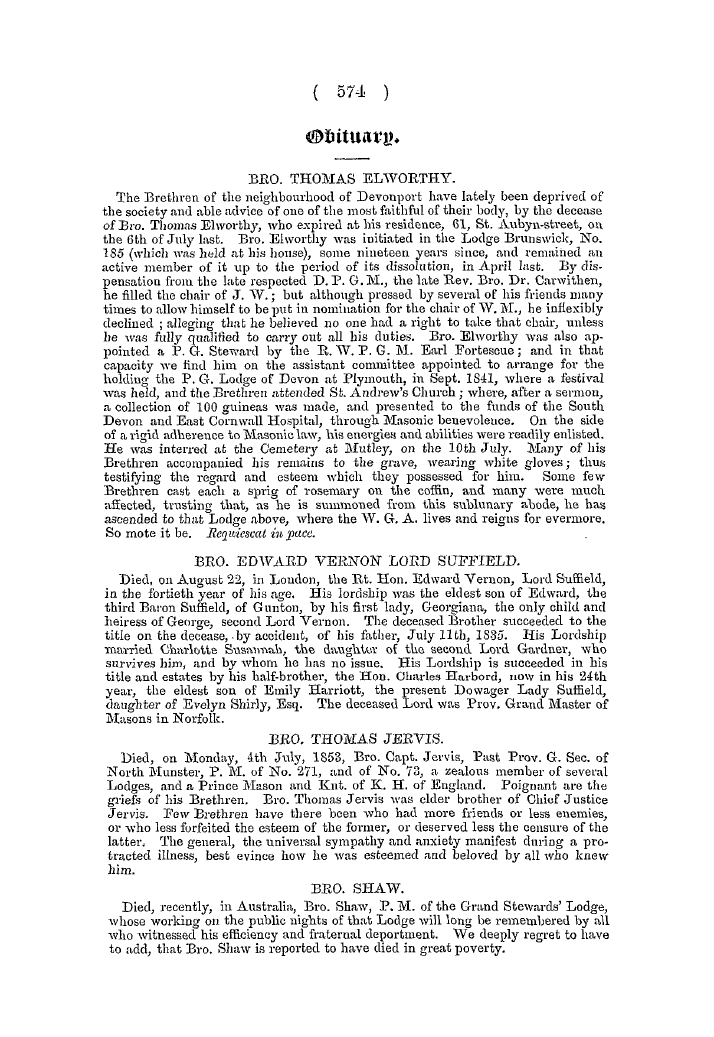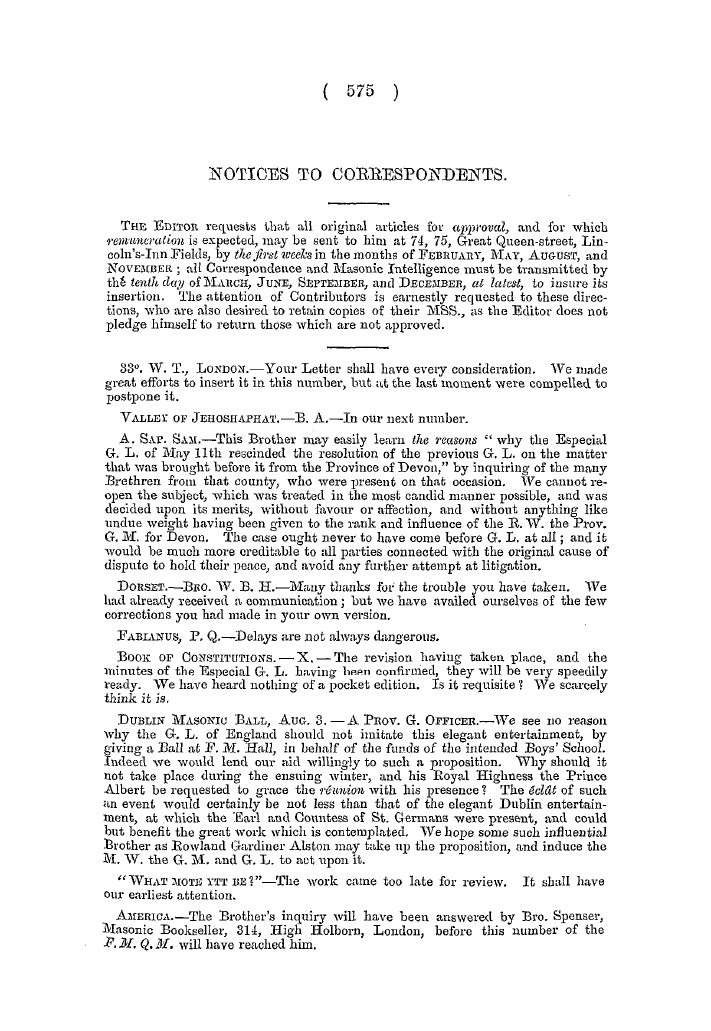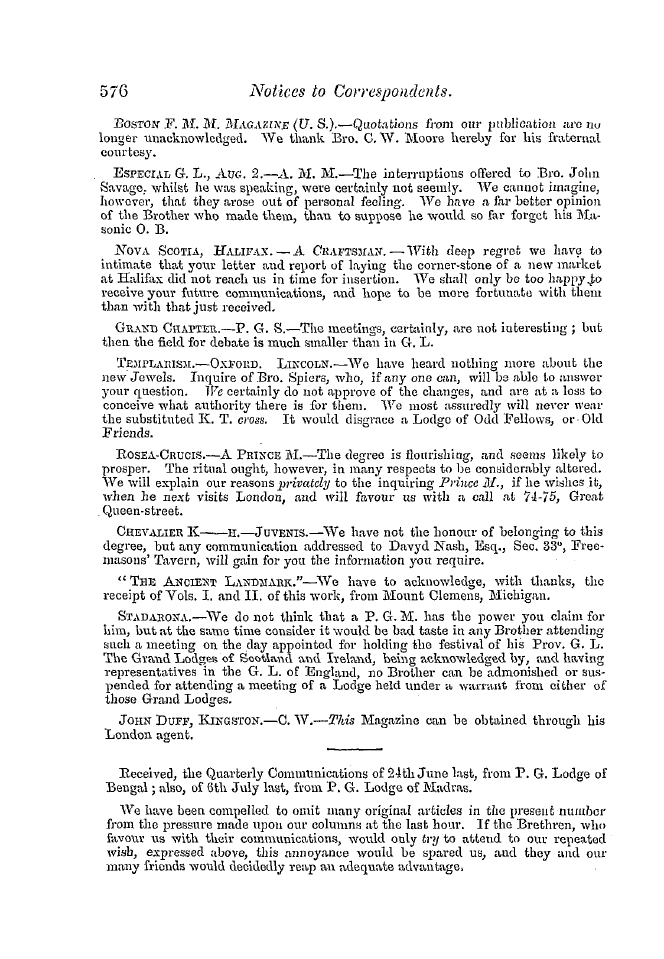-
Articles/Ads
Article THE CRYSTAL PALACE AND THE ARTS ← Page 4 of 11 →
Note: This text has been automatically extracted via Optical Character Recognition (OCR) software.
The Crystal Palace And The Arts
lover of the older architecture may find points of inferior merit , as compared with the grand features of ivorks of art in masonry , yet much withal that is strikingly beautiful and indeed sublime ; and in which the modern building , it must be confessed , attains something of Avhat has been so long sought for in the architecture of the present day—features strikingly its own . Yet , there are some drawbacks Avhich were ineA'itable in the
manner m which the building had grown up . The equal heights of story above story , caused by repetition of the same castings , are fatal to all grace from proportion of parts . Bulk in general , and breadth of base in supports , too , are so essential to the idea of stability , even with those who are well acquainted with the strength of materials—and leaAdng out of consideration certain
accidents in slender iron structures—that the building Avill in this respect , ever fail in one important particular . —The stunted towers at the intersections of the transepts , are positively unsightly , ancl can be improved only by the addition of domes , as in the manner suggested by Sir Charles Barry in the model which he exhibited last season at the Royal Academy .
On the other hand , we knoAV of no building in England , where the spreading base and foreground of the structure have been managed -with equal success . On the common neglect of thesepoints—indispensable to architectural effect—much might be said , —although in the present case , the massiveness of the architectural foreground is too harshly contrasted by the superficial character of the edifice itself . We may see also in the
combination of the structural forms of architecture with water and sytvan scenery , that of which the absence in other cases has , as much as anything else , led to errors in the design of public buildings , and to complaints from architects as to the comparative distaste for their art amongst the public . If our theory be correct , buildings such as Chatsworth , or Castle Howard , or
many of the old baronial halls , Avill always impress the beholder , when the architectm'e of confined streets may fail to do so . In fact , the office of art is not , as too often supposed , the imitation of nature : it has rather to effect contrast , and be so , productive of reciprocal advantage . The banks of rivers—sites like those of Greenwich Hospital ancl the Houses of Parliament , therefore
( other things being equal ) , are favourable to the estimation of architectural beauty , if only from their combination in the vieAV , with the water . Thus , fountains may be amongst the most pleasing objects ; and so , large open spaces are conducive to the same result , not only because they alloAV of a view from a proper distance , but because the eye can then take in a sufficient extent of the blue sky and rolling clouds . So ,
Note: This text has been automatically extracted via Optical Character Recognition (OCR) software.
The Crystal Palace And The Arts
lover of the older architecture may find points of inferior merit , as compared with the grand features of ivorks of art in masonry , yet much withal that is strikingly beautiful and indeed sublime ; and in which the modern building , it must be confessed , attains something of Avhat has been so long sought for in the architecture of the present day—features strikingly its own . Yet , there are some drawbacks Avhich were ineA'itable in the
manner m which the building had grown up . The equal heights of story above story , caused by repetition of the same castings , are fatal to all grace from proportion of parts . Bulk in general , and breadth of base in supports , too , are so essential to the idea of stability , even with those who are well acquainted with the strength of materials—and leaAdng out of consideration certain
accidents in slender iron structures—that the building Avill in this respect , ever fail in one important particular . —The stunted towers at the intersections of the transepts , are positively unsightly , ancl can be improved only by the addition of domes , as in the manner suggested by Sir Charles Barry in the model which he exhibited last season at the Royal Academy .
On the other hand , we knoAV of no building in England , where the spreading base and foreground of the structure have been managed -with equal success . On the common neglect of thesepoints—indispensable to architectural effect—much might be said , —although in the present case , the massiveness of the architectural foreground is too harshly contrasted by the superficial character of the edifice itself . We may see also in the
combination of the structural forms of architecture with water and sytvan scenery , that of which the absence in other cases has , as much as anything else , led to errors in the design of public buildings , and to complaints from architects as to the comparative distaste for their art amongst the public . If our theory be correct , buildings such as Chatsworth , or Castle Howard , or
many of the old baronial halls , Avill always impress the beholder , when the architectm'e of confined streets may fail to do so . In fact , the office of art is not , as too often supposed , the imitation of nature : it has rather to effect contrast , and be so , productive of reciprocal advantage . The banks of rivers—sites like those of Greenwich Hospital ancl the Houses of Parliament , therefore
( other things being equal ) , are favourable to the estimation of architectural beauty , if only from their combination in the vieAV , with the water . Thus , fountains may be amongst the most pleasing objects ; and so , large open spaces are conducive to the same result , not only because they alloAV of a view from a proper distance , but because the eye can then take in a sufficient extent of the blue sky and rolling clouds . So ,




























































